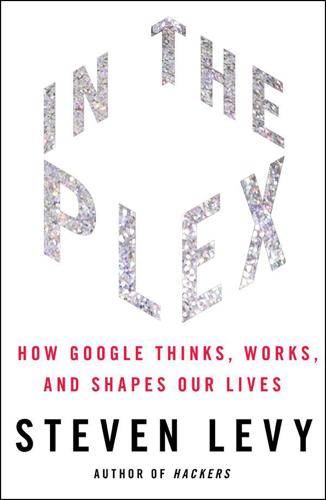
In the Plex: How Google Thinks, Works, and Shapes Our Lives
by
Steven Levy
Published 12 Apr 2011
Since he didn’t have the assistance, the resources, the time, or the inclination, he didn’t attempt to index the entire web for his link analysis. Instead he did a kind of prewash. He typed a query into AltaVista, took the first two hundred results, and then used that subset for his own search. Interestingly, the best results for the query were often not included in those AltaVista solutions. For instance, if you typed in “newspaper,” Alta-Vista would not give you links for The New York Times or The Washington Post. “That’s not surprising, because AltaVista is about matching strings, and unless The New York Times happened to say, ‘I’m a newspaper!’ AltaVista is not going to find it,” Kleinberg explains. But, he suspected, he’d have more luck if he checked out what those 200 sites pointed to.
…
They argued that there was no way to make money from a search engine but relented when Monier sold them on the public relations aspect. (The system would be a testament to DEC’s powerful new Alpha processing chip.) On launch day, AltaVista had 16 million documents in its indexes, easily besting anything else on the net. “The big ones then had maybe a million pages,” says Monier. That was the power of AltaVista: its breadth. When DEC opened it to outsiders on December 15, 1995, nearly 300,000 people tried it out. They were dazzled. AltaVista’s actual search quality techniques—what determined the ranking of results—were based on traditional information retrieval (IR) algorithms. Many of those algorithms arose from the work of one man, a refugee from Nazi Germany named Gerard Salton, who had come to America, got a PhD at Harvard, and moved to Cornell University, where he cofounded its computer science department.
…
The World Wide Web was about to change that, but the academics didn’t know it—and neither did AltaVista. While its creators had the insight to gather all of the web, they missed the opportunity to take advantage of the link structure. “The innovation was that I was not afraid to fetch as much of the web as I could, store it in one place, and have a really fast response time. That was the novelty,” says Monier. Meanwhile, AltaVista analyzed what was on each individual page—using metrics like how many times each word appeared—to see if a page was a relevant match to a given keyword in a query. Even though there was no clear way to make money from search, AltaVista had a number of competitors.

The Invisible Web: Uncovering Information Sources Search Engines Can't See
by
Gary Price
,
Chris Sherman
and
Danny Sullivan
Published 2 Jan 2003
Table 1.1 A Timeline of Internet Search Technologies Year 1945 1965 1972 1986 1990 1991 1993 1994 1995 1996 1997 1998 1999 2000+ Search Service Vannevar Bush Proposes “MEMEX” Hypertext Coined by Ted Nelson Dialog—First Commercial Proprietary System OWL Guide Hypermedia Browser Archie for FTP Search, Tim Berners-Lee creates the Web Gopher: WAIS Distributed Search ALIWEB (Archie Linking), WWWWander, JumpStation, WWWWorm EINet Galaxy, WebCrawler, Lycos, Yahoo! Infoseek, SavvySearch, AltaVista, MetCrawler, Excite HotBot, LookSmart NorthernLight Google, InvisibleWeb.com FAST Hundreds of search tools 16 The Invisible Web In 1995 Infoseek, AltaVista, and Excite made their debuts, each offering different capabilities for the searcher. Metasearch engines—programs that searched several search engines simultaneously—also made an appearance this year (see Chapter 3 for more information about metasearch engines).
…
These resources include a legal dictionary, legal NewsLaw reviews, U.S. government sites, the U.S. Constitution, the U.S. Legal Code, U.S. Supreme Court opinions, and information published by all federal circuit courts—even worldwide sites with legal information. Because LawCrawler is powered by the AltaVista search engine software, the searcher can also employ any of the advanced search capabilities provided by AltaVista, but the search is usefully restricted to the specific legal information domains indexed by LawCrawler. LawCrawler is part of the FedLaw service, which has numerous other legal resources, including a targeted directory. 42 The Invisible Web PsychCrawler http://www.psychcrawler.com This site is sponsored by an organization with knowledge of the topic, the American Psychological Association, which has a vested interest in making sure that high-quality material is crawled.
…
Web-based translation services are not search tools in their own right, but they provide a valuable service when a search has turned up documents in a language you don’t understand. Translation tools accept a URL, fetch the underlying page, translate it into the desired language and deliver it as a dynamic document. AltaVista (http://world.altavista.com/) provides such a service. Please note the many limitations and frequent translation issues that often arise. These tools, while far from perfect, will continue to improve with time. Another example of an Invisible Web translation tool is EuroDicAutom (http://eurodic.ip.lu/ cgi-bin/edicbin/EuroDicWWW.pl ), described as “the multilingual terminological database of the European Commission’s Translation Service.” 19.

Digital Wars: Apple, Google, Microsoft and the Battle for the Internet
by
Charles Arthur
Published 3 Mar 2012
Compaq took a lead with AltaVista, a search engine set up essentially to show off the power of the 64-bit Alpha chip it had acquired along with Digital Equipment Corporation. The chips could chomp through huge indexes; all AltaVista needed then was to crawl the web and index it, and it would dominate; and it could make money by selling advertisements on its opening search page. That worked. But, as the web grew, the results it served up became polluted. Spam and porn sites began using ‘invisible’ text – white on a white background, or sized so small humans could not see it, but AltaVista’s crawler could.
…
It was as Page and Brin had wanted: people came to the site and left it quickly. More and more, they exited via an advertisement. According to Jupiter Media Metrix data, in January 2001 AltaVista had more than 10 million visitors, and Google just under 9 million. AltaVista’s revenue however was collapsing, from $63 million in the quarter ending April 2000 to around $28 million in the three months to July 2001 (and at a thumping loss). A quarter of AltaVista’s staff had been laid off in September 2000. As revenue plummeted, so did the visitors essential to attract advertising revenue, to below 8 million in June 2001. In the same month, according to Media Metrix, Google had 13.4 million visitors.
…
Spam and porn sites began using ‘invisible’ text – white on a white background, or sized so small humans could not see it, but AltaVista’s crawler could. The problems with spam became increasingly annoying for users. But AltaVista’s revenues kept rising as more people came online. It wasn’t because it had significantly improved the user experience or its search results; it was because advertisers were buying more and more advertising slots. In fact the advertisements made the user experience worse, because they made the page load more slowly on the dial-up connections used by the vast majority of people. But AltaVista was the best there was, for the moment. In October 1997 Microsoft, which already ran one of the biggest sites on the net, made a bold proclamation: it would soon be launching its own search engine, code-named Yukon – except that the searching would be done by a separate company, Inktomi, which would provide access to an index of more than 75 million documents.

Nine Algorithms That Changed the Future: The Ingenious Ideas That Drive Today's Computers
by
John MacCormick
and
Chris Bishop
Published 27 Dec 2011
But the idea of web search had already been around for several years. Among the earliest commercial offerings were Infoseek and Lycos (both launched in 1994), and AltaVista, which launched its search engine in 1995. For a few years in the mid-1990s, AltaVista was the king of the search engines. I was a graduate student in computer science during this period, and I have clear memories of being wowed by the comprehensiveness of AltaVista's results. For the first time, a search engine had fully indexed all of the text on every page of the web—and, even better, results were returned in the blink of an eye.
…
Therefore, it is important to realize that the two tricks presented in this chapter do not by themselves solve the problem of building an effective search engine index. However, the word-location trick and the metaword trick certainly convey the flavor of how real search engines construct and use indexes. The metaword trick did help AltaVista succeed—where others had failed—in finding efficient matches to the entire web. We know this because the metaword trick is described in a 1999 U.S. patent filing by AltaVista, entitled “Constrained Searching of an Index.” However, AltaVista's superbly crafted matching algorithm was not enough to keep it afloat in the turbulent early days of the search industry. As we already know, efficient matching is only half the story for an effective search engine: the other grand challenge is to rank the matching pages.
…
It is widely believed that the phenomenal rise of Google to the top of the search industry was due to its ranking algorithms. So it's no exaggeration to say that search engines live or die according to the quality of their ranking algorithms. But as already mentioned, we'll be discussing ranking algorithms in the next chapter. For now, let's focus on the matching phase.? ALTAVISTA: THE FIRST WEB-SCALE MATCHING ALGORITHM Where does our story of search engine matching algorithms begin? An obvious—but wrong—answer would be to start with Google, the greatest technology success story of the early 21st century. Indeed, the story of Google's beginnings as the Ph.D. project of two graduate students at Stanford University is both heartwarming and impressive.

I'm Feeling Lucky: The Confessions of Google Employee Number 59
by
Douglas Edwards
Published 11 Jul 2011
Still, since I'd sent Google a résumé, I figured I should give their product a try. I went to their site and entered the name of a girl I'd known in high school but hadn't heard from in twenty years. Even AltaVista, which I viewed as the best search engine available, had never found a trace of her, so my expectations were low when I hit the enter key. And there she was. Google listed her current contact information as the first result. I tried more searches. They all worked better than they had on AltaVista. I no longer begrudged Google the stationery and the stamp. Other signs pointed to something out of the ordinary. Sequoia Capital and Kleiner Perkins were the Montagues and Capulets of Silicon Valley venture capital (VC) firms.
…
By 2001 we felt we were clearly better than Inktomi results-wise, clearly better than AltaVista, clearly better than FAST. We had the best search engine." And what about Google's comparative quality the year before, when Netscape had become a partner? "Netscape was kind of crazy to switch their search to us," Urs confessed. He believed they made the change "in part because they didn't care about search that much ... It was a cost center." Not to mention that Omid Kordestani happened to be an excellent salesperson. "Omid could type in 'IBM' on Google and type in 'IBM' on AltaVista," Urs recalls, "and say 'Hey look, aren't our results better?'
…
In less than a year I would be working sixteen-hour days and Jay would depart Google to pursue personal goals that were at odds with those of the company. What were Google's goals in late 1999? Hell if I knew. We were a search engine. What did search engines do? They searched. I assumed that we wanted to be the best damn search engine on the planet. Even better than AltaVista. It seemed unlikely we'd ever be a giant like Yahoo, given their head start, but maybe someday we'd be big enough to make Inktomi share the market for supplying portals with technology. There were no mouse pads imprinted with our mission statement or motivational posters on the walls urging us to surpass our sales targets as there had been at the Merc.
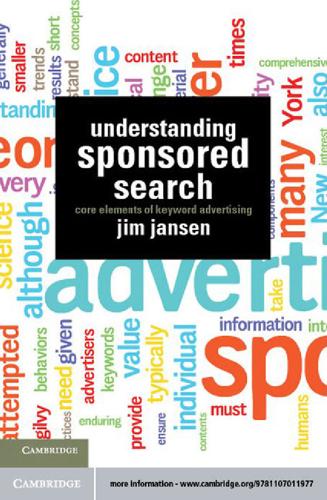
Understanding Sponsored Search: Core Elements of Keyword Advertising
by
Jim Jansen
Published 25 Jul 2011
It was that way in the beginning and is still the same today. To get traffic, Overture entered into agreements with large Web portals of the time (e.g., CNN, Yahoo!, Microsoft) to serve advertisements on their Web sites (i.e., monetizing their existing traffic). Overture also purchased existing Web search engines, AltaVista and AlltheWeb.com. Potpourri: Yahoo! acquired Overture in 2003 and was later subsumed with Microsoft’s Bing sponsored-search platform in 2010, effectively taking Overture out of the sponsored-search business. Personally, I find it sad. But, the world moves on. 14 Understanding Sponsored Search In 2000, Google launched its first advertising effort, Google AdWords, although the pricing was at first based on number of impressions [11].
…
To see the entire SERP, a searcher may have to scroll on the browser to the bottom portion of the SERP. Potpourri: Why do search engines list the advertisements in a separate listing? One of the major reasons was a complaint to the Federal Trade Commission (FTC) filed by Commercial Alert in July 2001 against AltaVista, AOL Time Warner, Direct Hit Technologies, iWon, LookSmart, Microsoft, and Lycos [27]. The complaint alleged that the confusion caused in consumers who saw mixed paid and unpaid results in a combined listing constituted fraud in advertising by the search engines. After that, by convention, the sponsored results are listed separately, or at least labeled as sponsored if they are integrated with organic results.
…
Human Information behaviors are the conduits for human information processing, which is the methods of making sense of the information that we gather. Figure 3.3.╇ Framework of human information behavior, information-seeking behavior, and Â�information-searching behavior. Potpourri: Interestingly, the first academic studies of Web information searching using query logs from search engines (Excite, Infoseek, and AltaVista) all came out within a few months of each other (late 1998 and early 1999) and in the same outlet (SIGIR Forum). The three journal articles are: Jansen, B.J., Spink, A., Bateman, J., & Saracevic, T. (1998). Real life information retrieval: A study of user queries on the Web. SIGIR Forum, 32(1), 5–17.

Designing Great Data Products
by
Jeremy Howard
,
Mike Loukides
and
Margit Zwemer
Published 23 Mar 2012
Objective-based data products We are entering the era of data as drivetrain, where we use data not just to generate more data (in the form of predictions), but use data to produce actionable outcomes. That is the goal of the Drivetrain Approach. The best way to illustrate this process is with a familiar data product: search engines. Back in 1997, AltaVista was king of the algorithmic search world. While their models were good at finding relevant websites, the answer the user was most interested in was often buried on page 100 of the search results. Then, Google came along and transformed online search by beginning with a simple question: What is the user’s main objective in typing in a search query?
…
This is not to say that Amazon’s recommendation engine could not have made the same connection; the problem is that this helpful recommendation will be buried far down in the recommendation feed, beneath books that have more obvious similarities to “Beloved.” The objective is to escape a recommendation filter bubble, a term which was originally coined by Eli Pariser to describe the tendency of personalized news feeds to only display articles that are blandly popular or further confirm the readers’ existing biases. As with the AltaVista-Google example, the lever a bookseller can control is the ranking of the recommendations. New data must also be collected to generate recommendations that will cause new sales. This will require conducting many randomized experiments in order to collect data about a wide range of recommendations for a wide range of customers.
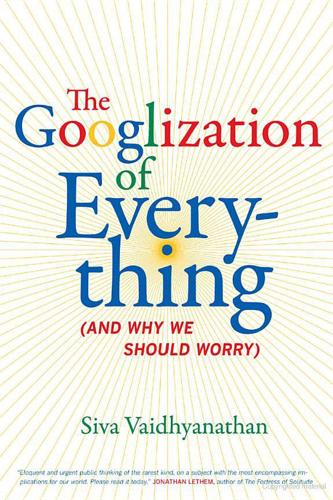
The Googlization of Everything:
by
Siva Vaidhyanathan
Published 1 Jan 2010
The New York Times apparently did not consider Google important enough to write about until its columnist Max Frankel mentioned Google among a list of search engines in November 1999.10 GOOGL E ’S WAYS A ND ME A N S 57 The first serious consideration of Google by the New York Times, the leading American newspaper, was a de facto endorsement by the technology writer Peter Lewis in September 1999. “Until recently my favorite search engines were Hotbot (www.hotbot.com) and Alta Vista (www .altavista.com),” Lewis wrote. “Hotbot is useful for finding popular Web sites, and AltaVista is good at ferreting out obscure information. Alta Vista in particular returns a bazillion potential hits when it is asked to scour the Net for a word or phrase. But the larger the World Wide Web becomes, the more important it becomes for search engines to return fewer results, not more.
…
Others, such as fighting against stronger privacy laws in the United States, do not.13 REN D E R UNTO CA ESA R 19 When confronted with questions about its dominance in certain markets, Google officials always protest that, on the Internet, barriers to entry are low, and thus any young firm with innovative services could displace Google the way Google displaced Yahoo and AltaVista in the early days of the twenty-first century. With Google unable or unwilling to leverage its advantages though some sort of lockdown, such as holding users’ content and data hostage with technology or exclusive contracts so that they must continue to use Google services, they point out that users could easily migrate to the next Google-like company.
…
I was aware of the techno-utopian conversations about electronic archives and the global delivery of knowledge, but I didn’t think very hard about them. I had a book to write and sell. The Web, for me, was a platform for self-promotion. And existing search engines, like Yahoo, were not helping in that effort. Since about 1995 I had been using Yahoo and AltaVista for my Web navigation. I had a brief and passionate involvement with a much better and faster Web search service, Northern Light, until, facing a revenue shortage, it became a specialized portal for corporate clients (and remains so today). I first learned 234 NOTES TO PAGE 81 about Google from an e-mail list called Red Rock Eater, written and edited by Phil Agre, a professor of information studies at UCLA.
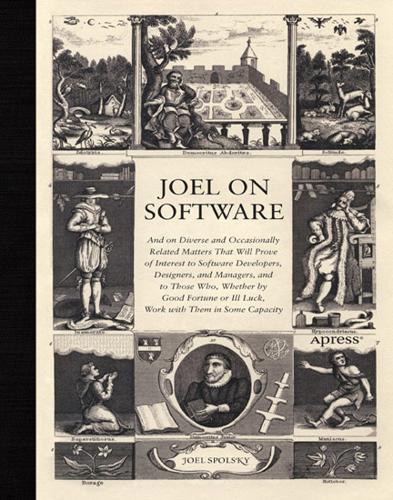
Joel on Software
by
Joel Spolsky
Published 1 Aug 2004
Indeed there is an awful lot of academic research into concepts like stemming, in which the word you searched for is de-conjugated, so that searching for "searching" also finds documents containing the word "searched" or "sought." So when the big Internet search engines like Altavista first came out, they bragged about how they found zillions of results. An Altavista search for Joel on Software yields 1,033,555 pages. This is, of course, useless. The known Internet contains maybe a billion pages. By reducing the search from one billion to one million pages, Altavista has done absolutely nothing for me. The real problem in searching is how to sort the results. In defense of the computer scientists, this is something nobody even noticed until they starting indexing gigantic corpora the size of the Internet.
…
Larry Page and Sergey Brin over at Google realized that ranking the pages in the right order was more important than grabbing every possible page. Their PageRank algorithm1 is a great way to sort the zillions of results so that the one you want is probably in the top ten. Indeed, search for Joel on Software on Google and you'll see that it comes up first. On Altavista, it's not even on the first five pages, after which I gave up looking for it. __________ 1. See www.google.com/technology/index.html. Antialiased Text Antialiasing was invented way back in 1972 at the Architecture Machine Group of MIT, which was later incorporated into the famous Media Lab.
…
That's a "feature" of this exciting .NET architecture. The fact that it is so broad, vague, and high level that it doesn't mean anything at all doesn't seem to be bothering anyone. Or how about: Microsoft .NET makes it possible to find services and people with which to interact. Oh, joy! Five years after Altavista went live, and two years after Larry Page and Sergei Brin actually invented a radically better search engine (Google), Microsoft is pretending like there's no way to search on the Internet and they're going to solve this problem for us. The whole document is exactly like that. There are two things going on here.

Explorer's Guide Mexico City, Puebla & Cuernavaca: A Great Destination
by
Zain Deane
Published 8 Sep 2011
But the most interesting fixture in the center is the monumental fountain—made out of plates, tiles, bowls and other ceramics from China, Europe, and Mexico (including Talavera), mirrors, and seashells—that dominates the main courtyard. The center also hosts frequent art expositions. Open Tuesday to Sunday 10–5. Free. MUSEO CASA ESTUDIO DIEGO RIVERA Y FRIDA KAHLO 55-5550-1518/1189 Diego Rivera and Altavista, Col. San Ángel Inn, Mexico, D.F. Metro: Barranca del Muerto It’s a bit out of the way (the best way to get here is to hop on a pesero from the metro station heading south on Revolución, get off at the intersection of Altavista, and take another pesero to the museum), but worth it for fans of Diego Rivera and Frida Kahlo. The two unusual modern buildings built by Juan O’Gorman were the studio and workshop of Rivera, and where he lived with wife Frida from the early ’30s until his death in 1957.
…
While this one has a capacity of 450 people, it still gets packed (much like its sister), to the point where you’ll be bumping elbows on the dance floor and won’t find a table unless you reserve ahead of time. The live bands are terrific, and unlike the Roma branch, you can actually get into this one. Open Wednesday to Saturday 9 PM–3 AM. $–$$, depending on band. SHOPPING ALTAVISTA 147 www.altavista147.com.mx Altavista 147, Colonia San Ángel Inn, Mexico, D.F. Metro: Barranca del Muerto As it’s located right next to the Museo Estudio Diego Rivera, you might want to duck into this über-exclusive mall after the museum for a little power shopping (or power window-shopping, depending on your budget).
…
Metro: M.A. de Quevedo This small store on Plaza San Jacinto stocks a line of well-made traditional clothing as well as artifacts. The colorful embroidered shirts in particular are worth the reasonable prices. Open Tuesday–Sunday 11–7. $–$$. MERCADO DE FLORES Avenida Revolución between La Paz and Altavista, Col. San Ángel, Mexico, D.F. Metro: M.A. de Quevedo I haven’t tested the theory, but I hear that there is at least one stall here selling flowers at any time of day. But to see the flower market in full bloom, go during regular business hours. The aroma and bright colors alone are worth a stroll past.

This Is for Everyone: The Captivating Memoir From the Inventor of the World Wide Web
by
Tim Berners-Lee
Published 8 Sep 2025
And yet so great was his passion for digital information that Brewster lost not a second before embracing a new platform. Inspired by a visit to Alta-Vista’s headquarters, he instead became the first web historian. AltaVista, as part of their burgeoning web search efforts, had made an internal duplicate of the web as it existed at that time. The entire web – all the content – could fit on an array of storage devices about the size of a soda machine. History buffs will recall that the Library of Alexandria was eventually destroyed. Brewster, seeking to avoid a similar outcome for the Internet Archive, decided that this one backup at AltaVista was not enough; he had to start making his own backup of the web.
…
At CERN we hosted the WWW Virtual Library, which was a top list of lists in each subject, and we delegated to WWW ‘virtual librarians’ the task of maintaining lists about physics, biology, cats, whatever. So our virtual library was a delegated hierarchically structured set of lists. But we needed a better way of finding information. Enter the search engine. Yahoo!, AltaVista, Lycos and Excite were among the many for-profit firms attempting to build a viable search engine in those early days. But search was a hard problem – so hard that it attracted some of the best minds in academic computer science. The preferred approach was to build a bot, sometimes called a ‘spider’ or ‘crawler’, that moved from one web page to the next, indexing content and tallying how many times each term or phrase appeared.
…
The printing, copying, redistribution, or retransmission of this Content without express written permission is prohibited Index Aadhaar ref1 Aaron, Swartz ref1 Abou-Zahra, Shadi ref1, ref2 Abramatic, Jean-François ref1 academic papers, JSTOR ref1 accessibility ref1, ref2, ref3, ref4, ref5, ref6 ActiveX ref1 activism, hostile (Edelman Trust Barometer) ref1 Adam Smith lecture ref1 addiction, social media ref1, ref2, ref3, ref4 Addis, Louise ref1 Adelman, Len ref1 Adobe ref1 advertisements browsers ref1 cookies ref1 first clickable ref1, ref2 microtargeting ref1, ref2 pop-up ref1 privacy ref1 social media ref1, ref2, ref3 third-party distribution networks ref1, ref2 affordability ref1 Africa ref1, ref2, ref3 agents ref1, ref2, ref3, ref4 AJAX platform ref1 Akamai Technologies ref1, ref2 al-Sisi, Abdel Fattah ref1 Alexa ref1, ref2 Alexa Internet ref1 Alexander, Helen ref1 algorithms consistent hashing ref1 PageRank ref1 public key cryptography ref1 social media ref1, ref2, ref3, ref4, ref5, ref6 Alibaba ref1, ref2 Alice in Wonderland (Carroll) ref1 ‘alignment problem’ ref1 AlphaFold ref1, ref2 AlphaGo ref1 AlphaZero ref1 AltaVista ref1, ref2 ‘always on’ ref1 Amazon ref1, ref2, ref3, ref4, ref5, ref6 Andreessen Horowitz venture-capital fund ref1 Andreessen, Marc ref1, ref2, ref3, ref4, ref5, ref6, ref7 Android ref1 Anklesaria, Farhad ref1 Anonymous ref1 AOL ref1, ref2, ref3, ref4 AOL hometown ref1 Apache HTTP servers ref1 Apollo naming system ref1, ref2 Apple anti-trust lawsuits ref1 apps ref1 business model ref1 HyperCard ref1 interoperability ref1 iPhone ref1, ref2, ref3 Jobs leaves ref1 Jobs returns ref1 partnerships ref1 Siri ref1 standards ref1 WHATWG ref1, ref2, ref3 Applied Semantics ref1 apps interoperability ref1, ref2 killer apps ref1 smartphones ref1 web apps ref1 Arab Spring ref1 Archer, Mary ref1 archives ref1, ref2 Arena browser ref1, ref2 ARPANET ref1 Arroyo, James ref1 artichokes ref1 artificial intelligence (AI) AI ‘agents’ ref1, ref2, ref3 ‘AI winter’ ref1, ref2 authors and musician’s concerns ref1 autonomy ref1 Charlie ref1, ref2 copyright infringement ref1 DeepMind ref1 Ditchley Summit ref1, ref2, ref3 early development ref1 future possibilities ref1, ref2 global summits ref1 GOFAI ref1 GPTs (Generative Pre-trained Transformers) ref1, ref2, ref3, ref4, ref5 ‘human in the loop’ ref1 Inflection.AI ref1 intention economy ref1 military applications ref1 need for inclusivity ref1 neural networks ref1, ref2, ref3, ref4 OpenAI ref1, ref2, ref3, ref4, ref5 paradigm shift ref1 RAGs (Retrieval-Augmented Generation systems) ref1 reinforcement learning from human feedback ref1 search engines ref1 semantic web ref1 simplified text ref1 singularity ref1 speed of development ref1 superintelligence ref1 trust ref1 see also ChatGPT Asimov, Isaac ref1, ref2, ref3, ref4 Association for Computing Machinery (ACM) ref1 atheism ref1, ref2 Athumi ref1 Atkinson, Bill ref1 Attenborough, David ref1 attention economy ref1, ref2, ref3, ref4 attention spans ref1 audio descriptions ref1 audiobooks ref1 augmented reality ref1 Australia ref1, ref2, ref3 authentication ref1 authoritarians ref1, ref2, ref3, ref4 Autodesk ref1 Baidu ref1 bar-code scanners ref1 Barabasi, Albert-Laszlo ref1 Barlow, John Perry ref1, ref2, ref3 Barton, Nick ref1, ref2 BBC ref1, ref2, ref3 Beihang University, Beijing ref1, ref2 Beijing ref1 Belgium ref1, ref2 Bell Labs ref1 Bellingcat organization ref1 Bengio, Yoshua ref1 Berkman Klein Center for Internet and Society ref1, ref2 Berners-Lee, Alice (daughter) ref1, ref2, ref3, ref4 Berners-Lee, Ben (son) ref1, ref2, ref3, ref4, ref5 Berners-Lee, Conway (father) ref1, ref2, ref3, ref4, ref5 Berners-Lee, Mary Lee (mother) ref1, ref2, ref3, ref4, ref5, ref6, ref7 Berners-Lee, Rosemary see Leith, Rosemary Berners-Lee, Tim awards ref1, ref2, ref3, ref4, ref5, ref6 character ref1, ref2, ref3 childhood and education ref1, ref2, ref3, ref4 children ref1, ref2, ref3, ref4, ref5, ref6, ref7, ref8 cottage in Wales ref1 D.G.

The New Kingmakers
by
Stephen O'Grady
Published 14 Mar 2013
For businesses that had evolved to sell technology to businesses, it was difficult to grasp the wider implications of a public Internet. At Microsoft, in fact, it took an internal email from Bill Gates—subject line “The Internet Tidal Wave”—to wake up the software giant to the opportunity. By the time Google followed in Altavista’s footsteps, however, the desire for large vendors to extend their businesses to the Web was strong. Strong enough that they were willing to put their traditional animosity aside and collaborate on standards around what was being referred to as “web services.” Eventually encompassing more than a hundred separate standards, web services pushed by the likes of IBM, Microsoft, and Sun Microsystems were an attempt by the technology industry to transform the public Internet into something that looked more like a corporate network.

The Dark Cloud: How the Digital World Is Costing the Earth
by
Guillaume Pitron
Published 14 Jun 2023
Energy Information Administration, 9 October 2020. 44 The connection between Altavista Power Station and No. 2 Surface mine can be made using data from the US Energy Information Administration (EIA), which publishes information on the fossil fuel consumption of the country’s power stations. ‘Form EIA-923’, sub-section ‘Fuel Receipts and Cost’ states that Altavista Power Station was, until 2008, receiving a portion of its coal from No. 2 Surface Mine, which in turn was operated by Twin Star Mining. In 2013, Altavista Power Station switched to biomass energy. 45 Interview with Erin Savage, Central Appalachian senior programme manager, Appalachian Voices, 2021. 46 Using mixtures containing ammonium nitrate and diesel fuel oil. 47 Interview with Junior Walk, awareness activities coordinator at the non-profit Coal River Mountain Watch, 2021.
…
My coming here is no coincidence: up until 2008, Ashburn’s county — one of the biggest concentrations of data centres on the planet — in all likelihood used electricity that was sourced from numerous Appalachian coal mines, and in particular No. 2 Surface. For its power needs, the state of Virginia relies on Dominion Energy, among others. The US company is even reputed to be a key supplier of the cloud companies concentrated in Ashburn. However, Dominion also used to obtain coal from the same mine for its electricity plant, Altavista Power Station. Located around 300 kilometres east of Hurley, it redistributes its output to the east coast of the US.44 An important point here is that the coal from No. 2 Surface mine was extracted using a method called ‘mountaintop removal’, as was confirmed to me by Erin Savage, an activist with the non-profit Appalachian Voices, by analysing satellite images of the mine on Google Maps.45 Essentially, Twin Star Mining (which operated the mine at the time) used explosives to flatten the mountain so that it could extract coal, lowering No. 2 Surface mine ‘by 30 metres’, reckons Steve Hunt, examining the uneven landscape.46 The effects of mountaintop removal are not limited to the Hurley region.

Women Leaders at Work: Untold Tales of Women Achieving Their Ambitions
by
Elizabeth Ghaffari
Published 5 Dec 2011
I stayed at Digital from April 1994 to May 1998, four years during which I had three different jobs and seven different bosses. I was a vice president in charge of the Software Group Strategy and then development for the AltaVista business unit. Those were the very early days of the internet. Digital had an e-mail product, a firewall product, and several other products related to the internet, including the search engine, all in the AltaVista business unit. The search engine became most closely linked to the AltaVista name. It was a very tumultuous period in Digital's history, which culminated in the sale of the company to Compaq Computer Company in 1998. Ghaffari: Did you observe that there were many women along the way in your career in technology?
…
She was in charge of development of the Lotus brand (1998–2002), followed by strategy for the Software Group (2003–2004), and then information management (2004–2006). She became vice president of Business Process and Architecture Integration (2006–2007) and then headed Enterprise Business Transformation (through April 2011). Before coming to IBM, Ms. Horan was vice president of the Software Group and the AltaVista business unit at Digital Equipment Corporation (DEC; 1994–1998). She was also vice president of Development and Engineering at the Open Software Foundation (1989–1994). Ms. Horan has been a member of the board of directors of MicroVision in Redmond, Washington, since July 2006 and serves on the Audit and Compensation Committees.
…
Ghaffari: You made quite a progression from nuts-and-bolts software engineering to strategic software development. How did that transformation happen? Horan: Yes, it's interesting that I started out truly working on the bits and bytes of computers. Then I moved into operating systems and device drivers, which still were close to the hardware. AltaVista and Lotus Notes were more collaborative tools—information resources that allowed for searching and sharing across departments and, ultimately, companies. I definitely started to see possibilities—I think it was the advent of the internet that started me thinking, “Wait a minute. There's a whole new proposition here and some interesting opportunities to explore new areas.”
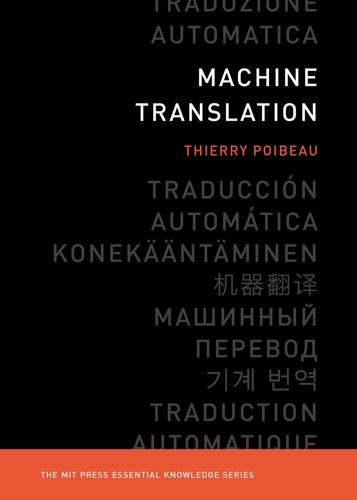
Machine Translation
by
Thierry Poibeau
Published 14 Sep 2017
Lastly, we will see that machine translation also provides useful tools for professional translators, even if most automatic tools are not developed directly with this in mind. Free Online Software Since the 1990s, several free machine translation systems have emerged on the Internet. One of the first systems, Babelfish, appeared at the end of the 1990s provided by the search engine AltaVista (the most popular search engine at the time). Babelfish was in fact the result of an agreement between AltaVista and Systran, the technology provider for Babelfish. Babelfish was later sold to Yahoo in 2003 and eventually replaced in 2012 by Bing Translator, a product developed and owned by Microsoft. Today the most well-known free translation service on the Internet is without a doubt Google Translate.
…
Index Adamic language, 40 Adams, Douglas, 1, 256 Adequacy. See Evaluation measure and test Advertisement, 226, 229, 232 Aeronautic industry, 243, 250 Agglutinative language, 214–216, 261 Agreement (linguistic), 175 Aligned texts. See Parallel corpus ALPAC Report, 35, 75–83, 199 AlphaGo, 182 AltaVista, 227 Ambiguity, 15–18, 21, 23, 40, 56–59, 64–65, 72, 178, 239, 252, 261 American defense agencies, 77, 88. See also Defense industry American intelligence agencies. See American defense agencies Analogy. See Example-based machine translation Analytical language, 215–216 Android, 240 Apertium.

The Innovators: How a Group of Inventors, Hackers, Geniuses and Geeks Created the Digital Revolution
by
Walter Isaacson
Published 6 Oct 2014
“Certainly, a more sophisticated approach will be feasible before 1994,” he wrote, looking three decades into the future.25 He was remarkably prescient. In 1994 the first text-crawling search engines, WebCrawler and Lycos, were developed for the Internet, and they were quickly followed by Excite, Infoseek, AltaVista, and Google. Licklider also predicted something that was counterintuitive but has turned out to be pleasantly true: that digital information would not completely replace print. “As a medium for the display of information, the printed page is superb,” he wrote. “It affords enough resolution to meet the eye’s demand.
…
In his original version, the syntax Cunningham used for creating links in a text was to smash words together so that there would be two or more capital letters—as in CapitalLetters—in a term. It became known as CamelCase, and its resonance would later be seen in scores of Internet brands such as AltaVista, MySpace, and YouTube. WardsWiki (as it became known) allowed anyone to edit and contribute, without even needing a password. Previous versions of each page would be stored, in case someone botched one up, and there would be a “Recent Changes” page so that Cunningham and others could keep track of the edits.
…
The two most famous were named, like the comic book couple, Archie (for FTP archives) and Veronica (for Gopher). By 1994 a variety of enterprising engineers were creating crawlers that would serve as search tools for the Web. These included the WWW Wanderer built by Matthew Gray at MIT, WebCrawler by Brian Pinkerton at the University of Washington, AltaVista by Louis Monier at the Digital Equipment Corporation, Lycos by Michael Mauldin at Carnegie Mellon University, OpenText by a team from Canada’s University of Waterloo, and Excite by six friends from Stanford. All of them used link-hopping robots, or bots, that could dart around the Web like a binge drinker on a pub crawl, scarfing up URLs and information about each site.

Only Americans Burn in Hell
by
Jarett Kobek
Published 10 Apr 2019
But the ultracontrast black-and-white cover art convinced him into an impulse buy. Jacob went home and listened to Transilvanian Hunger. He used the Internet, then in its pre-Google days, to search on Darkthrone and Transilvanian Hunger. Jacob used a search engine called AltaVista. AltaVista helped Jacob find out that Darkthrone was one of the foremost bands in the second wave of a subgenre called Black Metal. AltaVista also helped Jacob find out that the words printed on the album’s back insert—Norsk Arisk Black Metal—translated to NORWEGIAN ARYAN BLACK METAL. Jacob had that old familiar feeling. Heavy Metal, of which Black Metal was a subgenre, was like all rock music in the Twentieth Century AD: totally indebted, and dependent upon, the influence of African-American blues and R&B.

Mexico - Mexico City
by
Rough Guides
There are also plenty of peseros from the bus stands by Metro Chapultepec or Tasqueña for services along the Calzada de Tlalpan and to the southwest of the city, above all to Xochimilco. If you’d rather stick to the Metro, take line 3 to Miguel Ángel de Quevedo, between San Ángel and Coyoacán. To Coyoacán If you don’t fancy walking from San Ángel, buses head down Altavista by the San Ángel Inn; from the centre, buses leave from Metros Chapultepec, Insurgentes or Cuauhtémoc. In each case look for “Coyoacán” or “Colonia del Valle/Coyoacán”. There’s also a trolleybus which runs in both directions along Lázaro Cárdenas. Metro line 3, too, passes close by, though note that Viveros station is considerably closer to the action than Coyoacán station: from Viveros, walk south on Av Universidad, then turn left (east) to reach the centre.
…
Elsewhere, check out the extensive displays on daily life in New Spain and a collection of eighteenth-century oils by Cristóbal de Vallalpando. Museo Casa Estudio Diego Rivera y Frida Kahlo and the San Ángel Inn Diego Rivera 2 • Tues–Sun 10am–6pm • M$20, free Sun From central San Ángel, it’s just over half a kilometre along Altavista to the Museo Casa Estudio Diego Rivera y Frida Kahlo, a pair of modernist houses built for Diego Rivera and Frida Kahlo in 1931–32 by the leading contemporary architect, Juan O’Gorman. Tucked behind an organ cactus fence opposite the prestigious San Ángel Inn restaurant sits a small compound with a large maroon-coloured house (Diego’s) and a much smaller blue abode (Frida’s), connected by a rooftop causeway.
…
Start off with a “pre-Hispanic platter” of escamoles (ant eggs), mescal worms and chipulines (grasshoppers) for M$345, followed by bacalao a la veracruzana (saltfish with onions and tomatoes) for M$170, or lengua a la veracruzana (tongue prepared in a similar fashion) for M$150. Mon–Sat 9am–midnight, Sun 9am–7pm. San Ángel Inn Diego Rivera 50, at Altavista 55 5616 2222, sanangelinn.com; Metrobús Dr Gálvez; map. Popular with visiting dignitaries and tourists, this late seventeenth-century former Carmelite monastery has been an elegant restaurant with a sumptuous garden setting since 1915. The menu has European overtones, but is mainly Mexican, featuring starters such as huitlacoche crêpes (M$115), and mains such as chiles stuffed with meat and cheese (M$160), plus fine wine or margaritas to accompany it.
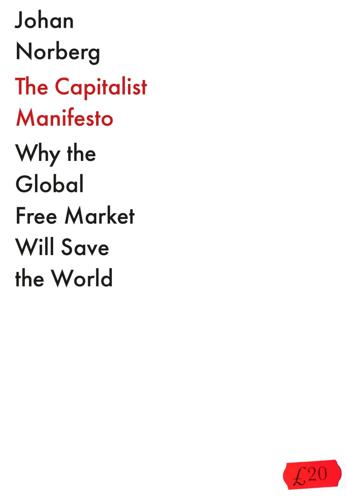
The Capitalist Manifesto
by
Johan Norberg
Published 14 Jun 2023
Just look at how novel today’s big tech companies – Google, Amazon, Facebook, Apple, Microsoft (GAFAM) – actually are. When I wrote the Swedish version of In Defence of Global Capitalism in 2001, Google was a three-year-old newcomer who had three years left to go to IPO and was doing battle with search engine giants such as Yahoo!, AltaVista and MSN Search. ‘How Yahoo! won the search wars’ was a Fortune magazine story in March 1998. The report stated that many people believed Yahoo! even had the potential to become the next America Online (if you remember them).28 There is actually a similarity: both Yahoo! and AOL were later bought by the telecom company Verizon, which, after large losses, recently sold them for $5 billion.
…
When Google was launched, three of the biggest search engines could not even find themselves online. The question is how long these companies can continue to be innovative and keep up with the competition. I think they can stumble faster than most people assume, for the simple reason that I’ve seen AOL, Digital Equipment Corporation, AltaVista, Palm, BlackBerry, Nokia, Netscape, Yahoo!, MySpace, Compaq and Kodak all hold a leading position for a certain period but not survive the next change of the technological paradigm. Before we know it, some other big, proud names will be added to that list. Unfortunately, there is a way we consolidate the giants’ position even when their time is up, and it is paradoxically the regulations we believe are a way of controlling them.
…
Johan Norberg, Open: The Story of Human Progress, Atlantic Books, 2020. INDEX NB Page numbers in italics indicate illustrations Afghanistan, 160–61, 256 Africa, 30–35, 70, 267, 282 colonisation, 31 independence, 31–4 Sub-Saharan Africa, 30–31 AIM (AOL Instant Messenger), 170 Albania, 50 Algeria, 251 Alphabet, 179 AltaVista, 169, 174 Amazon, 169–72, 178–9 Amazon Prime, 179 Andersson, Magdalena, 8 Angola, 239 Annan, Kofi, 3 Ant Group, 227 AOL (America Online), 169–71, 174 Apple, 107–8, 159, 163, 169–73, 179 Apple TV, 179 Arab Spring, 215 Aristophanes, 73 Aristotle, 70 ARPA, 183–6 ARPANET, 184–5 Asia, 267, 282 Asp, Anette, 287 Attac, 2–3, 6 Australia, 11, 258, 267, 282, 285 Ayittey, George, 31 Bangladesh, 235 Bank for International Settlements (BIS), 144 Bankman-Fried, Sam, 153 Bao Tong, 212 Baran, Paul, 184, 186–7 Bastiat, Frédéric, 114 Beijing, China, 209 Belgium, 285 Berggren, Niclas, 62 Bergh, Andreas, 56, 103 Bezos, Jeff, 127 Biden, Joe, 76, 217 big companies, 141, 146–50, 176–7, 292 BioNTech, 177 biotechnology, 195 Björk, Nina, 263, 265, 272, 274–5, 278 BlackBerry, 174 Blair, Tony, 170 Blockbuster, 151 Blue Origin, 202 Bolivia, 47 Bolt, Beranek and Newman, 184 Bono, 4, 170 Botswana, 34–5 Boudreaux, Donald, 125 Boulevard of Broken Dreams (Lerner), 190 Brazil, 11, 29, 239, 258 Brexit, 116–18 Bullshit Jobs: A Theory (Graeber), 86, 98–9 business regulation, 139–41 Callaghan, James, 10 Canada, 102, 267, 283 Capital in the Twenty-First Century (Piketty), 128 capital income, 130–31 Carbon Engineering, 255 Cardoso, Fernando Henrique, 29 Carlson, Tucker, 146 cars, 158 Carter, Jimmy, 10 Case Deaton, Anne, 108–11, 136 Castillo, Pedro, 30 Chávez, Hugo, 43, 135 child labour, 20 child mortality, 19–20, 20 Chile, 11, 29–30 China, 5, 7, 11, 19, 24–5, 76, 78–80, 83–4, 104–7, 204–29, 239, 258 agricultural productivity, 206–7, 209 Communist Party, 182, 204–9, 211–12, 215–18, 221–3, 226–8 deindustrialization, 84 economic development, 205–29 environmental issues, 251–3, 257 exports, 209–10 industrial policy, 205, 212–13, 217, 223–4, 296 innovation strategy, 182, 192 innovation, 226–8 poverty, 213, 214 Reform and Opening Up programme, 212 state-owned companies, 208 WTO and, 205, 209, 211 China’s Leaders (Shambaugh), 215 Chirac, Jacques, 191 Chomsky, Noam, 49 Christianity, 264–5 Churchill, Winston, 135 Clark, Daniel, 87 climate change, 5–7, 230–60, 293 carbon border tariffs, 258 carbon tax, 256–7, 259 energy supplies, 233–5, 253–6, 259 greenhouse gas emissions, 231, 233–5, 238, 240–41, 244, 253–9 see also environmental issues Climeworks, 255 Clinton, Hillary, 140 Coase, Ronald, 206 Cohen, Linda, 189 communism, 2, 25–6, 241–3, 290–91 Communist Manifesto, The, 1848, 2 community, 267 Compaq, 174 Concorde, 191 Confucianism, 22, 25 Congo-Brazzaville, 30 Congo, 239 consumer culture, 160–62, 287–8 Cook, Tim, 173 cooperation, 278–9 Coopersmith, Jonathan, 188–9 Corbyn, Jeremy, 43 coronavirus see Covid-19 pandemic Council of Economic Advisers, 147, 152 Covid-19 pandemic, 8, 21, 76–81, 223, 232–3, 270 Cowen, Tyler, 154 Credit Suisse, 132–3 crony capitalism, 139–40, 291 culture wars, 12–13 Czechoslovakia, 26 Dalits, 63–4 dating profiles, 154 ‘deaths of despair’, 7, 108–10, 136, 271, 293 Deaths of Despair (Deaton and Case Deaton), 136 Deaton, Angus, 19, 108–119, 136 DeepMind, 177 degrowth, 232–5, 254–5 ‘deindustrialization’, 83–5 democracies, 26, 37, 46 Deneen, Patrick, 262–5 Deng Xiaoping, 24, 46, 205, 212–13 Denmark, 91, 285 ‘dependency theory’, 27–8 Detroit, Michigan, 87–8 dictatorships, 11, 24, 29, 32, 42–8 Digital Equipment Corporation, 174 disability-adjusted life years (DALY), 237 dishonesty, 153–6 Disney, 178 Dominican Republic, 225 Easterlin, Richard, 279 ‘Easterlin paradox’, 279–80 Easterly, William, 39 Ecclesiazusae (Aristophanes), 73 Economic Freedom of the World index, 35–7 economic freedom, 35–42, 36, 57, 58–62, 58, 77–8 Economist, The, 179, 192 education, 20, 94 Energiewende, 191, 192–3 Engels, Friedrich, 2, 277, 290–91 Enlightenment, 73 entrepreneurship, 123–4, 128–9, 152–4 ‘welfare entrepreneurs’, 197 environmental issues, 236–41, 245–52, 293 agriculture, 239–40 air pollution, 237–8 biodiversity, 238–9, 249–50 deforestation, 239 health and, 236–8, 237 plastics, 247–8 prosperity and, 245–52, 249 transportation, 250–51, 254–5 Environmental Performance Index (EPI), 248, 252 Estonia, 26 Ethiopia, 277 Europe, 22, 239, 267, 282 European Centre for International Political Economy, 79 European Union (EU), 4, 68, 79, 116, 164, 258–9 Everybody Lies (Stephens-Davidowitz), 155 Facebook, 163, 167–75, 179–80 Fallon, Brad, 192 famine, 29 Fanjul, Alfonso and José, 140 fascism, 75 Federal Communications Decency Act (USA), 174 Feldt, Kjell-Olof, 11 feudalism, 73, 75 Financial Fiasco (Norberg), 142 financial markets, 141–3 Financial Times, 8, 267 Finland, 76, 78, 268, 285 Foodora, 102 Forbes’ list, 129–30 forced technology transfers, 211 Foroohar, Rana, 8 Fortune 500 list, 151 Fortune magazine, 169 France, 79–80, 97, 159, 192, 281, 285 Fraser Institute, 35 free markets, 2–4, 6, 23, 58–62, 65–82, 83, 290–97 happiness and, 279–89, 282, 284, 286 human values and, 261–89 Friedman, Thomas, 204 ‘friendshoring’, 79 Friendster, 170 GAFAM (Google, Amazon, Facebook, Apple, Microsoft), 169–70 Gallup World Poll, 267 Gandhi, Indira, 245 Gapminder, 18 Gates, Bill, 124–7, 274 GDP (Gross Domestic Product), 5, 23, 26, 33, 35, 49–56 General Data Protection Regulation (EU GDPR), 164 generosity, 274–7 Georgia, 26, 215 Germany, 26, 84, 97, 101, 192–3, 196, 268 gig economy, 101–3 Gingrich, Newt, 191–2 Gini coefficient, 132 global financial crisis, 2008, 4–5, 142–3 global supply chains, 41–2, 58–61, 76, 81 Global Thermostat, 255 global warming see climate change globalization, 3–8, 17, 19, 80, 103–10, 117 Google, 163, 169–73, 179–80 Gorbachev, Mikhail, 215 Graeber, David, 86, 98–9 Grafström, Jonas, 240 Greece, 26, 254 Green Revolution, 239–40 green technology, 243, 251–5 Greider, Göran, 50, 241 growth, 49–57 degrowth, 232–5, 254–5 government and, 55–6 health and, 52–3 poverty and, 53–4 Guangdong, China, 207–8 Guardian, 3, 169 Halldorf, Joel, 262, 265 happiness, 279–89, 282, 284, 286 Hawkins Family Farm, 140 Hawkins, Zach, 140 Hayden, Brian, 161 Hayek, Friedrich, 66 Helm, Dieter, 193 Henrekson, Magnus, 56 Hertz, Noreena, 261, 262, 265, 268, 272, 274–5, 278 Hillbilly Elegy (Vance), 87 Hinduism, 22, 25 Hong Kong, 23, 205, 207 Horwitz, Steven, 294 housing market, 131, 142–3, 208–9 How China Became Capitalist (Wang and Coase), 206 How Innovation Works (Ridley), 188 Hsieh, Chang-Tai, 148–9 Hu Jintao, 215–16 Hugo, Victor, 25 Hume, David, 284 Hungary, 26, 283 IBM, 151 Iceland, 285 IKEA, 119, 141, 147 illiteracy, 20, 20 ‘import substitution’, 27–8 In Defence of Global Capitalism (Norberg), 3, 17, 33, 38, 42, 146, 151, 156, 169, 204, 214, 230–31 income, 22, 55, 88–96, 95, 134–5, 285, 291 low-income earners, 136–8 minimum wage, 90 wage stagnation, 89, 92–3 see also inequality India, 11, 24–5, 63–4, 70, 234, 239, 251, 258 caste system, 63–4 Indonesia, 239 industrial policy, 182, 188–203 Industrial Revolution, 22 inequality, 7, 27, 42, 54–5, 110, 131–8, 133, 285–7 happiness inequality, 131–2 income, 285–7 life expectancy and, 136–8 infant mortality, 19–20, 235, 291 Infineon, 196 inflation, 8, 10–11, 69 innovation, 65–6, 122–3, 125, 151, 181–203 government policy and, 181–203 innovation shadow, 169, 176 prizes and, 199 research, 199–200 subsidies and grants, 196–7 Instagram, 168, 177 integrity, 164 intellectual property, 41, 210–11 International Disaster Database, 235 International Union for the Conservation of Nature (IUCN), 238 internet, 162–8, 183–7 IPCC (Intergovernmental Panel on Climate Change), 231 iPhone, 107–8, 156, 159 Iran, 220 Iraq, 251 Ireland, 285 Italy, 97, 285 Jackson, Jesse, 43 Jacobs, A.

Distrust That Particular Flavor
by
William Gibson
Published 3 Jan 2012
The content of the Web aspires to absolute variety. One might find anything there. It is like rummaging in the forefront of the collective global mind. Somewhere, surely, there is a site that contains . . . everything we have lost? The finest and most secret pleasure afforded new users of the Web rests in submitting to the search engine of AltaVista the names of people we may not have spoken aloud in years. Will she be here? Has he survived unto this age? (She isn’t there. Someone with his name has recently posted to a news group concerned with gossip about soap stars.) What is this casting of the nets of identity? Do we engage here in something of a tragic seriousness?
…
It will probably evolve into something considerably less random, and less fun—we seem to have a knack for that—but in the meantime, in its gloriously unsorted Global Ham Television Postcard Universes phase, surfing the Web is a procrastinator’s dream. And people who see you doing it might even imagine you’re working. “…the search engine of AltaVista”? Blimey. Spoken from a pre-Google universe. A tender and unformed time indeed. For all of that, though, when I read this now I think that what I should more accurately have called the Web did become what I expected it to. Though in the way of these things, it became so much else as well. I LEARNED OF SCIENCE FICTION and history in a single season.

Hacking Exposed: Network Security Secrets and Solutions
by
Stuart McClure
,
Joel Scambray
and
George Kurtz
Published 15 Feb 2001
We’d hate to guess how many phone phreaks were salivating over the prospect of making free calls at that organization. Needless to say, you can gain additional insight into the organization and the technical prowess of its staff just by reviewing their postings. Lastly, you can use the advanced searching capabilities of some of the major search engines like AltaVista or Hotbot. These search engines provide a handy facility that allows you to search for all sites that have links back to the target organization’s domain. This may not seem significant at first, but let’s explore the implications. Suppose someone in an organization decides to put up a rogue web site at home or on the target network’s site.
…
P:\010Comp\Hacking\381-6\ch01.vp Friday, September 07, 2001 10:37:32 AM 7 ProLib8 / Hacking Network Security Color profile: GenericExposed: CMYK printer profile Composite Default screen 8 Secrets and Solutions, Third Edition / McClure, Scambray & Kurtz / 9381-6 / Chapter 1 Hacking Exposed: Network Security Secrets and Solutions Figure 1-1. With the AltaVista search engine, use the link:www.example.com directive to query all sites with links back to the target domain. EDGAR Search For targets that are publicly traded companies, you can consult the Securities and Exchange Commission (SEC) EDGAR database at http://www.sec.gov, as shown in Figure 1-3. One of the biggest problems organizations have is managing their Internet connections, especially when they are actively acquiring or merging with other entities.
…
So it is likely that you may be able to find security weaknesses P:\010Comp\Hacking\381-6\ch01.vp Friday, September 07, 2001 10:37:32 AM ProLib8 / Hacking Network Security Color profile: GenericExposed: CMYK printer profile Composite Default screen Secrets and Solutions, Third Edition / McClure, Scambray & Kurtz / 9381-6 / Chapter 1 Chapter 1: Figure 1-2. Footprinting With AltaVista, use the host:example.com directive to query the site for the specified string (for example, “mudge”). in the acquired entity that would allow you to leapfrog into the parent company. Attackers are opportunistic and are likely to take advantage of the chaos that normally comes with combining networks.
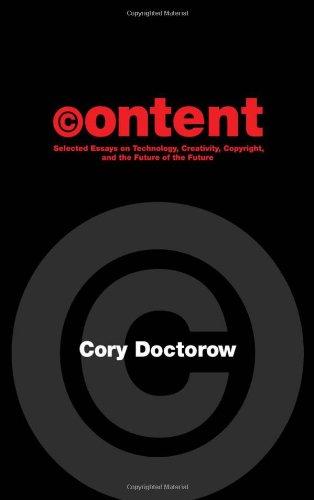
Content: Selected Essays on Technology, Creativity, Copyright, and the Future of the Future
by
Cory Doctorow
Published 15 Sep 2008
I'll enumerate them below:. 2.1 People lie Metadata exists in a competitive world. Suppliers compete to sell their goods, cranks compete to convey their crackpot theories (mea culpa), artists compete for audience. Attention-spans and wallets may not be zero-sum, but they're damned close. That's why: A search for any commonly referenced term at a search-engine like Altavista will often turn up at least one porn link in the first ten results. Your mailbox is full of spam with subject lines like "Re: The information you requested." Publisher's Clearing House sends out advertisements that holler "You may already be a winner!" Press-releases have gargantuan lists of empty buzzwords attached to them.
…
But as radical as Slashdot's is, it is still inherently conservative in that it presumes that editorship is necessary, and that it further requires human judgment and intervention. Google's a lot more radical. Instead of editors, it has an algorithm. Not the kind of algorithm that dominated the early search engines like Altavista, in which laughably bad artificial intelligence engines attempted to automatically understand the content, context and value of every page on the Web so that a search for "Dog" would turn up the page more relevant to the query. Google's algorithm is predicated on the idea that people are good at understanding things and computers are good at counting things.
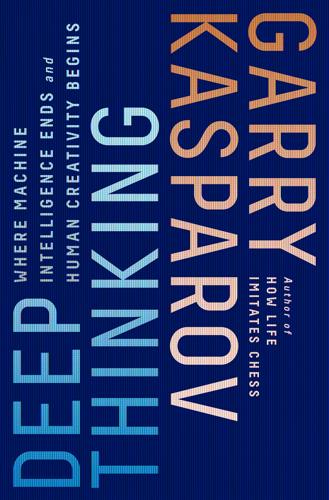
Deep Thinking: Where Machine Intelligence Ends and Human Creativity Begins
by
Garry Kasparov
Published 1 May 2017
If I recall correctly, the shouting was being done by Stepan Pachikov, a computer scientist who shared the direction of the computer club with me. His contributions to handwriting recognition software at the Soviet company ParaGraph were used in the Apple Newton. He later moved to Silicon Valley and founded Evernote, the ubiquitous note-taking app. I once made a television commercial for the search engine company AltaVista. If you want to know what happened to AltaVista, you can google it! This fits the axiom of Bill Gates. Bill Gates, The Road Ahead (New York: Viking Penguin, 1995). CHAPTER 4. WHAT MATTERS TO A MACHINE? “I checked it very thoroughly,” said the computer. Douglas Adams, The Hitchhiker’s Guide to the Galaxy (New York: Del Rey, 1995), Kindle edition, locations 2606–14.
…
Certainly, but I don’t think you have to have my suspicious mind to wonder if lightbulb companies would sell an indestructible and everlasting bulb if they could make one. But resisting change and delaying it to squeeze a few more dollars out of an existing business model usually just makes the inevitable fall all the worse. I once made a television commercial for the search engine company AltaVista in 1999, but that didn’t mean I wanted to follow it to oblivion when the chess equivalent of Google came along. I was in my twenties when the digital information wave rolled over the chess world, and it was a fairly gradual one, not a tsunami. Flicking through games on a screen was far more efficient than on printed materials, a real competitive advantage but not a nuclear bomb.

Dragnet Nation: A Quest for Privacy, Security, and Freedom in a World of Relentless Surveillance
by
Julia Angwin
Published 25 Feb 2014
But they appeared to be dead serious. It reminded me of when I was a reporter at the San Francisco Chronicle in the late 1990s. I was dismissive of this newfangled search engine Google. I remember thinking: How could its reliance on machine-based page ranking be better than the hand-curated results on my favorite search engine, AltaVista? Now I was sitting on a polka-dot couch in suburban Philadelphia wondering how a few guys working in a castle could pose a threat to a search engine that pulls in nearly $30 billion a year. And yet, in the technology industry, some of the best ideas sound crazy at first. * * * I really didn’t want to quit using Gmail.
…
Most Internet ad buyers were other dot-coms trying to generate buzz for their initial public offerings. Meanwhile, Engage Technologies was at the center of the dot-com hurricane that was about to make landfall. Engage was part of a conglomerate of Internet companies—ranging from search engines AltaVista and Lycos to websites Shopping.com and Furniture.com—that resulted from a buying spree by the entrepreneur David Wetherell. In the fall of 1999, Wetherell appeared on the cover of BusinessWeek under the headline “Internet Evangelist.” His conglomerate, CMGI, was a poster child for the dot-com boom, with a massive stock market value of $10 billion, despite the fact that it was losing $127 million a year on revenues of just $176 million.
…
Aaronson, Trevor Abdulla, Husain Abdulmutallab, Umar Farouk Abine Abrams, Martin accountability Accurint Acquisti, Alessandro Acxiom Adblock Plus ADFGVX cipher Adium Adler, Jim Adobe Reader AdThis adversary, identifying advertisers and ad-tracking blocking Afghanistan Afifi, Yasir AgileBits Ahmed, Bilal airlines. See also travel airport body scanners Alcoholics Anonymous (AA) Alexander, Keith al-Qaeda AltaVista Al-Wefaq party Amazon American Academy of Pediatrics American Business Information American Civil Liberties Union (ACLU) American Express American Revolution Americans for Democracy and Human Rights Ancestry.com Anderson, Nate Anderson, Ross Andreessen, Marc Android phones AnnualCreditReport.com anonymizing software Anti-Ballistic Missile Treaty (1972) anti-tracking software antivirus software antiwar protests “anxious awareness” AOL Appelbaum, Jacob Apple.
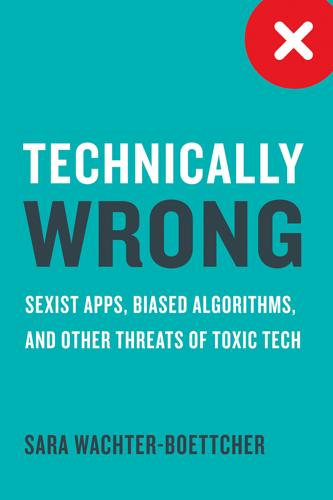
Technically Wrong: Sexist Apps, Biased Algorithms, and Other Threats of Toxic Tech
by
Sara Wachter-Boettcher
Published 9 Oct 2017
We marketed luxury real estate in planned communities: 5,000-square-foot stucco homes with subzero appliances and infinity-edge pools. Within six months, I’d exhausted all the ways one could possibly describe a house on a golf course in the desert. Then I saw the ad for a web writer. I wasn’t sure what a web writer did, to be honest. But I figured, why not? I’d been using the web since AltaVista was the search engine of choice. Besides, whatever the job was, it sounded a hell of a lot more interesting than hawking granite countertops. It turns out 2007 was a good time to enter tech (and, uh, get as far away from real estate as possible). Facebook was just starting to transform from a college-centric site to the behemoth it’s since become.
…
Abler, Erin, 32–33 Acxiom data brokers, 104 advertising and collection of gender information, 65–66 Facebook’s selections for users, 10 and filtering, 65 and proxy data, 110–112 and Reddit, 162 and value of user data, 96 Airbnb, 20 Alciné, Jacky, 129–130, 132–133, 135, 137–138 alcohol use, 17–18 algorithms biases in, 144–145, 176 and clean design aesthetic, 143 and COMPAS, 120–121, 125–129, 145 and debiasing word-embedding systems, 140 described, 121–123 and edge cases, 137 and Facebook’s use of proxy data, 112 and Friends Day Facebook feature, 84 and Google, 123, 136, 144 and neural networks, 131–133 and News Feed Facebook feature, 168 and social media trends, 10 and training data, 145–146, 171 and Trending Facebook feature, 149, 166–167, 169 and Yelp, 123–125 Allen, Paul, 182 AltaVista, 2 alt-right movement, 153, 164 Apple and emoji suggestions, 80 iPhone location settings, 105–108 and Siri’s female voice, 36 and Siri’s responses to crises, 6–7, 7 and Siri’s teasing humor, 88–89 smartwatches from, 13 and use of personas, 27 and workforce diversity, 19–20 artificial intelligence and failure to understand crises, 6–7 and loss of jobs, 192 Siri as, 88–89 word-embedding systems, 139–140 Automattic, 183 “average” users, 38–44, 47 Barron, Jesse, 114–115 Batman, Miranda, 57 Bawcombe, Libby, 40–42 Beyoncé, 55 bias.

Troublemakers: Silicon Valley's Coming of Age
by
Leslie Berlin
Published 7 Nov 2017
Once again, researchers under Taylor’s direction helped to lay the foundations for a new wave of technical innovations based on easy-to-use distributed computing systems. Among other projects, his team at DEC helped to develop reliable computer networks, multiprocessor machines, and an electronic book. One researcher, Mike Burrows, was also an essential contributor to AltaVista, the world’s first blazingly fast search engine. AltaVista came to market three years before Google was founded.35 * * * I. Taylor’s list further included a systems implementation language with a matching optimized machine architecture; programming environments; personal workstations; interactive text formatters; server stations for printing, filing, and mail; bitmap displays; electronic mail with transport and authentication facilities; and “a complete, distributed systems architecture accommodating all the above.”
…
(Stanford has been a limited partner in both venture firms’ funds, as well.) Ampex begat Memorex and Oracle, as well as Atari, which begat many other video game companies including Activision, the company behind Call of Duty. Research staff from the Computer Science Laboratory at Xerox PARC begat Microsoft Word, as well as AltaVista, Ethernet, the pioneering networking company 3Com, and Adobe. As recently as 2016, several of the most senior members of the research staff at Google were former PARC employees. Even companies that cannot trace their lineage to a Valley predecessor—Facebook, for example—have moved to the region to take advantage of its unique network and resources.
…
AbuZayyad, Ray, 370 Activision, 277–78, 345–46, 366 Adobe, 23, 78, 84, 101, 217, 288–91, 332n, 366, 376 Advanced Electronic Design, 321 Advanced Micro Devices (AMD), 47, 51–53, 84, 316 Advanced Research Projects Agency (ARPA), 7–8, 11–12, 28, 39, 89, 92, 158, 213 principal investigators at, 13–23, 29–30, 99 Adventure game, 275 Adweek, 280 aerospace industry, 42, 65–67, 179 Agriculture Department, U.S., 265 Airforce, U.S., 35 Alcorn, Al, xvi, 32–40, 107–31, 168–75, 269–82, 344–48, 369–70 at Ampex, 37–38, 41, 53, 107 Atari career of, 109–10, 120, 124, 171–75, 364 Bushnell and, 39–40, 107, 169, 173–75, 269–73, 276 Cyan Engineering and, 169–70 Dabney and, 38–40, 107 engineering studies of, 32–37, 40 family of, 36–37, 130–31 game design and, 111, 116, 120, 130–31; see also Pong game Gerard and, 168–75, 269–74 holographic technology and, 279–82 at Hubbard Radio & TV Repair, 32–34, 109 Keenan and, 169, 172–73, 269–71, 276 People’s Park and, 33–35 Vietnam War protests and, 32–36 work-study program of, 37–40, 107 Alcorn, Katie, 110, 117 Altair minicomputer kits, 209–11, 244 AltaVista, 343, 366 Alto computer system, 92, 101–6, 141, 146, 214–17, 224, 287–88 Alvarez, Fawn, xvi, 41–46, 159–67, 308–15, 370 childhood of, 43, 176 promotions of, 165–66, 308–12 ROLM career of, 41–46, 159, 222, 309–12, 370 Alvarez, Vineta: Diehl’s recruitment of, 44–45 education and training of, 42 experience and skills of, 44 at Fairchild Semiconductor, 42, 45 at Lockheed, 42, 45 at ROLM, 41, 44–45, 159 at Sylvania, 42–44 Alvarez family, 41–42, 46, 159, 167, 370 Amazin’ Software, see Electronic Arts American Cancer Society, 142 American Electronics Association, 62, 151, 254n, 320, 361 American Management Association, 52 American Microsystems, 242 American Production and Inventory Control Society, 181, 316 Ames, Glenn C., 36 Ampex, 38–40, 364 as Alcorn’s “nerd paradise,” 37–38, 53, 107 audio and video products of, 37 Poniatoff and, 37 Silicon Valley location of, 37, 41 Videofile system and, 38, 364 Andrew, Don, 27 answering machines, 160 see also voice mail systems Apple Computer, xii Alto demo and, 287–88, 290, 369 Apple Education Foundation and, 237–38 branding and, 238–39, 292–93, 304, 356 business plan of, 228–32, 235–38, 359 competitors of, 230, 235, 240, 247, 250, 295, 359 consumer market and, 244–50 educational software and, 237–38 employees of, 195, 233–36, 241–43, 248, 283–90, 296–98, 356–57 as Fortune 500 company, 358–59 growth of, 228, 242, 249, 300, 306, 356–57 headquarters of, 176n, 241, 356 IBM and, 304–6 initial public offering of, 287, 293–96, 306 investors in, 77, 84, 90, 128, 149–50, 230–33, 249, 294–95 Jobs and, see Jobs, Steve launch of, 208–10, 232 Lisa computer and, 288, 294, 297, 333, 357 McKenna and, 238–39, 373–74 Markkula and, see Markkula, Armas Clifford “Mike” media and, 298, 302–3, 356 reputation of, 305–6 Scott and, 234–38, 242–43, 247, 298–99 Sculley and, 357–58 software programs and, 294–95 West Coast Computer Faire and, 239–41 Wozniak and, see Wozniak, Steve Apple I computer, 207–8, 212–13, 228–30 Apple II computer, 208, 212, 222, 228, 231, 235–50, 284–85, 293–95, 298, 302–4, 356, 358 Apple III computer, 294, 297–98, 358 Apple Macintosh, 290, 294, 297, 302, 305, 348, 357–58, 369 Applied Electronics Lab, 57 arcade games, 126, 157, 271–72, 274–76, 344, 347 Army, U.S., 28–29, 191 Arpanet: construction of, 18–21, 94 controversy over, 158 Engelbart demo and, 27 first transmission of, xii, 6, 9 funding for, 16–17, 23 initiation of, 17–18 interactive computing and, 24 as Internet precursor, xii, xv, 6, 24, 30, 92, 103, 376 Taylor and, xv, 7, 9, 12, 15–23, 104n Xerox and, 103, 107 ASK Computer Systems: ASKNET and, 321, 361, 364 Boeing and, 177–79 Browne and, 86–87, 177–78, 182, 324–27 business plan of, 82–83, 178–79, 186 culture of, 182–85, 326 customers of, 79–80, 85–87, 177–81, 314, 360–61 employees of, 80, 86–87, 176–78, 182–83, 315, 323–25, 360–61 headquarters of, 78, 181–82, 322–26 Hewlett-Packard and, 176–86, 313–14 Hughes Aircraft and, 179–81 IPO of, 84, 318–20, 324–25, 360 launch of, 76, 146 MANMAN manufacturing software and, 84–87, 102, 176–81, 184–86, 259n, 314, 321–22, 360, 364, 371 marketing of, 75, 79, 180–82 media and, 322, 360 Powertec Systems and, 177 sales and profits of, 82, 85–88, 179–81, 186, 314, 321–22, 360 as software provider, 76, 80, 83, 91, 157, 222 Tymshare partnership and, 83–84, 149, 179 see also Kurtzig, Sandra ASKNET, 321, 361, 364 Association of University Technology Managers, 145 Asteroids game, 274, 278 AT&T, 103, 160–61, 353–54 Atari, xii Alcorn and, xvi, 168–75, 269–82 arcade games and, 274–75, 344 Bally licensing and, 113–16 Bushnell and, 107–31, 173–75, 269–73, 364 competitors of, 121–23, 250, 269–71, 274, 278, 285, 345–46 culture of, 121–22, 170–71, 174, 249, 280–81 customers of, 113–14, 118–19 Cyan Engineering and, 169–70 Dabney and, 107–22 employees of, 118–19, 123–24, 169–73, 269–82 game design and, 274–77 Gran Trak game and, 124, 130 growth and success of, 122, 130 Home Pong game, 130, 157, 281 investors and, 119, 168–69, 187; see also Warner Communications Jobs and Wozniak at, 208, 230, 233 launch of, 38–40, 58, 110 marketing and, 129–30, 269 new product development and, 272–73 Pong game and, xvi, 112–23 profits and stock of, 172–75, 274, 344–46 salaries at, 173, 277–78 Sears and, 129–30 Valentine and, 126–29, 154, 168–69, 173 VCS game system and, 270–78, 345 Atkinson, Bill, 357 Atomic Energy Commission, 203 Bally, 109, 113–16, 125n, 346 Baran, Paul, 21 Barnes, Andy, 266–67 BASIC programing language, 66, 149, 207–9 Bayh-Dole Act, 264–65 Beat the Dealer (Thorp), 99 Bechtolsheim, Andy, 364–65 Bell and Howell, 292–93 Bell Labs: Kurtzig and, 64–69 mainframe computers and, 67–68, 83 Spencer and, 336 time-sharing service and, 65–69, 83 UNIX operating system and, 353n Berg, Paul, 136n, 142–44, 263 Berkeley Computer Corporation (BCC), 96, 102n Beverly Hills, Calif., 66, 77 Beyers, Bob, 264n biotechnology industry, xiii, xiv, xvi, 138–40, 187, 194, 256–58, 262, 349, 366, 375 see also Genentech birth control pill, 203, 235 Blue, Al, 18–21, 30 Boeing, 177–80 Bolt Beranek and Newman, 7, 22–23, 28, 94–96 Bottarini, Roger, 177–78 Bowers, Ann, 150, 297, 300 Boyer, Herb: Cohen-Boyer patent application and, 202–4, 260–67 recombinant DNA process and, 135–43 and Reimers, 194, 200–201, 208, 256–57, 260–67 and Swanson, 194–204 Brand, Stewart, 90, 226 Braniff, Ron, 319, 370 Breakout game, 208 Brin, Sergey, xii, 351 Bristow, Steve, 118–20, 125, 130, 172–73, 272, 281 Brooklyn Polytechnic Institute, 191–92 Brown, Jerry, 255, 360 Browne, Marty, 86–87, 177–78, 182, 323–27 see also ASK Computer Systems Burrows, Mike, 343 Bushnell, Nolan: and Alcorn, 39–40, 107, 169, 173–75, 269–73, 276 Ampex and, 38–40, 107–10 Atari and, 107–31, 169–75, 269–73, 364 business cultures, 4, 22, 50, 67, 121–22, 177–78, 182–85, 280–81, 326, 354–55 business startups, see start-up companies BusinessWeek, 185, 257, 317, 321, 322 Byers, Brook, 192n, 195, 258, 262 Byte Shop, 207, 228–29, 234, 247 calculators, 48, 86, 160, 183, 213, 216, 225 California, University of: at Berkeley, 11, 15, 32–36, 56–57, 96, 177, 226, 342 at Los Angeles (UCLA), 6–7, 21, 30, 65, 68, 333 at San Francisco (UCSF), 133–40, 144, 195, 374 at Santa Barbara, 21 California Commission on Industrial Innovation, 255 Call of Duty game, 278, 366 Caltech, 50–51, 62 Cambridge, Mass., 7, 28, 188, 263 Carnegie Mellon University, 11, 99, 289, 342 Carsten, Jack, 151–52 Carter, Gene, 50, 51–52, 213, 234, 241–43, 246, 294–95, 365 Carter, Jimmy, 286 Carterfone regulatory decision, 160 cassette drives, 244 cassette players, 209, 230, 239, 284 CB radios, 231, 259 CBX system, 160–61, 308, 312, 352 Cetus, 192–94, 199, 202, 257–58, 266 Chang, Annie, 136–37 Chicago, Ill., 3–4, 74–75, 113–15, 120, 129, 266, 322 Christensen, Clayton, 213 Chuck E.

Different: Escaping the Competitive Herd
by
Youngme Moon
Published 5 Apr 2010
It started innocently enough; I had just purchased a new laptop and a friend of mine told me I needed to download a program cal ed Netscape and use it to get on the internet. “Start by typing in Yahoo!” she told me. Back then we stil used awkward terms like “cyberspace,” “the infobahn,” and “the information superhighway” to refer to the web, and the only way most people knew to get onboard was by using Yahoo! or one of the other portals—AOL, Excite, AltaVista. The funny thing was, none of us were exactly clear on what we were supposed to be doing online; al we knew was that there were swirling currents of information out there and if you wanted to tap into them, you needed a guide, a virtual shepherd if you wil . This is what the search portals provided; they promised to hold our hands as we ventured into this unregulated ocean of content.
…
And with each new addition to its homepage, a new piece of the internet opened up to me. Games. Online classifieds. A calendar service. Travel information. Every day, a new feature, a new benefit to explore. Job listings. Horoscopes. Entertainment news. This was augmentation-by-addition at the rate of hyperspeed, and because al of the major search portals—Excite, AltaVista, AOL—were caught in the wave, within a few years al of them had evolved into online smorgasbords offering a swol en buffet of information and services: These companies were not just setting the competitive pace for the industry, they were setting the consumption standard for how people accessed information on the web.

Website Optimization
by
Andrew B. King
Published 15 Mar 2008
Deploy strange attractors A general rule of thumb is that the home page of a website gets the most traffic. There are exceptions, however. You can buck the trend by creating "strange attractors" to generate buzz and, thus, get links. Free online tools can garner a large number of links quickly. Babel Fish, a translator from AltaVista that is available at http://babelfish.altavista.com/, is a good example of a useful free online tool (see Figure 1-19). Figure 1-19. Babel Fish, a free language-translator tool Free web-based tools, Flash configurators (such as a clothes colorizer, or a hotel reservation system/calendar), and Ajax mashups all are elements that wow your audience and provide compelling and useful services that are bound to help.
…
Symbols #content container div, Use container cells for descendant selectors #footer container div, Use container cells for descendant selectors #masthead container div, Use container cells for descendant selectors * selector, Step 5: Write a Description Meta Tag 301 response code, Reduce risky redirects, Request statistics resource moved, Reduce risky redirects server redirects, Request statistics 304 response code, Speed checklist, Request statistics caching static objects, Speed checklist object in browser cache, Request statistics 404 response code, Web Server Log Analysis, Request statistics HTML reference errors, Request statistics log analyzer support, Web Server Log Analysis :hover pseudoclass, Step 4: Convert JavaScript Behavior to CSS , Tip #10: Replace JavaScript Behavior with CSS Techniques A A records, Optimizing Parallel Downloads A/B tests, Website Success Metrics, Multivariate testing with Google Website Optimizer controlled experiments, Website Success Metrics multivariate testing, Multivariate testing with Google Website Optimizer Accept-Encoding header, Compressing content in Apache Accept-Ranges header, Three ways to cache in ActiveX controls, Rolling Your Own Ajax Solution, User Experience Testing Software ad campaigns, Pay-per-Click Optimization, Pay-per-Click Basics and Definitions, Differences in Bulk Editing: Uploading Spreadsheets Versus the AdWords Editor, Differences in Geotargeting, Tracking and Metrics, Broad matches versus direct bidding, Adjusting Bids, Website Optimization Metrics, Website Success Metrics, Classes of Metrics differences in bulk editing, Differences in Bulk Editing: Uploading Spreadsheets Versus the AdWords Editor, Differences in Geotargeting duplicate keywords, Broad matches versus direct bidding importance of metrics, Website Optimization Metrics metrics tracking ROI by, Website Success Metrics PPC recommendations, Tracking and Metrics SEM metrics, Classes of Metrics setting up, Pay-per-Click Basics and Definitions targeting, Pay-per-Click Optimization tracking phone call conversions, Adjusting Bids ad clicks, Ad clicks ad copy, Pay-per-Click Optimization, Pay-per-Click Basics and Definitions, Optimizing Ad Copy, Testing ads the easy way: AdWords optimized ad serving, Testing ads the hard way: Confidence interval testing, Testing ads the hard way: Confidence interval testing ad groups, Pay-per-Click Optimization, Pay-per-Click Basics and Definitions, Organizing and Optimizing Ad Groups, Guidelines for Grouping, Guidelines for Grouping, Example Themed Ad Groups, Optimizing Ad Groups After Launch, Adjusting Bids grouping guidelines, Guidelines for Grouping optimizing after launch, Optimizing Ad Groups After Launch optimizing bids, Adjusting Bids PPC optimization and, Pay-per-Click Optimization, Pay-per-Click Basics and Definitions themed, Organizing and Optimizing Ad Groups, Guidelines for Grouping, Example Themed Ad Groups ad spend, Differences in Bulk Editing: Uploading Spreadsheets Versus the AdWords Editor AddEncoding directive, Compressing content in Apache Adobe Creative Suite, Put it on paper and build graphical mockups Adobe ImageReady, Obscure navigation Adobe Photoshop, Step 2: Resize and Optimize Images, Step 2: Resize and Optimize Images, Flash optimization tips ads, Pay-per-Click Basics and Definitions, Ads loaded AdWords Editor, Differences in Bulk Editing: Uploading Spreadsheets Versus the AdWords Editor, Broad matches versus direct bidding, Example Themed Ad Groups duplicate keywords, Broad matches versus direct bidding functionality, Differences in Bulk Editing: Uploading Spreadsheets Versus the AdWords Editor Keyword Grouper, Example Themed Ad Groups aesthetics, Unprofessional design Ajah (Asynchronous JavaScript and HTML), Consider Ajah, Method 2: Make Requests with Unique URIs, Method 2: Make Requests with Unique URIs Ajax (Asynchronous JavaScript and XML), Deploy strange attractors, Common Web Page Problems, Ajax Optimization, Common Problems with Ajax, Ajax: New and Improved JavaScript Communications, Rolling Your Own Ajax Solution, Rolling Your Own Ajax Solution, An Illustrative Example, Relying on Ajax Libraries, An Illustrative Example, Prelude to Ajax optimizations, Relying on Ajax Libraries, Remove JavaScript Comments, Conditional comments, Reduce Whitespace Carefully, Use JavaScript Shorthand, Use JavaScript Shorthand, Use String Constant Macros, Avoid Optional Constructs and Kill Dead Code Fast, Avoid Optional Constructs and Kill Dead Code Fast, Shorten User-Defined Variables and Function Names, Inline Localized Functions, Every Byte Counts, Bundle Your Scripts, Bundle Your Scripts, Monitor User Rendering Time, Practice Error Awareness, Practice Error Awareness, Memory leaks and garbage collection in Internet Explorer, Minimizing HTTP Requests, Choosing Data Formats Wisely, Minimizing HTTP Requests, Choosing Data Formats Wisely, Choosing Data Formats Wisely, Choosing Data Formats Wisely, Addressing the Caching Quandary of Ajax, Method 3: Make Requests with an Old If-Modified-Since Header, Addressing Network Robustness, Addressing Server and Content Error, Out-of-order responses, Addressing Server and Content Error, Polling Carefully, Polling Carefully, Understanding the Ajax Architecture Effect, Client-Side Performance Techniques, Delay Script Loading architecture effect, Understanding the Ajax Architecture Effect avoiding optional constructs, Avoid Optional Constructs and Kill Dead Code Fast best practices, Ajax Optimization bundling scripts, Bundle Your Scripts, Bundle Your Scripts byte-shaving techniques, Every Byte Counts caching quandary, Addressing the Caching Quandary of Ajax, Method 3: Make Requests with an Old If-Modified-Since Header common problems, Common Problems with Ajax data format considerations, Choosing Data Formats Wisely error awareness, Practice Error Awareness, Practice Error Awareness example, An Illustrative Example, Relying on Ajax Libraries, An Illustrative Example, Prelude to Ajax optimizations, Relying on Ajax Libraries garbage collection, Memory leaks and garbage collection in Internet Explorer improved communication, Ajax: New and Improved JavaScript Communications, Rolling Your Own Ajax Solution JavaScript shorthand, Use JavaScript Shorthand, Use JavaScript Shorthand localized functions, Inline Localized Functions minimizing HTTP requests, Minimizing HTTP Requests, Choosing Data Formats Wisely, Minimizing HTTP Requests, Choosing Data Formats Wisely, Choosing Data Formats Wisely monitoring rendering time, Monitor User Rendering Time network robustness, Addressing Network Robustness, Addressing Server and Content Error, Addressing Server and Content Error polling support, Polling Carefully, Polling Carefully reducing whitespace, Reduce Whitespace Carefully remapping built-in objects, Shorten User-Defined Variables and Function Names removing comments, Remove JavaScript Comments, Conditional comments server/content error, Out-of-order responses shortening names, Avoid Optional Constructs and Kill Dead Code Fast staging loading, Client-Side Performance Techniques, Delay Script Loading strange attractors, Deploy strange attractors string constant macros, Use String Constant Macros web page considerations, Common Web Page Problems XHR object support, Rolling Your Own Ajax Solution Ajax libraries, Relying on Ajax Libraries, Relying on Ajax Libraries, Relying on Ajax Libraries, Relying on Ajax Libraries, Relying on Ajax Libraries, Relying on Ajax Libraries Hello World example, Relying on Ajax Libraries, Relying on Ajax Libraries, Relying on Ajax Libraries, Relying on Ajax Libraries, Relying on Ajax Libraries open source, Relying on Ajax Libraries Ajile library, Load JavaScript on demand (remote procedure calls) Akamai CDN, The Benefits of a Content Delivery Network alert( ) statement, Use String Constant Macros, Bundle Your Scripts AllowOverride All command, Target files by extension for caching AltaVista Babel Fish translator, Deploy strange attractors Amazon.com, The six persuaders, The six persuaders, Website Success Metrics controlled experiments, Website Success Metrics scarcity principle, The six persuaders social proof, The six persuaders Analog tool, Web Server Log Analysis anchor text, Step 2: Sort by Popularity, Write headlines that pop, Step 8: Add Keywords Tactically keyphrases in, Step 8: Add Keywords Tactically keyword placement, Write headlines that pop ranking factors, Step 2: Sort by Popularity anonymous functions, Inline Localized Functions AOL Pagetest, Firebug: A simple alternative, Speed Up Your Site, AOL Pagetest, AOL Pagetest, Speed Up Your Site, Speed Up Your Site AOL.com, CSS sprites, CSS sprites Apache servers, Three ways to cache in, A specific caching example, Compressing content in Apache cache control, A specific caching example content negotiation, Compressing content in Apache ETags, Three ways to cache in apachectl command, Target files by extension for caching Apple.com website, Optimizing videos for the Web Artz, Use progressive enhancement, Use progressive enhancement, Use progressive enhancement, Use progressive enhancement Ask.com, Google, Yahoo!

Googled: The End of the World as We Know It
by
Ken Auletta
Published 1 Jan 2009
“You’ll be more famous than I am!” Danny Sullivan, a former reporter who left newspapers in 1996 to publish a Web newsletter called Search Engine Watch (now called Search Engine Land), and who is the closest approximation to an umpire in the search world, remembers the early buzz about Google. The initial search engines—AltaVista, Highbot, Lycos, Excite, Infoseek, GoTo, Yahoo—were more interested in becoming “sticky portals” that trapped users on their sites, which diluted their focus on search. And when they performed a search, they were not impartial, allowing advertisers to buy their way to the top of the search results.
…
They learned to adapt. Bill was very helpful in that, and I was too, in a less key way.” By the end of 2003, the Google rocket was cruising. Its search now controlled 60 percent of the market outside the United States, which produced nearly a third of its revenues. Many of its search competitors—AltaVista, Infoseek, Excite, HotBot—had crashed or would soon crash. Yahoo and Microsoft had jumped into the search business, but Google soared far above them. Already it was common to say “I’ll Google it,” rather than, “I’ll search it.” Google’s employee roster nearly tripled in size between 2002 and 2003, reaching 1,628 at the start of 2004.
…
INDEX About.com Abrams, Jonathan AdSense advertising formula Google charges mechanism of revenue sharing Advertising, traditional concerns about Google data collection methods versus Google methods Internet, impact on as marketing companies online ads, increase in outlook for future recession of 2008, impact on spending on ads, increase in Advertising by Google. See Google advertising AdWords beginning, limitations of CPC (cost per click), adoption of keywords, advertiser bidding on limitations of upgrading Aiken, Paul Airplane test Allen, Herbert III All Things Digital Conference AltaVista Amazon and cloud computing electronic book sales Anderson, Chris Andreessen, Marc and Campbell on decline of newspapers on Google and Netscape new media ventures of Android AOL Google exit from powered by Google deals Apple Apple/Google board members and Campbell Google mobile phone competition as wave maker See also Jobs, Steve; specific products Armstrong, Michael Armstrong, Tim leaves Google role at Google Arnold, Stephen E.

Canary Islands Travel Guide
by
Lonely Planet
You don’t have to be a masochist to enjoy the challenge of walking from road level up to La Rambleta at the top of the cable car, followed by a zoom down in the lift, but neither should you take this walk lightly. People unused to serious hiking will find this a very strenuous walk. Get off the bus (request the driver to stop) or leave your car at the small road-side parking area (signposted ‘Montaña Blanca’ and ‘Refugio de Altavista’) 8km south of the El Portillo visitor centre and set off along the 4WD track that leads uphill. En route, you can make a short (half-hour, at the most), almost-level detour along a clear path to the rounded summit of Montaña Blanca (2750m), from where there are splendid views of Las Cañadas and the sierra beyond.
…
Maybe the most spectacular, and certainly the hardest, walk in the park is the climb to the summit of Pico Viejo, then along the ridge that connects this mountain to Teide and then up to the summit of Teide. Allow at least nine hours for this hike (one way) and be prepared to walk back down Teide again if the cable car is closed. In fact, for this walk it’s actually better to walk to the Refugio de Altavista at 3270m on the first day, overnight there and then continue your ascent to the summit of Teide the following morning as this will allow you most of the second day to descend Teide on foot if required. Information The park has two excellent visitor centres: El Portillo (922 92 37 71; Carretera La Orotava-Granadilla; 9am-4pm) in the northeast, with an adjacent botanical garden; and Cañada Blanca (Carretera La Orotava-Granadilla; 9am-4pm) in the south, which has an informative 15-minute video presentation about the history, ecology, flora and fauna of the park.
…
Risco del Gato HOTEL €€€ (928 87 71 75; www.vikhotels.com; Calle Sicasimbre 2; s/d €84/141; ) Accommodation is in spacious and luxurious suites, complete with whirlpool bathrooms, inner patio and small private garden. Located 200m from the white sandy beach of Sotovento, additional facilities include a spa centre, tennis courts, a fitness centre and three restaurants; in other words – the works. MORRO JABLE Apartamentos Altavista APARTMENTS € (928 54 01 64; Caleta Abubilla 8; 1-/2-person apt €45/55; ) Easy to find (but not so easy to park) opposite the modern church in the old town; you can’t miss the multicoloured exterior. The apartments are large, have terraces and are painted a sunny yellow; several have sea views. There is also a rooftop solarium complete with pergola.

Factory Man: How One Furniture Maker Battled Offshoring, Stayed Local - and Helped Save an American Town
by
Beth Macy
Published 14 Jul 2014
When people migrated to new places, they had to build homes and furnish rooms. So it went that a market for furniture was born, albeit a modest one at first. The furniture factories kept the men busy, and the hosiery plants employed their wives. It was happening in small towns across the Southern Piedmont, from Altavista, Virginia, on down to the North Carolina towns of Lexington, Hickory, and Lenoir. As Southern Lumberman magazine recalled of the early 1900s, “There have been thousands of families in the Southern States that have not had a new bedstead, bureau, or set of chairs since the close of the War Between the States.”
…
AkzoNobel, a Dutch-Swedish finishing supplier, was closing plants in the United States and Europe and opening three new factories in China. Furniture Brands’ Mickey Holliman had just closed the company’s Thomasville plant, eliminating 425 jobs, a year after getting rid of 1,100 jobs in four factories with the closing of the Lane division in Altavista, Virginia. Holliman had just seen his company’s net income plummet 45 percent. As he explained it to Wall Street investors, he was now investing ten million dollars in Asian logistics and quality control. The next plant closing took four hundred more jobs in Winston-Salem, North Carolina, but Wall Street cheered the closing, and Furniture Brands’ stock price jumped to a record high of thirty-two dollars per share.
…
Property- and drug-related crime: Henry County assistant commonwealth’s attorney Wayne Withers described an increasing number of cases involving copper thefts from abandoned factories and even churches. Shoplifting and drug-related break-ins were also on the rise. Cedar hope chests: At its peak in the 1960s, the Lane Company, based in Altavista, Virginia, operated seventeen factories in five states. Its promotional mini-cedar-chest program was once so popular that nearly two-thirds of young women graduating from American high schools received certificates for them. “It’s the Real Love-Gift”: http://www.ebay.com/itm/1948-Lane-Cedar-Hope-Chest-Wanda-Hendrix-vintage-2pg-ad-/150536985049?

Surveillance Valley: The Rise of the Military-Digital Complex
by
Yasha Levine
Published 6 Feb 2018
The landscape was chaotic: a jumble of random websites, personal webpages, university sites, news sites, and corporate properties. Pages were popping up all over the place. But there was no good central or authoritative directory that could help people navigate to where they wanted to go or find a particular song, article, or webpage. Search engines and directory portals like Yahoo!, AltaVista, and Excite were crude and sometimes had to be curated by hand. Search algorithms were extremely primitive, matching searches word for word without the ability to find the most relevant results. Despite their primitive technology and awful search results, these early search sites attracted huge amounts of traffic and investment.
…
The BackRub logo was creepy: it featured a black-and-white photo of a hand attached to a hairy arm rubbing a nude back. But it didn’t matter. As word spread, students started using it—and they were amazed. This student project was better than any commercial search engine available at the time, such as Excite or AltaVista. The dominant search companies were valued in the billions but did not understand their own business. “They were looking only at text and not considering this other signal,” Page said.33 The search engine, which the pair quickly renamed Google, became so popular it overwhelmed the bandwidth of Stanford’s network connection.
…
They had an initial $100,000 check from Andy Bechtolsheim, the cofounder of Sun Microsystems, a powerful computer company that itself had come out of an ARPA-funded 1970s computer research program at Stanford University.36 The initial small investment was followed by a $25 million tranche from two powerful venture capital outfits, Sequoia Capital and Kleiner Perkins.37 Brin and Page couldn’t be happier. Flush with cash, the two young entrepreneurs hired a couple of their Stanford Digital Library Initiative colleagues and plowed their energy into improving Google’s still-rudimentary search engine. All the early search engine companies, from Lycos to Yahoo!, AltaVista to AOL, realized that they were sitting on something new and magical. “People came to our servers and they’d leave tracks. We could see every day exactly what people thought was important on the Internet,” Tim Koogle, Yahoo’s first CEO, said.38 “The Net is all about connection.… We sat in the middle, connecting people.”

The Wikipedia Revolution: How a Bunch of Nobodies Created the World's Greatest Encyclopedia
by
Andrew Lih
Published 5 Jul 2010
Rather than stick to one business idea, Wales and Shell wanted to keep the firm experimental. There were no proven business models for the Internet then, and they wanted to stay nimble. “Learning from mistakes was the fun part,” says Shell. They started to see what was getting attention—Yahoo!, AltaVista, and Excite were the search engines of the time and were gathering lots of momentum. (It would be a few years before the Google juggernaut would be part of the scene.) It was increasingly clear that transaction services were complex—delivery of goods and handling customer service made such a business hard to start up or scale up.
…
Index Adams, Clifford, 59, 62, 66–67, 73, Atlantic Monthly, 47, 171 140–41 “Atonality” article, 40 Adobe Systems, 52 Attribution ShareAlike, 212 advertising, 22, 31, 33 “Autaugaville” article, 102–3 Wikipedia and, 9, 11, 136–38, 215, 226 Afghanistan, 159 African languages, 157–58 Bambara language, 158 Alabama, 17–18 barn raising, 187–88 “Albert Einstein” article, 181 Beck, Kent, 47 Alexa, 183 “Beer goggles” article, 92 Alexander, Christopher, 46 Beesley, Angela, 184, 196 ALIWEB, 34 Bell, Andrew, 16 “All your base are belong to us” article, 118 Bengali language, 160 Alt, Gary, 204 Benkler, Yochai, 108, 111 Altavista, 22 Berners-Lee, Tim, 51–55, 59 Anthony, Seth (Sethilys), 106–11 Bomis, Inc., 21–23, 31–35, 41, 45, 66, “Anti-tank dog” article, 118 72, 79, 88–89, 136, 137, 171, 174, ants, 81–82, 83 183–84 Apache, 140 Bomis Browser, 22 “Apex” article, 106 “Boston molasses disaster” article, 118 Aphaia, 146–47 Brandt, Daniel, 192–94, 200, 210 Apple Computer, 27, 52, 222 Brief History of Hackerdom, A (Raymond), HyperCard, 47–51, 54–56 85 Arabic language, 144, 156, 157 Britannica, see Encyclopedia Britannica ArbCom (Arbitration Committee), 180–81, browsers, 51–55 184, 197, 223 Bryce, 139 ARPANET, 85–86 bulletin board systems, 83–84, 121, 170 Asian languages, 139–42, 144, 159–60 Bumm13, 109–11 Chinese, 141–44, 146, 150–55 Bush, Vannevar, 47 Japanese, 139, 140, 141–42, 144, “Bushism” article, 117 145–47 “Buttered cat paradox” article, 117 astroturfing, 121 “As We May Think” (Bush), 47 AtisWiki, 62 Calacanis, Jason, 215 Atkinson, Bill, 48, 51 CamelCase, 58, 62–64, 66–67, 73, 221 238_Index Cancelbots, 87, 88 wiki concept created by, 2, 4, 56–60, Canter & Siegel, 87 62, 65–66, 90 “Carmine DeSapio” article, 189 WikiWikiWeb created by, 44–45, 58–60 Catalan language, 152 Cunningham & Cunningham, 56 “Cathedral and the Bazaar, The” CvWiki, 62 (Raymond), 172–73, 175 Cyrillic script, 155–57 Cauz, Jorge, 209, 210 census data, 100–104, 106 Chase, Brian, 193 D’Alembert, Jean le Rond, 15 “Chewbacca Defense” article, 118 Danzig/Gdansk war, 122–30, 146 Chicago Options Associates, 20, 21, 22 Davis, Michael, 20, 184 “Chicken or the egg” article, 92 Death and Life of Great American Cities, China: The (Jacobs), 96–97 proverb from, 183 DejaNews, 86 Wikipedia in, 10, 141–44, 146, 150–55 Denker, Markus, 62 Yongle encyclopedia in, 15 DeSapio, Carmine, 189 Chris 73, 128–29 design patterns, 55, 59 Churchill, Winston, 81 Devouard, Florence, 3, 157, 184 CIA World Fact Book, The, 100 Diderot, Denis, 15, 115 Ciffolilli, Andrea, 175–76 Digg, 86 Citizendium, 190, 211–12 Digital Equipment Corporation, 27 CNN, 219 Digital Universe Foundation, 210–11 “Coase’s Penguin” (Benkler), 108 Digital World Africa 2006 Conference, 157 Cohen, Sacha Baron, 156 directory services, 22 Colbert, Stephen, 201–2 DMOZ, 23, 30, 223 Coleridge, Herbert, 70 Open Directory Project, 30–31, 33, 35 Collier’s Encyclopedia, 17 Discover, 126 Communications Decency Act, 191 discussion forums, 86 communities, 12, 81–83 Disney Corporation, 26–27 peer production in, 108–9 Distributed Proofreaders, 35 sidewalks and, 96–97 DMOZ, 23, 30, 223 Usenet, 83–88, 114, 170, 190, 223 “Dog” article, 90, 140, 212 Wikipedia, see Wikipedia community Dr.
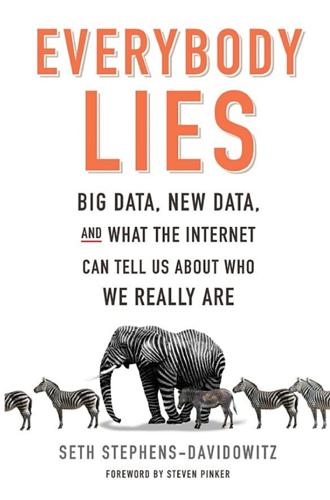
Everybody Lies: Big Data, New Data, and What the Internet Can Tell Us About Who We Really Are
by
Seth Stephens-Davidowitz
Published 8 May 2017
The company plays a crucial role in this book since Google searches are by far the dominant source of Big Data. But it is important to remember that Google’s success is itself built on the collection of a new kind of data. If you are old enough to have used the internet in the twentieth century, you might remember the various search engines that existed back then—MetaCrawler, Lycos, AltaVista, to name a few. And you might remember that these search engines were, at best, mildly reliable. Sometimes, if you were lucky, they managed to find what you wanted. Often, they would not. If you typed “Bill Clinton” into the most popular search engines in the late 1990s, the top results included a random site that just proclaimed “Bill Clinton Sucks” or a site that featured a bad Clinton joke.
…
A/B testing ABCs of, 209–21 and addictions, 219–20 and Boston Globe headlines, 214–17 in digital world, 210–19 downside to, 219–21 and education/learning, 276 and Facebook, 211 future uses of, 276, 277, 278 and gaming industry, 220–21 and Google advertising, 217–19 importance of, 214, 217 and Jawbone, 277 and politics, 211–14 and television, 222 Abdulkadiroglu, Atila, 235–36 abortion, truth about, 147–50 Adamic, Lada, 144 Adams, John, 78 addictions and A/B testing, 219–20 See also specific addiction advertising and A/B testing, 217–19 causal effects of, 221–25, 273 and examples of Big Data searches, 22 Google, 217–19 and Levitt-electronics company, 222, 225, 226 and movies, 224–25 and science, 273 and Super Bowl games, 221–26 TV, 221–26 African Americans and Harvard Crimson editorial about Zuckerberg, 155 income and, 175 and origins of notable Americans, 182–83 and truth about hate and prejudice, 129, 134 See also “nigger”; race/racism age and baseball fans, 165–69, 165–66n and lying, 108n and origins of political preferences, 169–71 and predicting future of baseball players, 198–99 of Stormfront members, 137–38 and words as data, 85–86 See also children; teenagers Aiden, Erez, 76–77, 78–79 alcohol as addiction, 219 and health, 207–8 AltaVista (search engine), 60 Alter, Adam, 219–20 Amatriain, Xavier, 157 Amazon, 20, 203, 283 American Pharoah (Horse No. 85), 22, 64, 65, 70–71, 256 Angrist, Joshua, 235–36 anti-Semitism. See Jews anxiety data about, 18 and truth about sex, 123 AOL, and truth about sex, 117–18 AOL News, 143 art, real life as imitating, 190–97 Ashenfelter, Orley, 72–74 Asher, Sam, 202 Asians, and truth about hate and prejudice, 129 asking the right questions, 21–22 assassinations, 227–28 Atlantic magazine, 150–51, 152, 202 Australia, pregnancy in, 189 auto-complete, 110–11, 116 Avatar (movie), 221–22 Bakshy, Eytan, 144 Baltimore Ravens-New England Patriots games, 221, 222–24 baseball and influence of childhood experiences, 165–69, 165–66n, 171, 206 and overemphasis on measurability, 254–55 predicting a player’s future in, 197–200, 200n, 203 and science, 273 scouting for, 254–55 zooming in on, 165–69, 165–66n, 171, 197–200, 200n, 203 basketball pedigrees and, 67 predicting success in, 33–41, 67 and socioeconomic background, 34–41 Beane, Billy, 255 Beethoven, Ludwig von, zooming in on, 190–91 behavioral science, and digital revolution, 276, 279 Belushi, John, 185 Benson, Clark, 217 Berger, Jonah, 91–92 Bezos, Jeff, 203 bias implicit, 134 language as key to understanding, 74–76 omitted-variable, 208 subconscious, 132 See also hate; prejudice; race/racism Big Data and amount of information, 15, 21, 59, 171 and asking the right questions, 21–22 and causality experiments, 54, 240 definition of, 14, 15 and dimensionality, 246–52 and examples of searches, 15–16 and expansion of research methodology, 275–76 and finishing books, 283–84 future of, 279 Google searches as dominant source of, 60 honesty of, 53–54 importance/value of, 17–18, 29–33, 59, 240, 265, 283 limitations of, 20, 245, 254–55, 256 powers of, 15, 17, 22, 53–54, 59, 109, 171, 211, 257 and predicting what people will do in future, 198–200 as revolutionary, 17, 18–22, 30, 62, 76, 256, 274 as right data, 62 skeptics of, 17 and small data, 255–56 subsets in, 54 understanding of, 27–28 See also specific topic Bill & Melinda Gates Foundation, 255 Billings (Montana) Gazette, and words as data, 95 Bing (search engine), and Columbia University-Microsoft pancreatic cancer study, 28, 30 Black, Don, 137 Black Lives Matter, 12 Blink (Gladwell), 29–30 Bloodstock, Incardo, 64 bodies, as data, 62–74 Boehner, John, 160 Booking.com, 265 books conclusions to, 271–72, 279, 280–84 digitalizing, 77, 79 number of people who finish, 283–84 borrowing money, 257–61 Bosh, Chris, 37 Boston Globe, and A/B testing, 214–17 Boston Marathon (2013), 19 Boston Red Sox, 197–200 brain, Minsky study of, 273 Brazil, pregnancy in, 190 breasts, and truth about sex, 125, 126 Brin, Sergey, 60, 61, 62, 103 Britain, pregnancy in, 189 Bronx Science High School (New York City), 232, 237 Buffett, Warren, 239 Bullock, Sandra, 185 Bundy, Ted, 181 Bush, George W., 67 business and comparison shopping, 265 reviews of, 265 See also corporations butt, and truth about sex, 125–26 Calhoun, Jim, 39 Cambridge University, and Microsoft study about IQ of Facebook users, 261 cancer, predicting pancreatic, 28–29, 30 Capital in the 21st Century (Piketty), 283 casinos, and price discrimination, 263–65 causality A/B testing and, 209–21 and advertising, 221–25 and Big Data experiments, 54, 240 college and, 237–39 correlation distinguished from, 221–25 and ethics, 226 and monetary windfalls, 229 natural experiments and, 226–28 and power of Big Data, 54, 211 and randomized controlled experiments, 208–9 reverse, 208 and Stuyvesant High School study, 231–37, 240 Centers for Disease Control and Prevention, 57 Chabris, Christopher, 250 Chance, Zoë, 252–53 Chaplin, Charlie, 19 charitable giving, 106, 109 Chen, M.
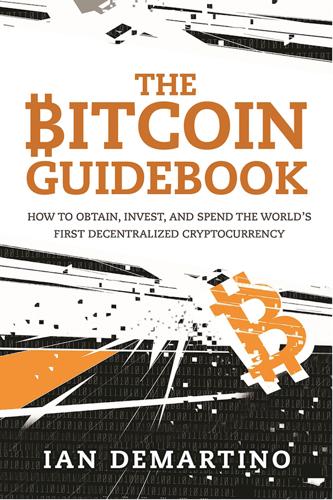
The Bitcoin Guidebook: How to Obtain, Invest, and Spend the World's First Decentralized Cryptocurrency
by
Ian Demartino
Published 2 Feb 2016
I preach a bit more patience but the point remains: a lot will be determined by then. Predicting anything is tough with a new technology, because the changes are amplified drastically when the in-hindsight obvious uses are in place. Imagine trying to predict AltaVista, Geocities, and ICQ before web browsers existed, then imagine trying to predict Facebook, Reddit, and Google Earth in 2000 when AltaVista, Geocities, and ICQ were still Internet mainstays. Given that I will likely be wrong at least as often as I am right, what kind of services do I see evolving in a cryptocurrency wonderland? Amazing ones. Altcoins are currently plagued by speculative investing.

Lurking: How a Person Became a User
by
Joanne McNeil
Published 25 Feb 2020
Most of the first websites I visited, I found out about in alt-weeklies and magazines. The internet was a place back then, not yet a person, so those guides were like AAA TripTiks. Google created demand for internet search as we now experience it. There were plenty of search engines in 1998—Excite, Lycos, AltaVista, WebCrawler, Yahoo, HotBot, Infoseek, Inktomi, Snap, Direct Hit, Magellan, Ask Jeeves—and none had an obvious revenue stream. The major players, like Lycos and Yahoo, sorted topics in directories with trees of categories (art, sports, news, local), which was helpful for users who logged on and found themselves unsure what to click next.
…
Note cards documenting the questions were also featured on the NYPL Instagram account at the time. I got the number “2,738 websites in 1994” and other figures from the website Internet Live Stats. Also, it should be noted that Archie was the first internet search engine—created by Alan Emtage in 1989. There were several web search engines in the 1990s, including Excite, Lycos, AltaVista, WebCrawler, Yahoo, HotBot, Infoseek, Inktomi, Snap, Direct Hit, Magellan, and Ask Jeeves. For years, I could have sworn HotBot had the most relevant results, and I was surprised to learn many, many years later that it was only the skin for search that the Inktomi database provided. In addition to the Lycos and Yahoo model of directories, there was a user-sorted directory called DMOZ, which shut down in 2017.

The Business of Platforms: Strategy in the Age of Digital Competition, Innovation, and Power
by
Michael A. Cusumano
,
Annabelle Gawer
and
David B. Yoffie
Published 6 May 2019
While most transaction platforms start with just two sides, they often add other sides over time. The question of how many sides to add and when to add them is strategically important, and its answer may not be so obvious before the fact. For example, most of us take for granted that advertisers subsidize Internet search, but this was not always the case. Inktomi and AltaVista were first-generation search engines that did not rely on advertisers, nor did they monetize their search. Most of them failed as businesses. Google was initially no different: It provided search results for free and generated no revenue. Although Google developed a superior search technology, the management team’s crucial decision was to turn its search engine into a transaction platform by bringing advertisers on board in a clever way.
…
See artificial intelligence Airbnb Community Commitment for fighting discrimination, 90–91 and current laws, 206–7 effect on hotels, 142 launch and build up of supply side, 74–75 liability limitations, 93 predecessors, 107 pricing decisions, 81 regulatory scrutiny, 111 subsidizing one side of platform, 76 Alibaba (China), 58, 121 Alibaba’s Taobao, 65, 76, 83, 120–23, 120f Allaire, Jeremy, 67–68 Allen, Paul, 3 Alphabet, 8, 176, 185. See also Google AltaVista, 70 Amazon competitors, 55 derivation of success, 24 effect of, 10 as hybrid platform company, 100 in India, 159 market share and tactics, 200–201 as one of “the Frightful Five,” 176–77 and Pharmapacks, 145–47 squelching competition, 56 and state sales taxes, 201–2 and Toys “R” Us, 152 Walmart compared to, 154 Amazon Echo with Alexa, 100, 221–23 Amazon Kindle, 100 Amazon Marketplace overview, 57–58 Fulfillment by Amazon service, 83, 154–55 growth of, 154–55 guarantee and return service, 93 percentage of Amazon revenues attributed to, 24 and sales taxes, 202 subsidizing one side of platform, 76 Amazon Web Services (AWS) as digital infrastructure for Amazon, 100 GE building Predix on, 163 percentage of Amazon revenue attributed to, 24 American Telephone & Telegraph (AT&T) network effects and market share, 34–37, 41 White Pages and Yellow Pages, 32–33, 37–41, 253n12 Android.

The Sharing Economy: The End of Employment and the Rise of Crowd-Based Capitalism
by
Arun Sundararajan
Published 12 May 2016
Attention, Search, and Discovery As the World Wide Web blossomed in 1994, anyone with an Internet connection could publish content accessible to anyone else with an Internet connection. This massive influx of decentralized content almost immediately led to the emergence of a set of search engines and directories that facilitated discovery—among them, Yahoo (initially a hand-curated directory), Lycos, Infoseek, and Altavista. These search engines were able to index and organize the Web’s information with a reasonable level of comprehensiveness, but were unable to provide any reliable “quality” information in an automated way. It took until 1998 and the emergence of Google before we had a good search engine for not just finding what we wanted, but for focusing us on what might be pertinent—a reliable system for both discovery and for ranking.
…
See also Accommodation platforms blurring of boundaries and, 141–142 convenience of, 128 ease of using, 124 entrepreneurial nature of, 194 externalities, 140 financing of, 25 founding and growth of, 7–9, 131 gift aspect of, 39–40 gift economy aspects, 35 hotel taxes and, 186 impact on hotel industry, 121–122, 129, 216–217n11, 219n3 increased variety and consumption with, 121 local network effects, 120 as microentrepreneurship, 125 as micro-outsourcing, 77 peer regulation and, 151–152 pricing, supply, and merchandising, 194–195 regulation and, 131–136, 154, 155 search capability, 97 shared redistribution, 82 trust and, 61, 62, 64, 65, 98, 145, 147 Alaska Permanent Fund, 190 Alibaba, 48, 97, 99 Alone Together (Turkle), 45 Altavista, 96 Amazon, 37, 47, 54, 57, 91, 203 logistics, 99 market value, 96 price search comparisons and product offerings, 112 search capability, 97 user-generated reviews, 147 Walmart and, 98–99 American Hotel and Lodging Association (AHLA), 134–135 American Medical Association, 153, 192 Amtrak, 12 Andreessen, Marc, 59–60, 87 Andreessen Horowitz, 25, 87 AngelList, 42–43 Apple, 2, 55, 203 iTunes, 54, 56, 57, 91, 93 Apple Core Hotels, 121 Arthurs, H.
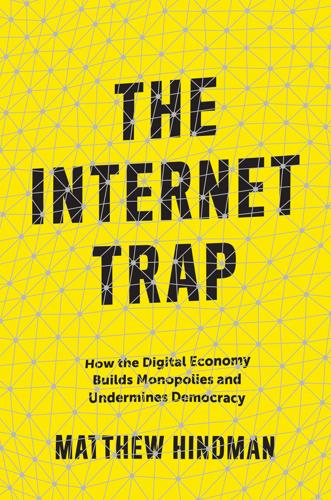
The Internet Trap: How the Digital Economy Builds Monopolies and Undermines Democracy
by
Matthew Hindman
Published 24 Sep 2018
Rockefeller, Jr. on trusts, quoted in Ida Tarbell’s The History of the Standard Oil Company In early 2000, Google conducted one of its first online experiments. The result was a disaster. Google’s mistake started with a simple question: How many results should it return per search query? The young company had always given users ten results, because that was what previous leader AltaVista had done. Competing search engines like Yahoo! returned twenty, though, and focus groups suggested that users preferred more.1 Google’s researchers decided to try a real world test, splitting off groups of users to receive twenty, twenty-five, or thirty results instead of ten. But when they checked a month later, they found—to their shock—that more results had produced huge drops in traffic.
…
INDEX Italic pages refer to figures and tables ABC News, 75 A/B testing: attention economy and, 13; personalization and, 43, 53, 57; nature of the internet and, 170, 174–76; news and, 150–54, 158; recommendation systems and, 43; tilted playing field and, 27–28, 31 Accelerated Mobile Platform (AMP), 80, 144, 179 activism, 48, 103, 169 Adams, William, 65 Adaptive Semantics, 19 advertising: attention economy and, 3–4, 7, 11, 13; branding and, 28–32, 36, 86, 166; click-through rates and, 56–57; cost per thousand impressions (CPM) and, 69; economic geography and, 3–4, 63, 67–69, 80; Google and, 68–69; inversion of, 135, 178; local vs. national per-person rates and, 68; models and, 181–84; nature of internet and, 163–64, 168, 176, 178; new economics of, 67–69; news and, 102, 109, 129, 134–35, 138, 140–46, 163–64, 168, 176, 178; newspapers and, 11, 28, 57, 68–69, 102, 129, 135, 138, 140, 142–44, 164, 178–79; political economy and, 38, 40–41, 48, 56–58, 60; property targeting and, 56–57; remnant, 69; Super Bowl and, 68; television and, 68; tilted playing field and, 15, 17, 25, 28–36, 30 African Americans, 123–25, 126, 191 agglomeration, 9, 63, 82–83 aggregation, 65–67, 76–77 AIG, 86 Ajax, 34 algorithms: black box problem and, 52; deep learning and, 21; filters and, 39, 43, 48, 54, 60; K-nearest neighbor, 44–45, 54; lessons from, 48–53, 59–61; nature of internet and, 178; need for more data and, 50–51, 61; news and, 147, 151–52; personalization and, 39–44, 48–54, 60–61; principle component analysis (PCA) and, 46; Restricted Boltzmann Machine, 46; ridge regression, 46; root mean-squared error (RMSE) and, 43–44, 47–48, 50; Russian hackers and, 178; search costs and, 41–43; singular value decomposition (SVD), 45, 58–59. See also recommendation systems AltaVista, 1 Amazon: antitrust and, 173, 175; attention economy and, 3, 12; AWS and, 153, 168, 203n28; Bezos and, 72, 139, 147, 150; Hitwise and, 87; nature of internet and, 164, 168, 173, 175, 203n28; news and, 135, 147, 153; personalization and, 39, 42–43; recommendation systems and, 42–43, 147; server farms of, 20; tilted playing field and, 20, 22, 26, 28; traffic and, 87 American Association of News Editors, 159 American Community Survey, 190 American Press Institute, 159 Analytic Activism (Karpf ), 169 Anderson, Chris, 70 Android, 18, 27, 143, 168 antitrust laws, 42, 170, 172–75, 199n15 AOL, 9, 24, 79, 102–3 Apple: antitrust and, 173; attention economy and, 9; economic geography and, 79–80; iOS and, 18, 143, 168; iPad and, 39, 142, 144; iPhone and, 107, 142–43; nature of internet and, 173, 176, 179; news and, 79–80, 143–45, 179; Safari and, 145, 176; tilted playing field and, 15 apps: attention economy and, 3–4, 13; economic geography and, 80; nature of internet and, 167, 170, 172, 179; news and, 109, 143–44, 151, 153, 167, 170, 172, 179; personalization and, 58, 60–61; tilted playing field and, 16, 18, 26, 28 226 • Index Armstrong, Tim, 102–3 artificial intelligence (AI), 2, 44 Associated Press, 149 AT&T, 17, 20, 22, 44, 46–47, 50, 101, 196n15 Ataullah, Ahmed, 31–32 attention economy: advertising and, 3–4, 7, 11, 13; Amazon and, 3, 12; Apple and, 9; apps and, 3–4, 13; audience reach and, 11–14; better models and, 8–10; Bing and, 3; blogs and, 7–9, 13; competition and, 1, 3–4, 6, 9, 11, 13, 165–66; concentration and, 2–9, 13; consumption and, 6, 10; economies of scale and, 7–8; efficiency and, 4, 7; email and, 2–3; experiments and, 1–2, 11, 193n1; Facebook and, 3–4, 8–9, 12; forces of concentration and, 5–8; free audience and, 11–14; Google and, 1–4, 8–9, 12, 193n1; innovation and, 11; investment and, 4, 9, 12–13; journalism and, 7, 10–13; markets and, 3, 5, 8–11; Microsoft and, 3, 9; models and, 5–13; networks and, 3, 7–8, 12; news and, 2, 5, 8–14; newspapers and, 10–11; personalization and, 8, 13, 40; profit and, 7; public sphere and, 10–11, 13–14, 99, 169; quality and, 12; rankings and, 7; rethinking, 1–14; revenue and, 2–4, 8, 10–11; scarcity of attention and, 2–5; search engines and, 1–3, 8, 13; software and, 2, 4; speed and, 1–2, 21–25, 30, 54, 81–82, 147–48, 166–67, 170, 190, 193n1, 193n2; stickiness and, 2, 11, 13; subscriptions and, 4; television and, 11–12; traffic and, 1, 3, 7–13; video and, 2, 4, 7; Yahoo!
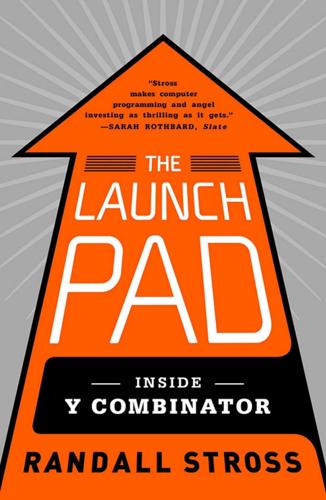
The Launch Pad: Inside Y Combinator, Silicon Valley's Most Exclusive School for Startups
by
Randall Stross
Published 4 Sep 2013
After college, as a bored engineer at Intel, Buchheit decided to look for something that was more engaging than what he was doing. The idea of joining a startup that would likely soon die was just fine—he was single at the time and did not have a mortgage to worry about. In June 1999, he applied to Google, which then had only twenty-two employees. He was fairly certain that AltaVista would soon destroy the little startup, but he could see that Google had smart people and offered work that would let him learn something, and that’s all he was looking for. He told Jessica Livingston many years later, in Founders at Work, “It worked out well, but it wasn’t like I saw this company and said, ‘Oh, wow, this is going to succeed!’
…
Abbott, Ryan, 46, 171, 174, 177, 180, 181 Adidas, 234 Adpop Media, 46–47, 122–23, 129 AeroFS, 231 Airbnb, 4, 43, 88, 95 AirTV, 103–4 circumvention, 177–78 investors seeking next, 207 Kutcher, Ashton, 265n1 marketplace, 179 Sift Science, 210 Vidyard, 103–5, 120 Aisle50, 51–52, 191, 208–9, 223, 233 Akamai, 101 Albertsons, 209 Allen, Paul, 16 AlphaLab, 41 Altair BASIC, 11, 68 AltaVista, 204 Altman, Sam, 220 on buzzwords, 18–19 CampusCred, 111–14 interviewing finalists, 11, 21 Rap Genius, 196–202 Science Exchange, 173 Sift Science, 75–76 speaking style, 114, 115, 196 YC partner, 63, 150 Amarasiriwardena, Thushan, 127–28 Amazon, 126 Interview Street, 213 Mechanical Turk, 89, 90 movie rentals, 106 web services, 32, 101, 131, 132 Andreessen Horowitz, 4, 66, 230 Andreessen, Marc, 1–2, 4, 215, 239 Android, 17, 122, 147, 212 NFC, 157, 158 speech recognition, 210 Andrzejewski, Alexa, 54 angel investors, 28, 86–87, 189–90 AnyAsq, 166–67 Anybots, 12, 27, 40, 63 AOL, 124, 126 AppJet, 64, 204 Apple, 69 App Store, 100, 127 cofounders, 161 headquarters, 251n1 iOS devices, 122, 127–28, 142, 147, 172, 187, 209, 212 Sequoia Capital, 3 Snapjoy, 187 Arrington, Michael, 48–49 The Art of Ass-Kicking blog (Shen), 9 Artix, 25, 27, 29 Ask Me Anything, 166 Auburn University, 29 Auctomatic, 64, 66, 159, 204 Austin, TX, 42 Australia, 17, 238 Ballinger, Brandon, 70–76, 121, 134–38, 209–10 Barbie, 53 Bard College at Simon’s Rock, 52 Beatles, 200 Bechtolsheim, Andy, 86 Bellingham, WA, 101 Benchmark Capital, 5 Berkeley (UC) CampusCred, 20, 111 graduates of, 9, 68, 135, 164 Information, School of, 89, 90 newspaper, 136 students, 20, 52–53, 135 Venture Lab Competition, 53 women in computer science, 53 Bernstam, Tikhon, 122, 166, 185–86, 212, 228, 230–31 Bernstein, Mikael, 213–14 Betaspring, 42 Bible, 127, 197, 199, 200 Bill of Rights, 197 Bing Nursery School, 52 Birmingham, AL, 29, 33, 51, 203, 223 BizPress, 125, 147–48, 192 BlackBerry, 157, 184 Blackwell, Trevor Anybots, 27 interviewing finalists, 10, 11–12, 32–33 Kiko, 16 Viaweb, 25 YC partner, 27, 40, 57, 63 Blank, Steve, 77 Blogger, 57 Blomfield, Tom, 191 Bloomberg, Michael, 227 Bloomberg TV, 55 Blurb.com, 12 BMW, 165 Books On Campus, 164 BoomStartup, 42 Boso, 57–58, 60 Boston, MA, 56 Boston University, 112 Boucher, Ross, 64 Boulder, CO, 41, 43, 53, 130 Box, 54 Boyd, E.
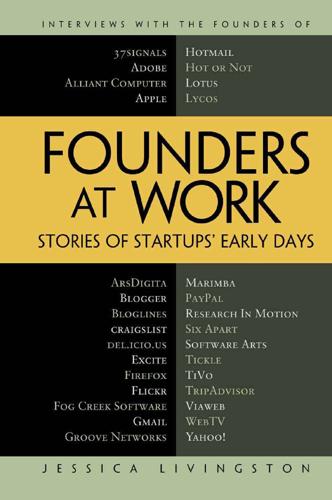
Founders at Work: Stories of Startups' Early Days
by
Jessica Livingston
Published 14 Aug 2008
Because we always thought it was going to be a leapfrogging game. No one is ever going to be able to get so far ahead that we’d ever be in strategic risk of kingmaking a full-text search engine, because you just can’t do that. Google ended up doing exactly that. At the time, until 2000/2001, we had Open Text first, then I think we had AltaVista, then Inktomi. So we just switched off as better technologies became available. We just switched out the old partners with the new ones and always had the best-of-breed search as our falloff. Livingston: Was this invisible to the users? Brady: Yes, it was largely invisible to our users. Even though their brands were there, you came to the front page of Yahoo; you searched; the search result had a Yahoo brand on the upper-left and the technology provider had a smaller brand.
…
For me, I was actually single at the time, I didn’t have a mortgage, so the idea of joining a little startup that may well be destroyed was just like, “That will be fun.” Because I kind of thought, “Even if Google doesn’t make it, it will be educational and I’ll learn something.” Honestly, I was pretty sure AltaVista was going to destroy Google. Repairing the disk electronics on an early Gmail prototype. C H A P T E 13 R Steve Perlman Cofounder,WebTV One weekend in 1995, Steve Perlman tested his theory that the Web could look as good on a TV screen as it did on a computer monitor. In 3 days of roundthe-clock effort, he built a thin client for surfing the Web, using a television as a display.
…
Graham: I said that this was part of his graduate student career and that it was a common thing for people in graduate school to take jobs working in research labs during the summer and, yes, this was another company, but it was really more of a research lab than a company. That part was certainly true. When they tried to turn AltaVista into a company, it was disaster. Livingston: What was the next turning point after Robert left for his summer job? Graham: Our main angel investor, the metals trader, was encouraged that the big company had wanted to buy us, so that spring he’d put more money in—still angel-scale money. We weren’t desperately running out of money, but we were going to run out sometime in the fall.

Utopia Is Creepy: And Other Provocations
by
Nicholas Carr
Published 5 Sep 2016
The impetus, again, seems to be a mix of frustration with Bloglines’s glitches and the availability of a decent and convenient alternative operated by the giant Google. During the 1990s, when the World Wide Web was new, it exerted a strong centrifugal force. It pulled us out of the orbit of big media outlets and sent us skittering to the outskirts of the info-universe. Early web directories like Yahoo and early search engines like AltaVista, whatever their shortcomings (perhaps because of their shortcomings), led us to personal web pages and other small, obscure, and often oddball sources of information. The earliest web loggers, too, took pride in ferreting out and publicizing far-flung sites. And, of course, the big media outlets were slow to move to the web, so their gravitational fields remained weak or nonexistent online.
…
Abbas ibn Firnas, 329, 341 Abedin, Huma, 315 Abercrombie & Fitch, 244–45 accessibility, 99–100, 199–200, 268 instantaneous, 57, 232, 241, 264, 267 of music, 293 Adams, John, 325 Adderall, 304 Addiction by Design (Schüll), 218–19 Adorno, Theodor, 153–54 advertising, 15, 31, 168, 255, 258, 264 edginess in, 10–11 as pervasive, 64 search-linked, 279–80 in social media, 53–54 in virtual world, 27 see also marketing Advisory Council on the Right to Be Forgotten, 194 AdWords, 279 aesthetic emotions, 249–50 Against Intellectual Monopoly (Levine), 276 Agar, Nicholas, 339 Agarwal, Anant, 133 air disasters, 322–23 Air France Flight 447, 322 Akamai Technologies, 205 “Alastor” (Shelley), 88 Alfred P. Sloan Foundation, 272 algorithms, 113, 136, 145, 167, 174, 190–94, 237, 238, 242, 257, 258 allusion, cultural nuances of, 86–89 alphabet, ideograms vs., 234 Altamont concert, 42 AltaVista, 67 amateurs, 33 creativity of, 49 internet hegemony of, 4–8 media production by, 81 Amazon, 31, 37–38, 92, 142, 256, 277, 288 ambient overload, 90–92 America Online, 279–80 “Amorality of Web 2.0, The” (Carr), xxi–xii Amtrak derailment, 323 analog resources, 148–50 Anders, Günther, 321 Anderson, Chris, 68 Andreessen, Marc, xvii Andrews, James, 134 Android phones, 156, 283 anticonsumerism, 83–85 anxiety, 186, 304 Apple, 125 Apple Corps, 71 Apple II, 76–77 archiving, cultural memory and, 325–28 Arendt, Hannah, 310–11 Aristotle, 174, 307–9 art: allusion in, 89 bundling of musical tracks as, 42–43 by-number, 71–72 digitalization of, 223 emotional response to, 249–50 “free” vs.

The Industries of the Future
by
Alec Ross
Published 2 Feb 2016
There is no reason why you shouldn’t have almost perfectly secure transfer of money with traceability. Cryptocurrency and digital currency are here to stay. And it will get more powerful, not less.” So what will be the future digital currency landscape? When I think of cryptocurrencies, I think of the search engines of the 1990s—WebCrawler, AltaVista, Lycos, Infoseek, Ask Jeeves, MSN Search, Yahoo!—and wonder if there is a Google among them. I think the vast majority of the cryptocurrencies in circulation today will disappear to nothing, but the category will endure. I think that the cryptocurrency that breaks out (whether it is Bitcoin or another) will shed its cryptolibertarian roots and embrace the responsibilities that come with being economically significant.
…
See also cancer African Robotics Network (AFRON), 21 aging, 19, 26, 63, 214 agriculture: American Civil War and, 7 Argentina and, 223 Belarus and, 208 data and, 178, 181–82 land and, 152, 178, 185 precision agriculture, 161–66, 181, 191–93 Rwanda and, 238 Soviet Union and, 68 Tanzania and, 235 technology and, 3, 5, 160–62 universal machine translation and, 160 Airbnb, 91–97 AIST, 17 Alexander, Keith, 129 Alibaba, 82, 228 AltaVista, 119 Amazon, 4, 31, 48, 90, 93, 98, 157 Andela, 234–35, 239, 248 Andreessen Horowitz, 105, 116, 119, 123, 149, 164 Andreessen, Marc, 103–5, 113–14, 116, 119, 186–87, 195, 204 antidepressants, 53–55. See also mental illnesses Apple, 36, 79, 87 application programming interfaces (APIs), 168 Apps4Africa, 236 Aramco, 122–23, 138, 224 Argentina, 104, 223 ASIMO (Advanced Step in Innovative Mobility robot), 16–17.

Zucked: Waking Up to the Facebook Catastrophe
by
Roger McNamee
Published 1 Jan 2019
Winners were so valuable that a fund needed only one to provide a great return. When hardware and networks act as limiters, software must be elegant. Engineers sacrifice frills to maximize performance. The no-frills design of Google’s search bar made a huge difference in the early days, providing a competitive advantage relative to Excite, Altavista, and Yahoo. A decade earlier, Microsoft’s early versions of Windows failed in part because hardware in that era could not handle the processing demands imposed by the design. By 2004, every PC had processing power to spare. Wired networks could handle video. Facebook’s design outperformed MySpace in almost every dimension, providing a relative advantage, but the company did not face the fundamental challenges that had prevailed even a decade earlier.
…
Accel Partners, 54, 58 Acxiom, 226 addiction, 100–101, 106–7, 162, 206, 240, 246, 250, 253, 254, 257, 268, 269, 281 advertising, 17, 47, 68–69, 85–86, 105, 120, 125, 257, 283–84 Facebook and, 11–12, 47, 59–61, 63, 68–77, 85, 103, 119, 128–29, 130, 132, 143, 148, 173, 184, 185, 202, 207–9, 211, 217–19, 237–38, 258, 265, 270, 281 Google and, 47, 67–69, 86, 104, 173, 283–86 political, microtargeting in, 237–38 YouTube and, 103, 283–84 Albright, Jonathan, 125 Alcorn, Al, 34 algorithms, 66, 94, 98, 122, 128, 129, 169, 264 extreme views and, 92 of Facebook, 4, 9, 11, 66, 74, 76, 81, 87, 91, 128–29, 143, 166, 232, 235, 243, 270, 274, 277, 281 of Google, 66, 235 of YouTube, 92–93, 139, 274 Allen, Paul, 25 Altair, 34 Altavista, 42 Alter, Adam, 272 Amanpour, Christiane, 147 Amazon, 16, 27, 36, 38, 68, 137, 224, 262, 283 Alexa, 137, 262, 268, 271, 281 Echo, 236 market power of, 46 monopoly power and antitrust issues, 47–48, 136–40, 225–26, 246, 247, 261, 262, 284 Web Services, 40, 41, 137, 138 words associated with, 231 American Academy of Pediatrics, 273 Anderson, Chris, 109 Anderson, Fred, 14 Andreessen, Marc, 27, 36, 37, 43, 58 Android, 138, 204, 271, 282 angel investors, 48 anonymity, 37, 55, 92, 101, 123 antitrust and monopoly issues, 46–48, 136–41, 162, 220, 223, 224, 227, 234, 238, 246, 247, 250, 261–63, 277, 279, 281–83, 285–87 Amazon and, 47–48, 136–40, 225–26, 246, 247, 261, 262, 284 AT&T and, 224–25 Facebook and, 47–48, 100, 136–41, 162, 225–26, 234, 246, 247, 261, 263, 284 Google and, 47–48, 136–40, 162, 225–26, 234, 246, 247, 261–63, 282, 284 Microsoft and, 46–47, 154–55, 286 Apache, 40 Apple, 14, 25, 29–30, 34, 35, 38, 49, 50, 83, 118, 249 iPhone, 38, 84, 100, 105–6, 271 Jones and Infowars and, 228–29 market power of, 46 Onavo and, 140 privacy and, 38, 158, 271 Silver Lake and, 29–30 words associated with, 231 approval, need for, 98 Apture, 107 Arab Spring, 64, 243 ARPANET, 34–35 artificial intelligence (AI), 69, 84–85, 88, 98, 128, 151, 158, 219–20, 223, 236, 252, 260, 261, 263, 264, 267–69, 272 of Facebook, 10, 11, 69, 85, 87, 91, 95, 108, 203, 219–20, 230, 261 of Google, 108, 219–20, 253, 261 Associated Press, 124 AT&T, 224–25 Atari, 34 Atlantic, 195, 231 Attention Merchants, The (Wu), 120 attorneys general, 120, 172, 227 authoritarianism, 278, 279 automobiles, 158, 223 banks, 231–32 Bannon, Steve, 181, 182, 197, 199 Bast, Andy, 109 Belgium, 247 Bell Labs, 225 Berners-Lee, Tim, 36, 161 Bezos, Jeff, 27 Black Lives Matter, 8, 243, 250, 275 Blacktivist, 131 Bloomberg, 50 Blumenthal, Richard, 128 Bodnick, Marc, 14, 18, 59 Bogost, Ian, 195–96 Bolton, Tamiko, 161–62 Bono, 13, 18, 28–29, 30, 59–61, 159 Booker, Cory, 128 Bosworth, Andrew “Boz,” 160, 165 memo of, 204–6 bots, 90, 116, 124, 126, 174, 177, 227 bottomless bowl, 97 Box, 41 brain, 88 brain hacking, 81–82, 118, 141, 148 Brand, Stewart, 177 Brazil, 280 Brexit, 8–9, 96, 180, 196, 198, 244 Breyer, Jim, 58 Bricklin, Dan, 34 Brin, Sergey, 27 bro and hipster cultures, 49–50 Brotopia (Chang), 50 bullying, 87, 101–2, 205, 253, 269, 273, 280, 281 Bushnell, Nolan, 34 Business Insider, 141 BuzzFeed, 204 California, 227–28 environmental regulations in, 201 secession movement, 114, 115 Cambodia, 215, 246 Cambridge Analytica, 78, 180–98, 199, 202–4, 207, 208, 210, 213, 216–18, 251, 259 Cambridge University, 181 Candy Crush, 191, 269 capitalism, 200, 201, 220, 238, 262 Castor, Kathy, 210–11 cell phones, 36, 225 see also smartphones censorship, 252 Center for Humane Technology (CHT), 157, 166–67, 173, 188, 272 Chancellor, Joseph, 181, 186 Chang, Emily, 50 Chaos Monkeys (García Martínez), 71, 72, 73 Chaslot, Guillaume, 92 Chicago School antitrust philosophy, 137–39, 285, 286 children, 214, 240, 253–54 technology and, 106, 156, 166, 237, 255, 268, 269, 272–73, 279–80 China, 162, 205, 215–16 Cisco, 46 CityVille, 191 Clayton Act, 136 Clinton, Bill, 60 Clinton, Chelsea, 167 Clinton, Hillary, 5, 11, 117, 121, 124, 125, 130, 166 Facebook Groups and, 7–8 Clinton Foundation, 130 cloud, 38, 40, 41, 104, 249, 250 Amazon Web Services, 40, 41, 137, 138 CNBC, 118, 161 CNN, 130–31, 147, 161, 193, 229, 231 Coca-Cola, 141 Cohen, Michael, 209–10 Cold War, 32 Columbia University, 54 Common Sense Media, 119, 156–57, 167, 227, 272 Compaq Computer, 27, 35, 152 competition: lack of alteratives to Facebook and Google, 92, 100, 141, 223, 280 see also antitrust and monopoly issues computers, computing, 22, 25, 31–36, 108, 225 in classrooms, 273 cloud, see cloud minicomputers, 33, 46 PCs, 17, 22, 25, 29, 33–36, 40, 42, 45, 46, 273 Congress, 121–33, 135–36, 152, 154, 163, 200, 208, 222, 226, 238 House Energy and Commerce Committee, 209–10, 227 House Intelligence Committee, 123, 127–28, 132, 133, 167, 227 Senate Commerce Committee, 209 Senate Intelligence Committee, 12, 111–12, 127, 132 Senate Judiciary Committee, 128, 131, 132, 136, 209 Zuckerberg’s testimony before, 209–12, 216, 217 Conservative Political Action Conference (CPAC), 174 conspiracy theories, 92–95, 115, 119, 121, 214, 228, 229, 234, 242, 243, 274 Pizzagate, 124–26, 130 Constitution, 12, 259 Fourth Amendment to, 201 content vendors, 283 Conway, Ron, 48 Cooper, Anderson, 81 copyrights, 281 Cosgrave, Paddy, 108–9 Cow Clicker, 195–96 Cox, Chris, 144 Cox, Joseph, 229–30 Cruz, Ted, 185 Currier, James, 47 Cyprus, 125 Czech Republic, 125 Dalai Lama, 31 dark patterns, 96 data and data privacy, 155, 158, 159, 203, 217, 220, 234–36, 238, 253, 258–59, 263–65, 269, 271–72, 277–84 Apple and, 38, 158, 271 Big Data, 158 browsing history, 218–19 Cambridge Analytica and, 78, 180–98, 199, 202–4, 207, 208, 210, 213, 216–18, 251, 259 combined sets of, 68, 285–86 and data as currency, 285 data ownership, 222, 237, 247, 259, 264 data portability, 247 Facebook’s banning of data brokers, 208 Facebook’s continuing threat to, 246 Facebook user data, 4–5, 9, 62, 72, 75–76, 78, 87, 131–32, 141–42, 174, 180–98, 202–4, 210–11, 216–19, 223, 258–59 Facebook user privacy settings, 97 fiduciary rule and, 226–27, 247, 260–61 Global Data Protection Regulation, 221, 222, 224, 259–60 and Internet of Things, 262, 268, 271 and internet as barter transaction, 285 internet privacy bill of rights, 221–24, 226–27 metadata, 68–69, 211, 217–20, 264 passwords and log-ins, 249–50, 271 “price” of data, 285–86 regulations and, 201 and value of data vs. services, 286 Zuckerberg’s attitudes regarding, 4–5, 55–56, 60, 141–42 Data for Democracy, 90, 122, 127 Dead & Company, 74 Defense, U.S.
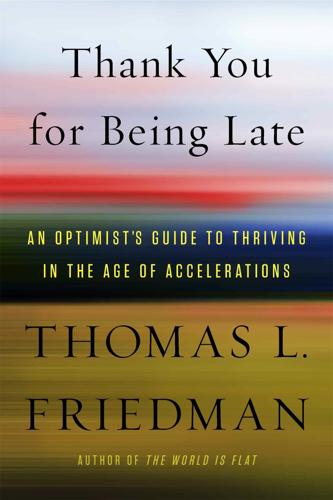
Thank You for Being Late: An Optimist's Guide to Thriving in the Age of Accelerations
by
Thomas L. Friedman
Published 22 Nov 2016
Yahoo began as a directory of directories. Anytime someone put up a new website, Yahoo would add it to its directory, and then it started breaking websites down into groups—finance, news, sports, business, entertainment, et cetera. “And then search came along,” said Cutting, “and Web search engines, like AltaVista, started cropping up. It had cataloged twenty million Web pages. That was a lot—and for a while it leapfrogged everyone. That was happening around 1995 to ’96. Google showed up shortly thereafter [in 1997] with a small search engine, but claiming much better methods. And gradually it proved itself.”
…
Qualcomm later created the first mobile telephone–based app store, called Brew, which was marketed by Verizon in 2001. Paul Jacobs recalls the exact moment when he knew a revolution was about to happen. It was Christmas 1998 and he was sitting on the beach in Maui. “I took out a prototype of the pdQ 1900 they had sent me and I typed in ‘Maui sushi’ into the AltaVista search engine. I was wirelessly connected using Sprint. Up came a sushi restaurant in Maui. I don’t remember the name of the restaurant, but it was good sushi! I knew viscerally right then that what I had theorized—having a phone with the connectivity of a Palm organizer connected to the Internet—would change everything.
…
Louis Park Agadez, Niger age of accelerations; dislocation and; education and; human adaptability as challenged by; as inflection point; innovation as response to; leadership and; the Machine and; Moore’s law and; social technologies and agriculture: in Africa and Middle East; climate change and; monocultures vs. polycultures in Airbnb; trust and air-conditioning Aita, Samir algorithms; human oversight and; self-improving Alivio Capital Allen, Paul Allisam, Graham Almaniq, Mati Al Qaeda Al-Shabab AltaVista Amazon (company) Amazon rain forest Amazon Web Services American Civil Liberties Union American Dream American Interest American University of Iraq “America’s New Immigrant Entrepreneurs: Then and Now” (Kauffman Foundation) Amman, Jordan amplifying, as geopolitical policy Andersen, Jeanne Anderson, Chris Anderson, Ross Anderson, Wendell Andreessen, Marc Andrews, Garrett Android AngularJS Annan, Kofi Anthropocene epoch Anthropocene Review anti-Semitism APIs (application programming interfaces) Apple; see also Jobs, Steve Applebaum, Anne Apple Newton Apple Pay apps revolution Arab Awakening Arabic, author’s study of Arab-Muslim world, golden age of Arafat, Yasser architects, software for Armstrong, Neil artificial intelligence (AI); intelligent algorithms and; intelligent assistance and Artnet.com Ashe, Neil Ashraf, Quamrul Assad, Bashar al- Associated Press Astren, Fred AT&T; intelligent assistance and; iPhone gamble of; lifelong learning and; as software company Atkinson, Karen atmosphere: aerosol loading in; CO2 in; ozone layer of ATMs Auguste, Byron Austria Austro-Hungarian Empire Autodesk automation, see computers, computing autonomous systems; see also cars, self-driving Autor, David Avaaz.org Azmar Mountain Bajpai, Aloke Baker, James A., III balance of power Bandar Mahshahr, Iran bandwidth Bangladesh bankruptcy laws bank tellers Barbut, Monique baseball, class-mixing and BASIC Bass, Carl Batman, Turkey BBCNews.com Bee, Samantha Beinhocker, Eric Beirut: civil war in; 1982 Israeli-Palestinian war in Bell, Alexander Graham Bell Labs Bennis, Warren Benyus, Janine Berenberg, Morrie Berenberg, Tess Berkus, Nate Berlin, Isaiah Berlin Wall, fall of Bessen, James Betsiboka River “Better Outcomes Through Radical Inclusion” (Wells) Between Debt and the Devil (Turner) Beykpour, Kayvon Bible Bigbelly garbage cans big data; consumers and; financial services and; software innovation and; supernova and Big Shift Big World, Small Planet (Rockström) “Big Yellow Taxi” (song) Bingham, Marjorie bin Laden, Osama bin Yehia, Abdullah biodiversity: environmental niches and; resilience and biodiversity loss; climate change and biofuels biogeochemical flows biomass fuels biotechnology bioweapons birth control, opposition to Bitcoin black elephants Blase, Bill blockchain technology Bloomberg.com Blumenfeld, Isadore “Kid Cann” Bobby Z (Bobby Rivkin) Bodin, Wes Bohr, Mark Bojia, Ayele Z.
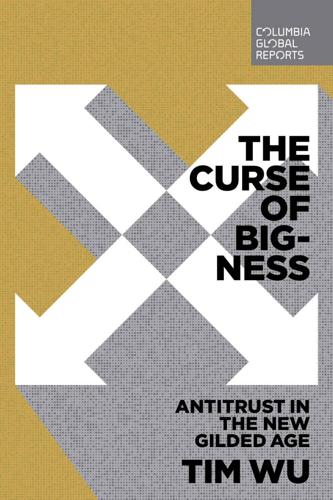
The Curse of Bigness: Antitrust in the New Gilded Age
by
Tim Wu
Published 14 Jun 2018
One day, AOL was dominant and all-powerful; the next, it was the subject of business books laughing at its many failures. Netscape rose and fell like a rocket that failed to achieve orbit (though Microsoft had something to do with that). MySpace, the social media pioneer, was everywhere and then nowhere. Search engines and social media sites seemed to come and go: Altavista, Bigfoot, and Friendster were household names one moment and gone the next. The chaos made it easy to think that bigness—the economics of scale—no longer really mattered in the new economy. If anything, it seemed that being big, like being old, was just a disadvantage. Being big meant being hierarchical, industrial, dinosaurlike in an age of fleet-footed mammals.
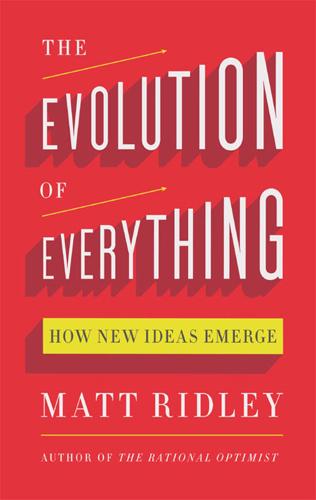
The Evolution of Everything: How New Ideas Emerge
by
Matt Ridley
Grateful as I am to Sergey Brin for the search engine, and to Steve Jobs for my Macbook, and to Brahmagupta (via Al Khwarizmi and Fibonacci) for zero, do I really think that if they had not been born, the search engine, the user-friendly laptop and zero would not by now exist? Just as the light bulb was ‘ripe’ for discovery in 1870, so the search engine was ‘ripe’ for discovery in 1990. By the time Google came along in 1996, there were already lots of search engines: Archie, Veronica, Excite, Infoseek, Altavista, Galaxy, Webcrawler, Yahoo, Lycos, Looksmart . . . to name just the most prominent. Perhaps none was at the time as good as Google, but they would have got better. The truth is, almost all discoveries and inventions occur to different people simultaneously, and result in furious disputes between rivals who accuse each other of intellectual theft.
…
Abd al-Malik 262–3 Acemoglu, Daron 97–8 Act of Union (UK, 1707) 281, 283 Acton, John Dalberg-Acton, Lord 219, 241–2 Adams, Douglas 20 Adams, John 120–1 Adler, Alfred 269 Afghanistan 32, 258 Africa 82–5, 87, 134, 158, 183, 194, 197, 206, 229, 231, 233 Africa Governance Initiative 232 Agar, Herbert 252 AIG 287, 294 Akbar 87 Aktion T4 programme (1939) 203 Al Khwarizmi 119 Al Qaeda 3 Alaska 80, 81, 82 Alexander the Great 262 Allison, John, The Financial Crisis and the Free Market Cure 293 Altavista 120 Amazon (company) 188 American Eugenics Society 204 American Federation of Teachers 180 American Museum of Natural History 200, 201 American Revolution 220–2, 243, 250, 282n American University 139 Ammon, Otto 198 Anderson, Terry 235–6 Anti-Corn Law League 245 Antonopoulos, Andreas 313–14 Apollonius of Tyana 257–8 Apple Computer 223, 319 Aquinas, Thomas 39, 51 Arabia 86, 260 Archie (search engine) 120 Arendt, Hannah 253 Argentina 190 Aristotle 8, 11 Arnhart, Larry 27 Arpanet 300–1 Arrow, Kenneth 137, 138 Arthur, Brian, The Nature of Technology: What it is and How it Evolves 126 Asia 82, 86, 229, 303 Assange, Julian 303 Association of Community Organizers for Reform Now (ACORN) 290–2 Athens 101 Attila the Hun 87 Augustus, Emperor 239, 257 Auschwitz-Birkenau 193, 198, 214 Australia 34, 82, 123, 244 Austria 32, 247 Ayr Bank 282 Aztecs 259 Back, Adam 307 Bacon, Francis 15, 134 Bagehot, Walter 297; Lombard Street 285 Baldwin effect 57 Balko, Radley 241 Balliol College, Oxford 22 Bank of England 278, 281, 282, 283, 284, 285, 295 Bank of Scotland 281 Banque Royale 285–6 Baran, Paul 300, 301 Barlow, John 302 Basalla, George, The Evolution of Technology 128 Bastiat, Frédéric 102; Economic Harmonies 102 Bath 91 Baumard, Nicolas 259, 260 Bayle, Pierre, Thoughts on the Comet of 1680 16 Beagle (ship) 38 Behe, Professor Michael 50–1; Darwin’s Black Box 51 Behringer, Wolfgang 276 Beijing 193 Beinhocker, Eric 107 Belgium 32 Bell, Alexander Graham 119, 200 Bell, Andrew 186; An Experiment in Education, made at the Male Asylum at Madras; suggesting a System by which a School or Family may teach itself, under the Superintendence of the Master or Parent 186 Bellamy, Edward 249; Looking Back 249–50 Belloc, Hilaire 95 Benjamin, Park, The Age of Electricity 120 Benn, Sir Ernest 253 Bentham, Jeremy 35 Berkeley, Bishop George 12 Berlin, Isaiah 253 Berlin, Steven 299 Bernick, Evan 241 Beverley, Robert Mackenzie 43 Bezos, Jeff 222, 223 Big Pharma 133 Birmingham 91 Bismark, Otto von 247 bitcoin 298, 308–9, 310–12 Blackbird, reconnaissance plane 130 Blair, Tony 232 blockchain 313–14 Blockchain.info 313 A Blueprint for Survival (Club of Rome) 211–12 Blunt, John 285 Bodanis, David, Passionate Minds 20 Boston Tea Party 282n Botkin, Daniel 108 Botticelli, Sandro, Venus 12 Boudreaux, Don 35, 111, 113 Boulton, Matthew 278, 280 Bower, Doug 265–6 Boyd, Rob 78, 89 Boyer, Pascal 259, 260 Boyle, Robert 12 Boyle’s Law 120 Bracciolini, Gian Francesco Poggio 12 Bracken, Mike 255 Brahmagupta 119 Brasilia 92 Brazil 18, 125 Brenner, Sydney 70 Bridge International Academies group 184 Bright, John 246 Brin, Sergey 119 Bristol 91 British Eugenics Society 204 British Linen Bank 281 British Medical Association 115 Brogan, Colm, Who are ‘the People’?

The Code: Silicon Valley and the Remaking of America
by
Margaret O'Mara
Published 8 Jul 2019
And the company that did this first and best of all was Google.6 THE GOOGLEPLEX By the time the NASDAQ crested in March of 2000, Google’s employee base had grown from six to sixty. It performed more than seven million searches a day, a figure that doubled in June, when Yahoo! stepped away from trying to run its own algorithmic search and made Google the featured engine on its portal. AltaVista, a comparably sophisticated engine nurtured within the research operation of the now-enfeebled Digital, remained Google’s most serious competition in the search game, but Brin and Page’s company was catching up fast. By September, the founders announced that Google now indexed 560 million Web pages and would run a version of its portal in ten languages.
…
The company was burning cash on those ping-pong tables and toilet seats, and new VC money wasn’t forthcoming while the dot-com crash smoldered. The founders needed a way to monetize their search engine without turning its Zen-like simplicity into an ad-choked mess. That was already happening to AltaVista, the only Web crawler whose sophistication had rivaled that of Brin and Page’s creation, and which quickly had descended into banner-ad hell after a series of acquisitions that sent it from the research labs of Digital to the online advertising giant Overture (first known as GoTo.com). But all that Overture lacked in design purity it made up for in its new model for monetizing search, which was to integrate advertising into the search itself.
…
Advanced Micro Devices (AMD), 3, 101, 207, 208, 239, 244 Adweek, 315 AdWords and AdSense, 365 Air Force, 37, 38, 57 Albrecht, Bob, 118, 128, 134, 140 Alger, Horatio, 4, 170 Allaire, Paul, 296 Allen, Paul, 154, 155, 227–29, 351 Allison, Dennis, 140 Alsop, Stewart, 349 Altair, 135–36, 138–40, 142, 144–46, 154, 155, 227 AltaVista, 362, 365 Alto, 130, 131, 234, 243 Amazon, 1, 2, 221, 313–15, 317, 324, 354, 359, 366, 380–83, 389, 391, 392, 394, 396, 408, 410 Amazon Web Services (AWS), 381–83, 390–91 American Bankers’ Association, 160 American Challenge, The (Servan-Schreiber), 88, 89 American Electronics Association (AEA), 168, 171, 197, 350 American Research and Development (ARD), 70, 71 America Online (AOL), 306, 316, 317, 346, 358, 368–71 Ampex, 38, 74, 207, 249, 262 Anderson, Fred, 71, 72 Anderson, Harlan, 54 Andreessen, Marc, 2, 305, 306, 309, 316, 318, 338, 341–43, 348, 370, 390, 392–93, 399 Andrews, Paul, 155 Android, 378 Anokwa, Yaw, 408–10 Apollo program, 51, 67, 86, 396 Apple, 1–3, 42, 146–52, 154, 157, 178–84, 186–90, 191, 192, 194, 199–201, 207, 215, 217–21, 223, 227, 229, 231–37, 240–44, 247, 249, 257, 264–67, 270, 271, 273, 277, 280, 284, 289, 295, 304, 305, 322, 328, 336, 355, 356, 364, 366, 372, 375–79, 388, 391, 392, 394, 395, 401, 405, 410 Apple Bill, 218–19, 224 Armstrong, Neil, 65 Army, U.S., 24 ARPA (Advanced Research Projects Agency; renamed DARPA), 45, 57–58, 64, 133, 225, 226, 227, 246, 248, 287, 288, 312, 352 ARPANET, 64–66, 67, 130, 257, 258, 287, 304 Arrillaga, John, 80, 264 Asimov, Isaac, 257 Association for Computing Machinery, 125 AT&T, 61–64, 118, 129, 167, 193, 238, 305, 328 Atari, 106–8, 147, 149, 154, 185, 201 Atari Democrats, 193–94, 216, 217, 221, 222, 224, 290, 325 @Home, 306 Atlantic, 20, 58 Augmentation Research Center, 91 Auletta, Ken, 364 Ayres, Judith, 263 Azure, 383 Babbitt, Bruce, 193 Badham, John, 246–47 Ballmer, Steve, 228, 273, 340–42, 350, 366, 377 Bancroft, Pete, 161–63 Banham, Reyner, 198 Bank of America, 74, 88 Baran, Paul, 124 Barksdale, Jim, 305, 344 Barlow, John Perry, 258, 286–87, 291, 301, 327 Barram, Dave, 294–95, 297, 298 Bayh-Dole Act, 180 Bechtolsheim, Andy, 275, 277, 354 Bell Laboratories, 40, 364 Bentsen, Lloyd, 170–71 Berezin, Evelyn, 124 Berlin, Leslie, 105 Berman, Jerry, 301 Berners-Lee, Tim, 287–90, 305 Bezos, Jeff, 311–15, 354, 355, 380–82, 391, 402 Bidzos, Jim, 310, 311 Billboard, 357 Billionaire Boys Club, 285 Black, Shirley Temple, 79 Blackberry, 376 Blacks at Microsoft, 320, 322 Blodget, Henry, 359 Bloom, Allan, 253 Bloomberg, Michael, 402–3 Bloomfield, Mark, 168, 169, 222 Blue Origin, 402 Blumenthal, Michael, 170 Boeing, 29, 89–90, 232, 271, 314, 384 Boggs, David, 129–30 Boxer, Barbara, 331 Brand, Stewart, 118, 128, 130, 142, 247, 258 Bricklin, Dan, 188 Bridges, Harry, 48 Brin, Sergey, 351–55, 362–65, 373, 375, 404 Brown, Dean, 117, 125, 127, 128, 134–35 Brown, Jerry, 142–43, 156, 194, 212–14, 216, 219, 224, 225, 292, 293 Brown, Pat, 81, 142 Brown, Ron, 299 Bucy, Fred, 211 Bunker, George, 63 Bunker Ramo Corporation, 63, 64, 238 Bunnell, David, 139–40 Burning Man, 363, 369 Bush, George H.

Work Rules!: Insights From Inside Google That Will Transform How You Live and Lead
by
Laszlo Bock
Published 31 Mar 2015
In August 1998, Andy Bechtolsheim, one of the cofounders of Sun Microsystems, famously wrote a $100,000 check to “Google, Inc.” before the company was even incorporated. Less well known is that they moments later received a second $100,000 check from Stanford professor David Cheriton, on whose porch they had met Andy.24 Reluctant to leave Stanford to start a company, Larry and Sergey tried to sell Google but were unable to. They offered it to AltaVista for $1 million. No luck. They turned to Excite and at the urging of Vinod Khosla, a partner at venture capital firm Kleiner Perkins Caufield & Byers, lowered the price to $750,000. Excite passed.iii This was before Google’s first advertising system, AdWords, was launched in 2000, before Google Groups (2001), Images (2001), Books (2003), Gmail (2004), Apps (spreadsheets and documents for businesses, 2006), Street View (2007), and dozens of other products we use every day.
…
Like many others, I took a pay cut to join Google, and still remember the words from my division CEO at GE on my last day: “Laszlo, this Google thing sounds like a cute little company. I wish you luck, but when it doesn’t work out, give me a call and we’ll have a job for you.” Google was also late to the search game, as Yahoo, Excite, Infoseek, Lycos, AltaVista, AOL, and Microsoft were already major players. We had to impress and inspire candidates, and convince them that Google had something special to offer. But even before we could persuade people to join, we had to figure out a new way to hire people, to ensure we had a better hiring result than other companies.

Hooked: How to Build Habit-Forming Products
by
Nir Eyal
Published 26 Dec 2013
The external trigger opens a preset message, reducing the cognitive effort of composing the tweet and saving several steps to sharing. FIGURE 9 Searching with Google Google, the world’s most popular search engine, was not the first to market. When it launched in the late 1990s, it competed against incumbents such as Yahoo!, Lycos, AltaVista, and Excite. How did Google come to dominate the multibillion-dollar industry? For starters, Google’s PageRank algorithm proved to be a much more effective way to index the web. By ranking pages based on how frequently other sites linked to them, Google improved search relevancy. Compared with directory-based search tools such as Yahoo!

The Future of Ideas: The Fate of the Commons in a Connected World
by
Lawrence Lessig
Published 14 Jul 2001
CHAPTER 8 1 See Lawrence Lessig, Code and Other Laws of Cyberspace (New York: Basic Books, 1999). 2 For examples of on-line mapping services, see MapQuest.com at http://www. mapquest.com; Maps On Us at http://www.mapsonus.com; and MapBlast! at http://www. mapblast.com. 3 For examples of on-line translation Web sites, see AltaVista World/Translate at http://world.altavista.com; FreeTranslation.com at http://www.freetranslation.com; and From Language to Language at http://www.langtolang.com. 4 A short list of many examples of on-line dictionaries includes Merriam-Webster OnLine at http://www.m-w.com; Cambridge Dictionaries Online at http://dictionary. cambridge.org; and AllWords.com at http://www.allwords.com.
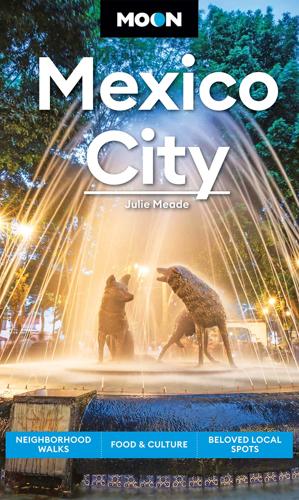
Moon Mexico City: Neighborhood Walks, Food & Culture, Beloved Local Spots
by
Julie Meade
Published 7 Aug 2023
.; Metro: Polanco Tane is one of the oldest and finest silver shops in Mexico, producing both jewelry and silver accessories for the home. Designs are generally elegant and highly contemporary, and the collections include some one-of-a-kind pieces and artist-designed series. Prices are high-end, but the workmanship is beautiful. There are additional locations in San Ángel (Altavista 147, #7, San Ángel Inn, tel. 55/5550-5632) and in the Four Seasons Hotel (Paseo de la Reforma 500, tel. 55/5203-2624). Tane, Mexico’s most famous silversmith Roma and Condesa MOON MAP Sights Restaurants Nightlife Arts and Culture Recreation Shops Through most of the 20th century, these adjacent residential neighborhoods were home to writers, intellectuals, journalists, and artists, as well as middle-class families.
…
It is an iconic destination on the UNAM campus, drawing art and ecology into a unique dialogue. The keynote piece is a massive, circular concrete sculpture, which is often used for performances or student meetings. The Espacio Escultórico is a massive outdoor sculpture garden constructed in the 1970s. Museo Casa Estudio Diego Rivera MOON MAP Av. Diego Rivera at Altavista, tel. 55/8647-5470, www.estudiodiegorivera.bellasartes.gob.mx [URL inactive]; 11am-5pm Tues.-Sun.; US$2; Metro: Barranca del Muerto, Metrobús: La Bombilla In 1931, artist Juan O’Gorman designed two small functionalist homes, joined by a footbridge, for Frida Kahlo and Diego Rivera. Kahlo lived there until 1941 and Rivera until his death, in 1954.

Battle for the Bird: Jack Dorsey, Elon Musk, and the $44 Billion Fight for Twitter's Soul
by
Kurt Wagner
Published 20 Feb 2024
before enrolling at Queen’s University in Ontario: Robin Keats, “Rocket Man,” Queen’s Alumni Review, February 2, 2013, https://www.queensu.ca/alumnireview/articles/2013-02-01/elon-musk. crystallized his desire to work on projects in technology, space, and renewable energy: Vance, Elon Musk, 50–55. eventually sold to Compaq Computer for more than $300 million: Lisa Napoli, “Compaq Buys Zip2 to Enhance Altavista,” New York Times, February 17, 1999, https://www.nytimes.com/1999/02/17/business/compaq-buys-zip2-to-enhance-altavista.html. The sale netted him $22 million: Vance, Elon Musk, 72. he bought was a $1 million McLaren: CNN, “Watch a Young Elon Musk Get His First Supercar in 1999,” YouTube, 2021, https://www.youtube.com/watch?v=s9mczdODqzo. Musk became CEO and the largest shareholder of the new joint company: Vance, Elon Musk, 86.
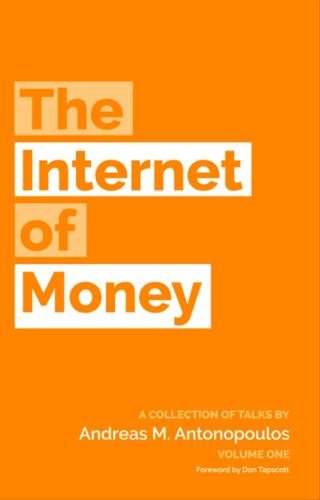
The Internet of Money
by
Andreas M. Antonopoulos
Published 28 Aug 2016
Attacks Build Resistance I’ve been involved with the internet since 1989. I remember very clearly, in the early days when lots of articles were written about how the internet was not resilient, could not scale to do voice, was not secure. I remember times when denial-of-service attacks would take down Yahoo, AltaVista, and even Google for hours, sometimes days. What happened between then and now? How many times have you seen Google go down in the last five years? Have people stopped attacking Google? Quite the opposite. Google can now sustain gigabits of denial-of-service anywhere in the world and dynamically reroute.

Your Computer Is on Fire
by
Thomas S. Mullaney
,
Benjamin Peters
,
Mar Hicks
and
Kavita Philip
Published 9 Mar 2021
It is these systems, and their question, that shine through—which is why so many Monopoly games are never completed. It stops being fun when the realities of its resources and randomness confront us, when we experience its economic philosophy. And it doesn’t matter what the supposed version is “about.” It might be funny if someone is bankrupted by landing on a property bearing the logo of the long-dead AltaVista, but no one around the table thinks this makes it a fundamentally different game from the version with fish. Instead, everyone around the table is learning (perhaps unconsciously) that one of the things it is possible to make a game about is resources. If they’re feeling particularly thoughtful, or if they know the game’s history, they may realize that it is possible to make a game about unfair resource systems, perhaps one that reflects those in our own society.
…
hiring, 257–259, 263 human created, 53–54, 383 image recognition, 4, 118–124, 127–129 machine learning, 64–65 policing, 5, 66, 126, 206 social media, 54 software, 199, 201, 333 system builders, 6 typing, 356–358 Alibaba, 316 Allende, Salvador, 75, 79–80 Alpha60, 108 Alphabet, 31, 54. See also Google Alphabets Arabic, 215–217 Cyrillic, 215, 344 Hangul, 7, 341–344, 351 Latin, 4, 188, 218, 338–339, 341–345, 351, 353, 356–358, 382 new, 217 Roman, 213 (see also Alphabets, Latin) AlphaGo, 7 Altavista, 241 Amazon, 87, 160, 190, 201, 254, 257, 261, 308 Alexa, 179–180, 184, 189, 190t, 202, 381 business model, 29–33, 35–36, 43, 46 and the environment, 34 infrastructures, 37, 42 Prime, 31, 265 Rekognition, 126, 208 workers, 23 American dream, 136 American University of Beirut, 216, 222 Android, 273, 318 Anku, Kwame, 266 AOL (America Online), 323, 331 Apartheid, 18, 314, 325 anti-, 322 API (Application programming interface), 328 Apple, 190–191, 201, 223–224, 254, 318, 321, 365.
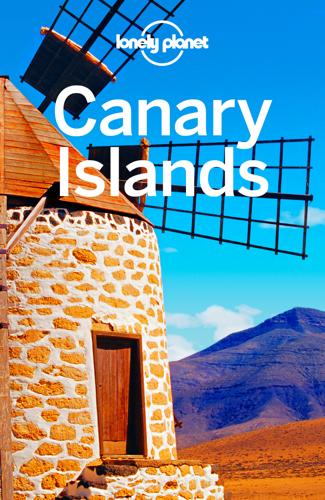
Canary Islands Travel Guide
by
Lonely Planet
You don’t have to be a masochist to enjoy the challenge of walking from road level up to La Rambleta at the top of the cable car, followed by a zoom down in the lift, but neither should you take this walk lightly. People unused to serious hiking will find this a very strenuous walk. Get off the bus (request the driver to stop) or leave your car at the small road-side parking area (signposted ‘Montaña Blanca’ and ‘Refugio de Altavista’) 8km south of the El Portillo visitor centre and set off along the 4WD track that leads uphill. En route, you can make a short (half-hour, at the most), almost-level detour along a clear path to the rounded summit of Montaña Blanca (2750m), from where there are splendid views of Las Cañadas and the sierra beyond.
…
Maybe the most spectacular, and certainly the hardest, walk in the park is the climb to the summit of Pico Viejo, then along the ridge that connects this mountain to Teide and then up to the summit of Teide. Allow at least nine hours for this hike (one way) and be prepared to walk back down Teide again if the cable car is closed. In fact, for this walk it’s actually better to walk to the Refugio de Altavista at 3270m on the first day, overnight there and then continue your ascent to the summit of Teide the following morning as this will allow you most of the second day to descend Teide on foot if required. 8Information There are two excellent visitors centres in the park. El Portillo Visitors CentreTOURIST INFORMATION (%922 92 37 71; www.reservasparquesnacionales.es; Carretera La Orotava-Granadilla; h9am-4pm; W) A well-stocked visitors centre with a geological exhibition about the park and which can provide hiking maps and advice.
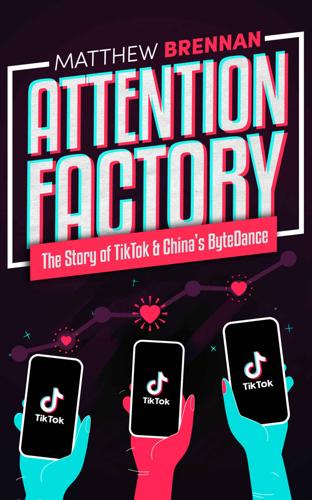
Attention Factory: The Story of TikTok and China's ByteDance
by
Matthew Brennan
Published 9 Oct 2020
The internet represented an explosion of information; suddenly, anyone could set up their own blog site and start publishing online. Search engines were an extremely effective use of technology to solve a pressing need—locating precise information across an unimaginably vast decentralized network. The first popular search engines included names such as AltaVista and Yahoo!. Google arose later with better technology, which propelled them to dominate the category. Search is an extremely efficient and accurate way to match content to users with one major weakness—you must know the term you wish to search for. The user must expend mental effort to understand their need, type a relevant term into the search bar, and select the most suitable option from those presented.

Digital Accounting: The Effects of the Internet and Erp on Accounting
by
Ashutosh Deshmukh
Published 13 Dec 2005
Enterprise Portals The word portal refers to a door, gateway or entrance, especially the one that is imposing. Internet portals are gateways to information stored at different locations. You have probably visited Yahoo.com, which is a portal that provides organized information on various topics. There are also various search engines called Search Portals, such as Google and AltaVista, that can search for information based on terms and descriptions. These portals are referred to as public portals, because they are available to all users and only need connection with the Internet for use. The portal concept has been transported to the corporate world. These portals are called enterprise portals, Enterprise Information Portals (EIPs), business portals and corporate portals.
…
These are merely illustrative examples; WebDAV can also provide a front end for knowledge management solutions. A searching facility is the capability to access, browse and retrieve information based on the user’s requirements. Search facilities are enabled by search-and-retrieval engines. These are similar to Google or AltaVista. Different types of queries, such as simple queries (one word), term queries (search for a term such as enterprise portals), Boolean queries (words connected by and or or) and linguistic queries (different forms of the word), are supported by these search engines. Advanced searches, such as searches based on author or date, are also possible.
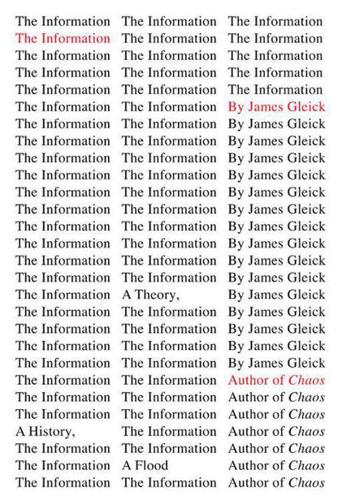
The Information: A History, a Theory, a Flood
by
James Gleick
Published 1 Mar 2011
The volume of Internet traffic had grown by a factor of ten each year, from 20 terabytes a month worldwide in 1994 to 200 terabytes a month in 1995, to 2 petabytes in 1996. Software engineers at the Digital Equipment Corporation’s research laboratory in Palo Alto, California, had just opened to the public a new kind of search engine, named AltaVista, continually building and revising an index to every page it could find on the Internet—at that point, tens of millions of them. A search for the phrase truth universally acknowledged and the name Darcy produced four thousand matches. Among them: The complete if not reliable text of Pride and Prejudice, in several versions, stored on computers in Japan, Sweden, and elsewhere, downloadable free or, in one case, for a fee of $2.25.
…
Aaboe, Asger, 2.1, 2.2 abacus, 4.1, 8.1 A B C Universal Commercial Electric Telegraphic Code, The (Clauson-Thue), 5.1, 5.2 abstraction logic and, 2.1, 2.2 in mathematical computation origins of thinking and words representing, 2.1, 3.1 Adams, Brooks Adams, Frederick Adams, Henry Aeschylus African languages; see also talking drums Aharonov, Dorit Airy, George Biddell “Algebra for Theoretical Genetics, An” (Shannon), 6.1, 6.2, 6.3 algebra of logic, prl.1, 8.1; see also symbolic logic algorithmic information theory, 12.1, 12.2, 12.3, 12.4, 12.5 algorithm(s) to calculate complexity, 12.1, 12.2 to control accuracy and speed of communication, 7.1, 7.2 data compression to describe biological processes, 10.1, 10.2 to generate uninteresting number, 12.1, 12.2 historical evolution of, 2.1, 2.2, 4.1, 7.1 Lovelace’s operations for Analytical Engine as for measurement of computability for measurement of information, 12.1, 12.2, 12.3, 12.4 number tables based on, 4.1, 4.2, 4.3 for proof of number’s randomness, 12.1, 12.2 to reconstruct phylogeny scientific method as, 12.1, 12.2 Shor’s factoring, 13.1, 13.2 Turing machine, 7.1, 7.2 Alice in Wonderland (Carroll) Allen, William alphabet(s) as code evolution of, 2.1, 2.2, 3.1 evolution of telegraph coding systems and, 5.1, 5.2, 5.3, 5.4 information transmission capacity of, 6.1, 7.1 letter frequency in, 1.1, 7.1 Morse code representation of order of letters in, 3.1, 3.2, 3.3 organization of information based on, 3.1, 3.2 AltaVista, epl.1, epl.2 altruism, 10.1, 10.2, 10.3 American Telephone & Telegraph, prl.1, 6.1, 7.1 amino acids, 10.1, 10.2, 10.3, 10.4, 10.5, 10.6 Ampère, André-Marie, 5.1, 5.2 amplitude modulation, 6.1, 6.2, 6.3 analog technology, 8.1, 8.2 Analytical Engine, 4.1, 4.2, 4.3, 4.4, 4.5, 4.6, 4.7, 4.8, 4.9, 4.10, 4.11, 4.12, 6.1, 7.1, 8.1 Analytical Society, 4.1, 4.2 Anatomy of Melancholy, The (Burton) Anglo-American Cyclopedia, The (Borges) Anglo-Saxon speech, 3.1, 3.2 anthropocentrism antiaircraft guns and artillery, prl.1, 6.1, 6.2, 7.1, 8.1, 8.2, 8.3, 12.1, 12.2 aperiodic crystals, 9.1, 10.1 Arabic numerals Arcadia (Stoppard), 9.1, 9.2, 14.1 Aristotle and Aristotelian philosophy, prl.1, 2.1, 2.2, 2.3, 2.4, 2.5, 2.6, 2.7, 14.1, 14.2 Armani, Giorgio, 14.1, 14.2 Arte of Rhetorique, The (Wilson) artificial intelligence, prl.1, 12.1; see also machines, attribution of thinking to Ashby, W.

The Founders: The Story of Paypal and the Entrepreneurs Who Shaped Silicon Valley
by
Jimmy Soni
Published 22 Feb 2022
The product launched—then thrived, so much so that Levchin and Huss’s server was pushing its limits. To keep up with demand, they invested in a several-thousand-dollar Solaris server, which weighed 200 pounds and arrived on a big-rig truck. NetMeridian scored a second success with a project called Position Agent. Even in the pre-Google days of the late 1990s, the top spots on a Lycos, AltaVista, or Yahoo search were coveted. Position Agent helped website administrators track their rankings. It featured a Levchin engineering coup: a ranking counter, which updated without the user having to reload the webpage. But NetMeridian’s success was both a blessing and a curse. As users grew, infrastructure had to keep pace, but Levchin didn’t have cash for ever-bigger servers.
…
“Despite all the interest from advertisers,” the New York Times wrote in September of 1998, “no city guide has consistently shown a profit.” * * * It all came to a conclusion early the following year. In February 1999, Zip2 sold to Compaq Computer for $307 million in cash. For Compaq, the acquisition united its AltaVista search engine with Zip2’s local listings and ad business. For Musk, the purchase meant a $21 million payday. To this day, that moment astonishes him—the amount as well as the means of delivery. The millions arrived by check. “Literally, to my mailbox. I was like, ‘This is insane. What if somebody…?

So You've Been Publicly Shamed
by
Jon Ronson
Published 9 Mar 2015
We were creating a world where the smartest way to survive is to be bland. * There was a time when Michael Fertik wouldn’t have needed to be so calculating. Back in the mid 1990s search engines were only interested in how many times a particular keyword appeared within a page. To be the number-one Jon Ronson search term on AltaVista or HotBot you just had to write Jon Ronson over and over again. Which for me would be the most fantastic website to chance upon, but for everyone else, less so. But then two students at Stanford, Larry Page and Sergey Brin, had their idea. Why not build a search engine that ranked websites by popularity instead?

Effective Programming: More Than Writing Code
by
Jeff Atwood
Published 3 Jul 2012
It’s been a long, hard road getting to where we are now – and we’ve thrown a lot of unicorn dollars toward really nice hardware to run everything on, though I wouldn’t call any of our hardware choices particularly extravagant. And I did follow my own advice, for the record. I distinctly remember switching from AltaVista to Google back in 2000 in no small part because it was blazing fast. To me, performance is a feature, and I simply like using fast websites more than slow websites, so naturally I’m going to build a site that I would want to use. But I think there’s also a lesson to be learned here about the competitive landscape of the public internet, where there are two kinds of websites: the quick and the dead.
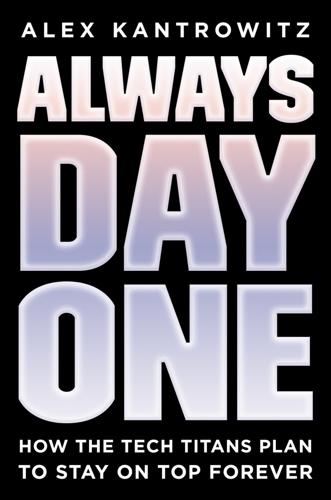
Always Day One: How the Tech Titans Plan to Stay on Top Forever
by
Alex Kantrowitz
Published 6 Apr 2020
It will also preserve the hive mind, which, no matter how difficult to manage at times, is the reason Google can come together and tackle projects as complex as the Assistant. Without its communications tools and associated openness, Google’s name might not be a verb, but among the likes of Lycos, AltaVista, Ask Jeeves, and Excite—companies that made noise in search but ultimately couldn’t adapt. CHAPTER 4 TIM COOK AND THE APPLE QUESTION Marques Brownlee is the type of person Apple has taken an interest in of late. Brownlee is a YouTube star, with more than ten million subscribers who regularly consume his crisply shot reviews of the latest technology products.
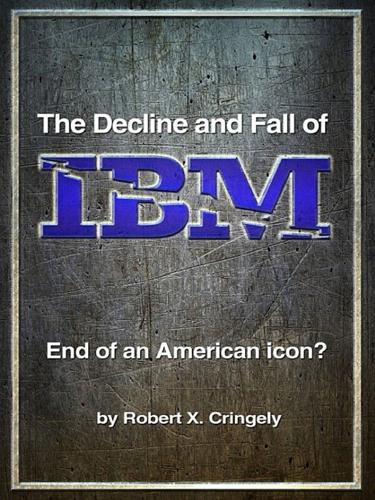
The Decline and Fall of IBM: End of an American Icon?
by
Robert X. Cringely
Published 1 Jun 2014
The Clever project seemed like a very interesting piece of research and the Google founders seem to have agreed. Why didn’t IBM turn this into a publicly accessible search engine? Vijay / January 14, 2011 / 2:00 am IBM thought they could sell search engine The project actually started a number of years earlier, very close to the time Google was breaking into the market and AltaVista was the preferred search engine. It was IBM’s belief they could search and index the whole Internet, then SELL it as a premium service to companies and universities. It never occurred to IBM management that one could offer such a service for FREE and pay for it with advertising. IBM’s mindset was in the past, firms would be willing to pay a premium for an IBM branded service.

Internet for the People: The Fight for Our Digital Future
by
Ben Tarnoff
Published 13 Jun 2022
I don’t think in my lifetime.’ ” 88, In the 1990s … Tens of millions joining the internet each year: according to Internet Live Stats, there were 25,454,590 internet users in 1994, 44,838,900 in 1995, 77,433,860 in 1996, and 120,758,310 in 1997. Millions of miles of fiber-optic cable: Srnicek, Platform Capitalism, 22. Number of websites growing nearly 1,000 percent: Internet Live Stats shows 23,500 websites in 1995 and 257,601 in 1996. 89, In theory, more information … Spammy results: See the discussion of the AltaVista search engine in Levy, In the Plex, 24–25. 89, This was the challenge … In “The Anatomy of a Large-Scale Hypertextual Web Search Engine,” Page and Brin write that their research was supported by the NSF, DARPA, NASA, Interval Research, and “the industrial partners of the Stanford Digital Libraries Project.”

Valley of Genius: The Uncensored History of Silicon Valley (As Told by the Hackers, Founders, and Freaks Who Made It Boom)
by
Adam Fisher
Published 9 Jul 2018
You go to this web page, and then on top of the web page there was a single box, very similar to Google’s search box today, right? It’s just a single box, and beside the box was another drop-down box, and “Which search engine do you want to use?” Brad Templeton: There was a bunch: Excite, Lycos, AltaVista, Infoseek, and Inktomi—that one was done at UC Berkeley. Scott Hassan: So, you could select one of those other search engines, and then you’d type in your little query and you’d hit Search, and what it would do, it would split the screen in half. On the left-hand side it would just pose that query to the search engine you chose, and then on the right-hand side it would then pose it to our search engine, so that you could compare the results side by side.
…
Ryan Bartholomew was the owner and sole employee. Ryan Bartholomew: I didn’t even know what I was doing, I just thought it was cool to buy lobsters for five bucks off the boat and try to ship them to buyers. And I was just working around the clock trying to figure out ways to get my listing out there. This was back in the days of Yahoo and AltaVista and I don’t even remember the others. But Google was around and very new, and I was up at two in the morning playing around on Google looking for something or other. David Cheriton: The web had grown from this very early stage where there was a small amount of content and you could sort of find things with the help of Yahoo, to the case where the content had grown so rapidly, and had attracted all of these compromisers and game players, that it became harder and harder to find things.
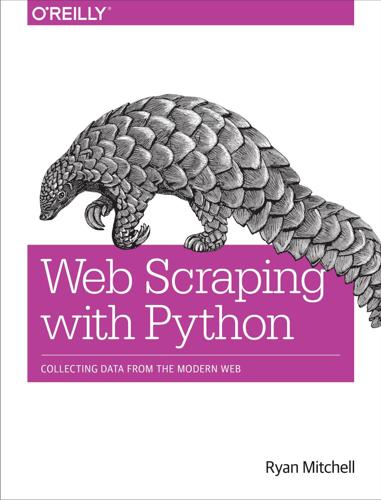
Web Scraping With Python: Collecting Data From the Modern Web
by
Ryan Mitchell
Published 14 Jun 2015
If you go to just about any large web‐ 222 | Appendix C: The Legalities and Ethics of Web Scraping site and look for its robots.txt file, you will find it in the root web folder: http:// website.com/robots.txt. The syntax for robots.txt files was developed in 1994 during the initial boom of web search engine technology. It was about this time that search engines scouring the entire Internet, such as AltaVista and DogPile, started competing in earnest with sim‐ ple lists of sites organized by subject, such as the one curated by Yahoo! This growth of search across the Internet meant an explosion in not only the number of web crawlers, but in the availability of information collected by those web crawlers to the average citizen.

Bitcoin for the Befuddled
by
Conrad Barski
Published 13 Nov 2014
Can Bitcoin Be Supplanted by Another Cryptocurrency? All of us had a front-row seat when Google appeared out of nowhere with its superior search engine technology and left a long list of defunct, and now almost forgotten, search engines in its wake. Does anyone remember the search engine powerhouses of Lycos or Altavista? Is it possible that Bitcoin will similarly fade into obscurity when some new, better cryptocurrency comes along? Developers who contribute to the core Bitcoin protocol tend to be very conservative. Not only does no developer want to take the blame for introducing a bug into a multibillion-dollar system, but even if a more radical feature was added, the Bitcoin community would be unlikely to accept it.

Designing Search: UX Strategies for Ecommerce Success
by
Greg Nudelman
and
Pabini Gabriel-Petit
Published 8 May 2011
Keith Instone is the information architecture lead for IBM’s digital presences. He is also active in various user experience community efforts. You can find him online at instone.org. Erin Malone is currently a Partner at Tangible UX and has over 20 years of experience designing applications, social experiences and best practices for companies like Intuit, Yahoo!, AOL, AltaVista, Ask, and a host of startup companies. She was the founding editor-in-chief of Boxes and Arrows and a founding member of the IA Institute. She co-authored Designing Social Interfaces (O’Reilly Media / Yahoo Press, 2009) with Christian Crumlish. Peter Morville is a writer, speaker, and consultant.

The End of Absence: Reclaiming What We've Lost in a World of Constant Connection
by
Michael Harris
Published 6 Aug 2014
So what we’re really dealing with is a question of attitude. Has the Internet turned a helpful tactic into a monostrategy? Seife continues: As the Web grew, my browsers began to bloat with bookmarked Web sites. And as search engines matured, I stopped bothering even with bookmarks; I soon relied on AltaVista, HotBot, and then Google to help me find—and recall—ideas. My meta-memories, my pointers to ideas, started being replaced by meta-meta-memories, by pointers to pointers to data. Each day, my brain fills with these quasi-memories, with pointers, and with pointers to pointers to pointers, each one a dusty IOU sitting where a fact or idea should reside.
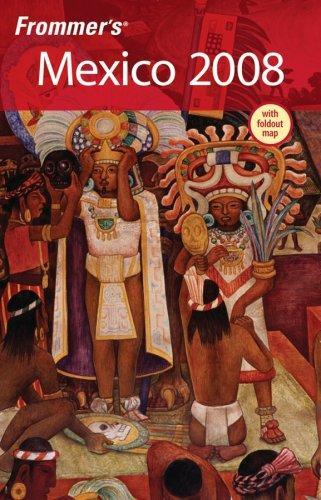
Frommer's Mexico 2008
by
David Baird
,
Juan Cristiano
,
Lynne Bairstow
and
Emily Hughey Quinn
Published 21 Sep 2007
MEXICO CITY of the artist’s personal effects and mementos, as well as changing exhibits relating to his life and work. (Don’t confuse Rivera’s studio with his museum, the Anahuacalli; see above.) The museum is not accessible by Metro. Calle Diego Rivera and Av. Altavista (across from San Angel Inn), Col. San Angel. & 55/5616-0996. Admission $1 (55p); free Sun. Tues–Sun 10am–6pm. By taxi, go up Insurgentes Sur to Altavista and make a left. During Lenin’s last days, Stalin and Trotsky fought a silent battle for leadership of the Communist Party in the Soviet Union. Trotsky stuck to ideology, while Stalin took control of the party mechanism.
…
If you’re coming from San Angel, the quickest and easiest way is to take a cab for the 15-minute ride to the Plaza Hidalgo. Francisco Sosa, a pretty street, is the main artery into Coyoacán from San Angel, which you can also walk. Or you can catch the Alcantarilla–Col. Agrarista bus heading east along the Camino al Desierto de los Leónes or Avenida Altavista, near the San Angel Inn. Get off when the bus reaches the corner of Avenida México and Xicoténcatl in Coyoacán. San Angel Eight kilometers (5 miles) south of the city center, San Angel (sahn ahn-hehl) was once a weekend retreat for Spanish nobles but has long since been absorbed by the city. It’s a stunningly beautiful neighborhood of cobblestone streets and colonial-era homes, with several worthwhile museums.
…
It has 12 locations around the city, but the individual pharmacies have no phone. They are open daily from 7am to 10pm. Elevation Cuernavaca sits at 1,533m (5,028 ft.). Hospital Hospital Inovamed, Calle Cuauhtémoc 305, Col. Lomas de la Selva (& 777/311-2482, -2483, or -2484). Internet Access MarkSoft Internet, Otilio Montano, Col. Altavista (www.marksoft solutions.com), serves coffee and Internet access for $3 (£1.65) per 15 minutes. You can also try Café Internet Net-Conn, Morelos Norte 360-A, Col. Carolina 168 C H A P T E R 5 . S I LV E R , S PA S & S P I R I T U A L C E N T E R S (& 777/317-9496), which offers high-speed access for $2.50 (£1.40) per hour, as well as color laser printers, Web cams, scanners, and other equipment.

Our Final Invention: Artificial Intelligence and the End of the Human Era
by
James Barrat
Published 30 Sep 2013
They have mastered a narrow domain—search—with ability no human could touch. Furthermore, Google puts the Internet—the largest compilation of human knowledge ever amassed—at your fingertips. And significantly, all that knowledge is available in an instant, faster than ever before (sorry Yahoo, Bing, Altavista, Excite, Dogpile, Hotbot, and the Love Calculator). Writing has often been described as outsourcing memory. It enables us to store our thoughts and memories for later retrieval and distribution. Google outsources important kinds of intelligence that we don’t possess, and could not develop without it.

The Internet Is Not the Answer
by
Andrew Keen
Published 5 Jan 2015
What if all the content on the Web, all those 26 million pages with their hundreds of millions of hyperlinks, could be sorted and indexed? Page and Brin wondered. What if Google could organize all the world’s digital information? There already were technologies from well-funded startups like Lycos, AltaVista, Excite, and Yahoo, vying to build a winner-take-all search engine for navigating the Web. But Brin and Page beat them all to it with an astonishingly original method for determining the relevance and reliability of a Web page’s content. Just as Vannevar Bush’s Memex worked through an intricate system of “trails,” Page and Brin saw the logic of the Web in terms of hyperlinks.

The Globotics Upheaval: Globalisation, Robotics and the Future of Work
by
Richard Baldwin
Published 10 Jan 2019
In the 2000s, Facebook had a few competitors, like MySpace, but everyone wanted to be on Facebook since everyone else was on Facebook; that was where you could find your friends. Likewise, I can remember when Google was the new search engine challenging incumbents like Yahoo. Victory was not all assured but once Google started winning, it gained users that made it win faster. Lycos, Altavista, Ask.com and the like all went by the wayside. Even a search engine “born big,” like Microsoft’s Bing, has trouble challenging the leader’s primacy due to Metcalf’s law. The power of networks and the eruptive pace of raw computing and transmission power are not the only thing driving the inhumanly fast pace of digitech.

Ask Your Developer: How to Harness the Power of Software Developers and Win in the 21st Century
by
Jeff Lawson
Published 12 Jan 2021
You could literally look at how anything on the Internet was made, learn from it, and build upon it. It was amazing. Even more interesting, though, were these “dynamic” websites that were starting to appear around that time, which did more than just display content. Amazon.com let you browse books, and even buy them! Yahoo, Lycos, and AltaVista let you search for things. MapQuest let you find anywhere on the planet, and get turn-by-turn directions! What was most amazing about these sites was that somebody could write a program. But unlike in the era of the Apple IIe, anybody else on the Internet could interact with the code. Instead of an audience of my parents, I could write something that millions of people could use.
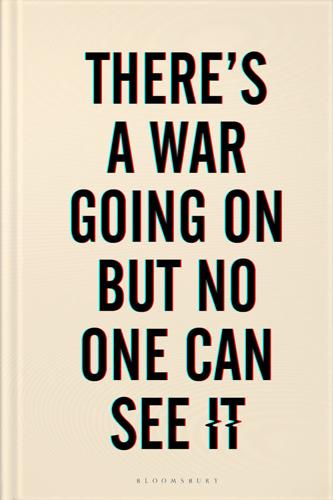
There's a War Going on but No One Can See It
by
Huib Modderkolk
Published 1 Sep 2021
Unlike college students, who moulded themselves to the existing organisational culture, these outside hires had their own ideas and weren’t afraid to question entrenched practices. When it came to computers, the AIVD was hopelessly naive and behind the times. In 2000 it had sixteen PCs, all of which used the search engine AltaVista to access open sources. They also had one computer given to them by the CIA that they didn’t trust. Some employees wanted to throw it out immediately, but in the end they left only useless information on the machine until eventually they did get rid of it. It was clear the AIVD needed to ramp up its computer skills.
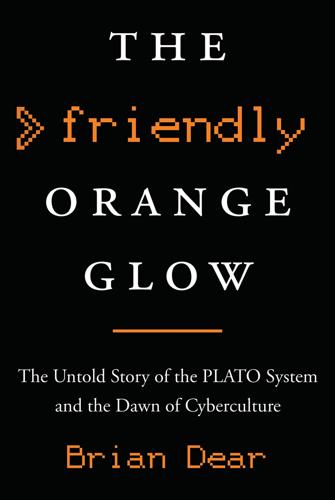
The Friendly Orange Glow: The Untold Story of the PLATO System and the Dawn of Cyberculture
by
Brian Dear
Published 14 Jun 2017
But if the visionary has sufficient technical proficiency and the support of colleagues, he or she may hang on long enough to get a prototype working, an accomplishment that attracts others, who soon come to share in the vision, and thus a technology project snowballs, attracting more bright people, more funding, and, hopefully, widespread adoption. In time the vision gets stale, and the visionary grows stubborn, as others dream up new visions that challenge then replace the old. It’s how we got Facebook, the answer to MySpace, which was the answer to Friendster. It’s how we got Google, which was the answer to AltaVista, Lycos, and Infoseek. It’s how we got the iPhone after the Palm Treo, Apple Newton, and flip phones. PLATO’s story is no different. But what a story. — The Friendly Orange Glow is divided in three parts. Part One, “The Automatic Teacher,” begins before PLATO with the story of the 1950s work of the psychologist B.
…
Control Data Corporation, for loaning me a complete PLATO workstation, printer, and online account to capture screen shots and printout notesfiles in 1987–1988. Hazeltine Corporation’s Training Systems Center (later a division of Ford Aerospace) for allowing me copious use of its high-speed Kodak photocopier. I also owe a debt of gratitude to twenty years of search engines: AltaVista, InfoSeek, Yahoo, and Google. Since grade school I have held both a fascination with and indebtedness to libraries and librarians, some of the most helpful people on earth. If there is a Twitter hashtag that epitomizes exactly how I feel about research librarians, it is #LibrariansRock. This book would not have been possible without the eager, enthusiastic support of the staffs at the Library of Congress; the University of Illinois Archives; the University of Illinois Library; Brigham Young University Library and Special Collections; the University of Washington Library; the University of Maryland Baltimore County Library; the University of Maryland College Park Library; the University of California San Diego Library; San Diego State University Library; the University of New Mexico Library; the Ohio State University Library; and the Charles Babbage Institute at the University of Minnesota.

Digital Bank: Strategies for Launching or Becoming a Digital Bank
by
Chris Skinner
Published 27 Aug 2013
Even then, it should be noted that most of this banker’s views that the basis for wealth has evolved from land to labour to information were formed back in the 1970s, when technology first hit the banking system and moved us to an information economy. Today, this vision is realised and businesses exist as information economies and they fight based upon information. Google is not a monopoly as there were and are plenty of search engines around - Ask Jeeves, Lycos, Altavista, Bing, etc - but Google won this game early on by making algorithmic analysis of data more relevant and organised. They continue to do this today by making searches contextual and geographically localised. Facebook is the same. Facebook has had plenty of other players before them - Friendster, Friends Reunited, Bebo, MySpace, etc - and we forget very quickly these other players when one wins out.

Nothing but Net: 10 Timeless Stock-Picking Lessons From One of Wall Street’s Top Tech Analysts
by
Mark Mahaney
Published 9 Nov 2021
While that bar may be too high since only three companies have ever achieved it in recorded financial history, I’ve come to use that term to discuss companies that can generate premium revenue growth (20%+) for multiple years from a position of scale (a revenue base in the billions). Google’s TAM This kind of financial success has lots of fathers and mothers. First, Google was a highly innovative company. A half dozen or more search engines existed before Google—AltaVista, Excite, LookSmart, WebCrawler, Lycos, Yahoo! Search, to name a few—and many more came out after: Overture, Ask Jeeves, Inktomi, MSN Search, DuckDuckGo. But the best mousetrap belonged to Google, as measured by that most objective of measures—the number of users. Google’s share of global search has always been exceptionally high—70% or higher with a 90%+ share in many markets.

Life After Google: The Fall of Big Data and the Rise of the Blockchain Economy
by
George Gilder
Published 16 Jul 2018
Schmidt was not just a midnight email doodler. He soon left Sun and, after a stint as CEO of Novell trying to build the best networks and search engines in Utah, he joined Google and soon became CEO. There he found himself engulfed by the future he had predicted. While competitors like Excite, Inktomi, AltaVista (DEC), and Yahoo were building out their networks with SPARCstations and IBM mainframes, Google designed and manufactured its own servers from cheap commodity components made by microprocessor star Intel and hard-drive king Seagate. In a 2005 technical article, Google’s operations chief, Hölzle, explained why.

Enshittification: Why Everything Suddenly Got Worse and What to Do About It
by
Cory Doctorow
Published 6 Oct 2025
Patrick and Teresa sang me the praises of Kagi.com, a small new search engine that requires a paid subscription. The way they described it reminded me of how we’d all talked about Google in 1998, when we discovered a search box that could reliably find you the things you wanted, as opposed to the dominant competitors like AltaVista, Lycos, and Yahoo!, where each query fetched a mountain of ads and spam with the odd useful link far down on the page. I tried it out for less than a day—you get one hundred free searches—before I was sold. After years of rapidly declining Google Search quality, using Kagi was almost sorcerous.
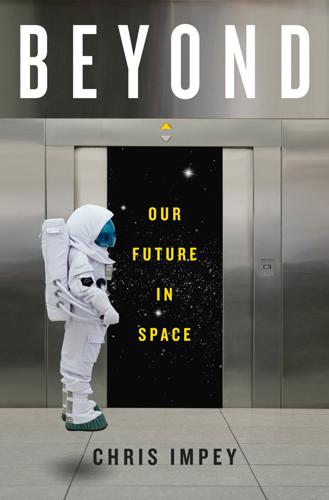
Beyond: Our Future in Space
by
Chris Impey
Published 12 Apr 2015
Space travel is poised to follow the trajectory of the Internet, becoming demilitarized and then massively commercialized (Figure 17). Leaving Earth may soon be cheap and safe enough that it becomes an activity for the masses rather than the experience of a privileged few. Some of the recently formed space companies will be like Netscape and Altavista—the web-browser and search-engine leaders in 1995 and now long forgotten—and some will become behemoths like Google. The next decade promises to be very interesting. Figure 17. The space program also had visionaries who aimed for a permanent human presence in space. Progress was spurred by a military superpower rivalry and fostered by NASA.

The Art of SEO
by
Eric Enge
,
Stephan Spencer
,
Jessie Stricchiola
and
Rand Fishkin
Published 7 Mar 2012
For example, if you have built a site targeted at children, a younger reading level is appropriate. Contrast that with content on the latest advances in artificial intelligence algorithms, where a much higher reading level would be expected. Keyword Stuffing/Lack of Synonyms Keyword stuffing used to be the basic approach of spammers, back in the days when AltaVista was the leading search engine. There are still many people who believe that repeating the same keyword over and over on a web page will lead to higher rankings for that phrase. They create documents that include way too many instances of the same word, and often don’t make much use of synonyms for the keyphrase.
…
Whereas updates took Google months in 1999, in 2009 Google was detecting and indexing changes on web pages in just a few minutes. These are staggering changes in Google’s performance power, but this is just part of the changing search environment. Some of the early commercial search engines, such as Web Crawler, InfoSeek, and AltaVista, launched in the mid-1990s. At that time, web search engines’ relevancy and ranking algorithms were largely based on keyword analysis. This was a simple model to execute and initially provided pretty decent results. However, there was (and is) too much money in search for such a simple model to stand.

The Wisdom of Crowds
by
James Surowiecki
Published 1 Jan 2004
Each time, Google surveyed billions of Web pages and picked exactly the pages that I would find most useful. The cumulative time for all the searches: about a minute and a half. Google started in 1998, at a time when Yahoo! seemed to have a stranglehold on the search business—and if Yahoo! stumbled, then AltaVista or Lycos looked certain to be the last man standing. But within a couple of years, Google had become the default search engine for anyone who used the Internet regularly, simply because it was able to do a better job of finding the right page quickly. And the way it does that—and does it while surveying three billion Web pages—is built on the wisdom of crowds.
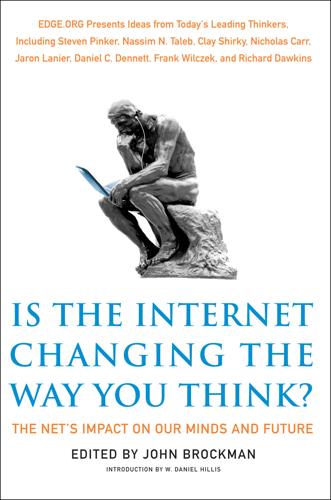
Is the Internet Changing the Way You Think?: The Net's Impact on Our Minds and Future
by
John Brockman
Published 18 Jan 2011
Every dog-ear is a meta-memory, a pointer to an idea I wanted to retain but was too lazy to memorize. The Internet turned an occasional habit into my primary way of storing knowledge. As the Web grew, my browsers began to bloat with bookmarked Websites. And as search engines matured, I stopped bothering even with bookmarks; I soon relied on AltaVista, HotBot, and then Google to help me find—and recall—ideas. My meta- memories, my pointers to ideas, started being replaced by meta-meta-memories, by pointers to pointers to data. Each day, my brain fills with these quasi-memories, with pointers, and with pointers to pointers, each one a dusty IOU sitting where a fact or idea should reside.
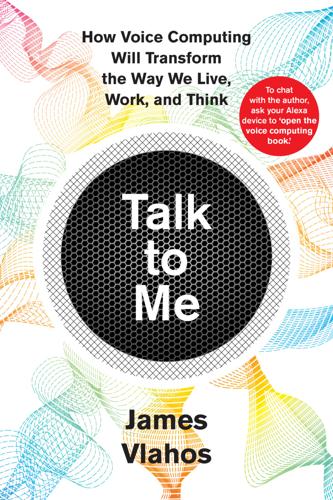
Talk to Me: How Voice Computing Will Transform the Way We Live, Work, and Think
by
James Vlahos
Published 1 Mar 2019
An ingenious programmer, he spent a few minutes cranking out some code that would enable a computerized agent, or bot, to automatically write Hoffer back instead. It worked, and Hoffer got his stock quote. This tiny exchange suggested something much bigger to Hoffer and Kay. At the time, the world was obsessed by the web. Netscape fought Internet Explorer in the browser wars. The search engines AltaVista, Yahoo, and a newcomer called Google battled for the public’s allegiance. Going on quests to find information online was such a cultural phenomenon that it had acquired a sporty nickname—“surfing the web.” Hoffer and Kay, though, weren’t sold on surfing. The stock quote bot had given them a very different idea, one they believed would make interacting with computers more natural, powerful, and fun.

Don't Be Evil: How Big Tech Betrayed Its Founding Principles--And All of US
by
Rana Foroohar
Published 5 Nov 2019
Still, the World Wide Web consisted of billions of items, with more pouring in every second. How could they possibly manage to organize it in such a way that would allow people to find that one specific straw they needed? Let’s say you wanted information on Tim Berners-Lee. The reigning approach of AltaVista, then the leading search engine, assumed that the document you’d most want would be the one with the most mentions of Tim Berners-Lee. Page and Brin thought that was silly. Just because the words appeared many times didn’t mean it would necessarily offer the best, most useful information on the subject.

Custodians of the Internet: Platforms, Content Moderation, and the Hidden Decisions That Shape Social Media
by
Tarleton Gillespie
Published 25 Jun 2018
U.S. lawmakers were regulating a web largely populated by ISPs and amateur web “publishers”—amateurs posting personal pages, companies designing stand-alone websites, and online communities having discussions. Besides the ISPs that provided access to the network, the only intermediaries at the time were those ISPs that doubled as content “portals,” like AOL and Prodigy; the earliest search engines, like Altavista and Yahoo; and operators of BBS systems, chatrooms, and newsgroups. The law predates not just Facebook but MySpace, Friendster, and Livejournal; not just YouTube but Veoh and Metacafe; not just Soundcloud but Last.fm and Lala, as well as Napster and its peer-to-peer brethren; even Google. Blogging was in its infancy, well before the invention of large-scale blog-hosting services like Blogspot and Wordpress; eBay, Craigslist, and Match.com were less than a year old; and the ability to comment on a web page had not yet been modularized into a plug-in.

The Crux
by
Richard Rumelt
Published 27 Apr 2022
Almost every company had a listing, with those paying more having larger ads. Could he build a search engine where companies paid for their positions in the results? Gross’s idea was to make search more effective and to also solve the other part of the challenge plaguing the industry—how to make any money. He explained that search engines like Yahoo, AltaVista, and Lycos take some keywords and try to find websites that the words describe. “At GoTo we let people bid on the keywords—the site bidding the most gets its search result placed first, the second-highest bidder places second, and so on.” Then GoTo listed all the sites that didn’t bid at all. He explained that “when someone clicks on the search result, we collect the fee.

Silence on the Wire: A Field Guide to Passive Reconnaissance and Indirect Attacks
by
Michal Zalewski
Published 4 Apr 2005
. -- [2] An example ------------------------------------------------------------- When this idea came to mind, I tried to use the simplest test just to see if I was right. I targeted, if that is the correct word, several general-purpose web-indexing crawlers. I created a very short HTML document and put it somewhere on my home page and then waited for a couple of weeks. And they came -- AltaVista, Lycos, and dozens of others. They found new links, picked them up enthusiastically, and then disappeared for days. bigip1-snat.sv.av.com: GET /indexme.html HTTP/1.0 sjc-fe5-1.sjc.lycos.com: GET /indexme.html HTTP/1.0 [...] They came back later to see what I had given them to parse. http://somehost/cgi-bin/script.pl?

Age of Discovery: Navigating the Risks and Rewards of Our New Renaissance
by
Ian Goldin
and
Chris Kutarna
Published 23 May 2016
To translate just one sliver, the full English edition of Wikipedia, into just one other major language would cost at least $100 million and take over 10,000 person-years.20 Even if someone were willing to pay for it, there may not be enough translators living to make the attempt, depending on the destination language. Computer-driven translation engines can automate the task somewhat; they can often give us the gist of what a foreign utterance means. But as users of every engine from the 1990s’ AltaVista Babelfish to today’s Google Translate can attest, much meaning, most clarity and all style are still lost in translation. That’s because whereas human translators start by recognizing the whole meaning of the source and then try to express it faithfully in destination-language terms, computers start by recognizing individual words—or at best, phrases—and then stitch together foreign analogs with no conception of the overall result.

Culture & Empire: Digital Revolution
by
Pieter Hintjens
Published 11 Mar 2013
I still have a book that has the entire World Wide Web printed as an appendix. Then the list got too long to print and sites like Yahoo! organized them into categories. Then the category list got too large to keep updated, and Lycos invented the full-text search. This was too slow, so Digital Equipment Corporation built a natty search engine called Altavista to show how to do it properly. The results for any search got too long, so Google invented the ranked search, which pretty much fixed the search issue. Google also threw all the clutter off the main page. Less is more. The dot-com boom bubbled in 1999, driven by the dream of cheap access to millions -- no, billions -- of consumers.
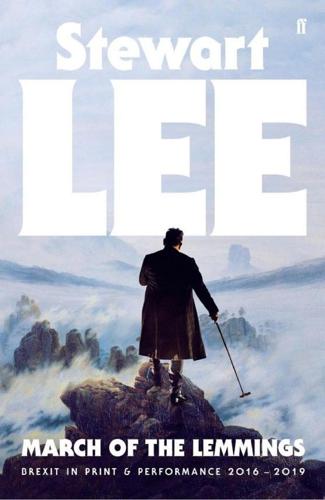
March of the Lemmings: Brexit in Print and Performance 2016–2019
by
Stewart Lee
Published 2 Sep 2019
Nothing. 156 I do remember getting online, when an Internet was set up for the first time for me and Richard Herring in our writers’ office at Avalon’s HQ in Leicester Place, in around 1997, and wondering what would happen if I put Green on Red’s 1981 EP Two Bibles and Markley, A Group’s 1970 album Markley, A Group – two records that had been on my wants list for a while – into the AltaVista search engine. And when I realised that all that stood between me and them was raising the rather large sums the dealers wanted for them, my heart sank a little. It was all over, the great record-collecting adventure, and now those record-collector heroes of the post-war era who invented the concept of Delta blues as a thing by going round shacks in the Deep South with handfuls of cash, would be at home, pallid and unhealthy, clicking online buttons in dimly lit rooms. 157 The trick in performance here was to have talked about general nostalgia so much that when I suddenly doubled back into talking specifically about S&M, it was a shocking and funny surprise. 158 I do think this, so it was easy to perform with conviction, but I am also aware it is ludicrous. 159 I have set this routine in the rural Worcestershire landscapes that I remember my adoptive mother’s parents describing to me as a child.

System Error: Where Big Tech Went Wrong and How We Can Reboot
by
Rob Reich
,
Mehran Sahami
and
Jeremy M. Weinstein
Published 6 Sep 2021
Seeking to remain competitive in attracting and retaining users, internet platforms will continue to moderate content themselves. If the platforms become overwhelmed by hate speech and fake content, some users may seek out alternatives—as will some advertisers, the platforms’ key revenue source. This dynamic already played out once in the early days of the internet as pioneering search engines such as AltaVista, Lycos, and Excite became clogged with spam web pages more intent on selling products than on providing users with the information they were looking for. Those early search engines were quickly displaced by Google, whose new search technology was much more effective at down-ranking or eliminating spam pages in the results users received.

The Millionaire Fastlane: Crack the Code to Wealth and Live Rich for a Lifetime
by
Mj Demarco
Published 8 Nov 2010
Skip the big idea and go for the big execution. You don't need an idea that has never been done before. Old ideas suffice; just take it and do it better! Execute like no one has! Years ago, what if Sergey Brin and Larry Page looked at the Internet landscape and said “Gee, there are plenty of search engines out there-Yahoo, Snap, AltaVista-why start Google? It's being done!” Thankfully, they didn't, and now Google is the most used search engine, and because of it, Brin and Page are now billionaires. A brand-spanking new idea? Nope, a need solved better with big execution. Department stores have been around for decades, but that didn't stop Sam Walton from creating Wal-Mart.

Chokepoint Capitalism
by
Rebecca Giblin
and
Cory Doctorow
Published 26 Sep 2022
Actually, it was worse than that, because these papers now had to worry that if they had a shortfall, they might not be able to make payments on the presses and plants and buildings they’d once owned and now leased. Newspapers responded by building up their online advertising, monetizing the huge growth in reach that came as people shifted their attention online. In the early 2000s, the web was open, with a seemingly infinite number of publishers and numerous search engines (anyone remember AltaVista?) and ad networks. Those conditions briefly helped online media to flourish, and in 2006, US newspapers generated record revenues: almost $50 billion, up from $38 billion just a decade before. But then Google achieved dominance over search advertising, and Facebook over social media. That was the beginning of the end.
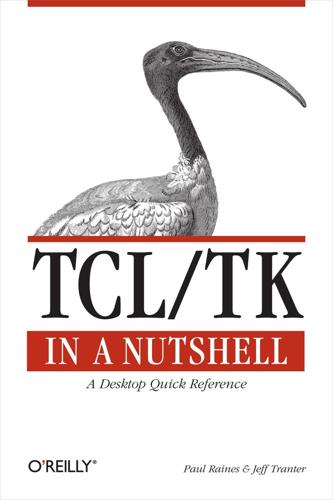
Tcl/Tk in a Nutshell
by
Paul Raines
and
Jeff Tranter
Published 25 Mar 1999
Much of the material in this chapter was selected from postings to the Usenet newsgroup comp.lang.tcl. Beginning programmers often seek help with coding problems, and suggested answers are given. These postings, along with the author's personal experiences, are presented here. Note Web addresses change over time. Use web search engines such as Yahoo!, AltaVista, Infoseek, and HotBot to help locate the Tcl FAQs if the links noted are out of date. Other excellent sources of "how to" material available on the Web include these: The Tcl Frequently Asked Questions (FAQ), by Larry Virden This is an up-to-date, comprehensive list of frequently asked questions and answers—well worth reading.
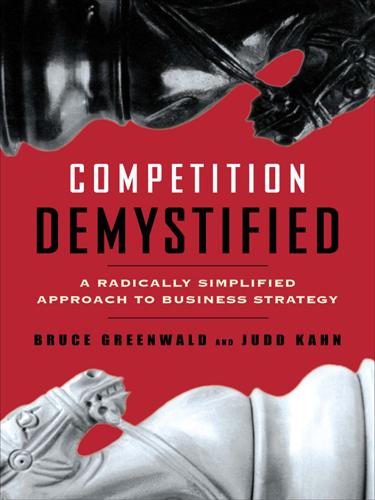
Competition Demystified
by
Bruce C. Greenwald
Published 31 Aug 2016
In 1997 the company bought Tandem Computers, a firm that specialized in producing fault-tolerant machines designed for uninterruptible transaction processing. A year later it bought Digital Equipment Corporation, a former engineering star in the computing world which had fallen from grace as its minicomputer bastion was undermined by the personal computer revolution. At the time of the purchase, Compaq wanted DEC for its consulting business, its AltaVista Internet search engine, and some in-process research. Technology acquisitions are notoriously hard to digest, and Tandem and DEC were no exceptions. Compaq lost its focus on operational efficiency, its own profitability plummeted, and in 2002, it sold itself to Hewlett-Packard. The Compaq story is so intertwined with the history of the PC that it is easy to miss the more general significance.

The Coddling of the American Mind: How Good Intentions and Bad Ideas Are Setting Up a Generation for Failure
by
Greg Lukianoff
and
Jonathan Haidt
Published 14 Jun 2018
She calls the generation after the Millennials iGen (like iPhone), which is short for “internet generation,” because they are the first generation to grow up with the internet in their pockets. (Some people use the term Generation Z.) Sure, the oldest Millennials, born in 1982, searched for music and MapQuest directions using Netscape and AltaVista on their Compaq home computers in the late 1990s, but search engines don’t change social relationships. Social media does. Marking the line between generations is always difficult, but based on their psychological profiles, Twenge suggests that 1994 is the last birth year for Millennials, and 1995 is the first birth year for iGen.

Gambling Man
by
Lionel Barber
Published 3 Oct 2024
Masa replied: ‘Jerry, everyone needs $100m.’12 Yahoo! needed millions to invest to establish itself as a top-class consumer brand, Masa argued. When Yang and Filo continued to stall, he turned to Gary Rieschel, SoftBank’s new venture capital recruit, and asked him to name Yahoo!’s top competitors. Rieschel: Well, there’s Lycos, Excite and AltaVista. Masa: Which is the strongest competitor to Yahoo!? Rieschel: Excite. Well, said Masa, with a touch of menace, ‘If I don’t invest in Yahoo!, I will invest in Excite and I will kill you.’ The room fell silent. Don Valentine, the battle-hardened Sequoia founder whom Moritz had brought along as extra muscle, took Yang aside: ‘He might just be crazy enough to give the money to someone else,’ said Valentine.

Frommer's Mexico 2009
by
David Baird
,
Lynne Bairstow
,
Joy Hepp
and
Juan Christiano
Published 2 Sep 2008
Now a museum, the Rivera studio holds some of the artist’s personal effects and mementos, as well as changing exhibits relating to his life and work. (Don’t confuse Rivera’s studio with his museum, the Anahuacalli; see above.) The museum is not accessible by Metro. Museo Estudio Diego Rivera Calle Diego Rivera and Av. Altavista (across from San Angel Inn), Col. San Angel. & 55/5616-0996. Admission $1 (50p); free Sun. Tues–Sun 10am–6pm. By taxi, go up Insurgentes Sur to Altavista and make a left. During Lenin’s last days, Stalin and Trotsky fought a silent battle for leadership of the Communist Party in the Soviet Union. Trotsky stuck to ideology, while Stalin took control of the party mechanism.
…
If you’re coming from San Angel, the quickest and easiest way is to take a cab for the 15minute ride to the Plaza Hidalgo. Francisco Sosa, a beautiful cobblestone street surrounded by old aristocratic homes, is the main artery into Coyoacán from San Angel, which you can also walk. Or you can catch the Alcantarilla–Col. Agrarista bus heading east along the Camino al Desierto de los Leónes or Avenida Altavista, near the San Angel Inn. Get off when 103 the bus reaches the corner of Avenida México and Xicoténcatl in Coyoacán. San Angel Eight kilometers (5 miles) south of the city center, San Angel (sahn ahn-hehl) was once a weekend retreat for Spanish nobles but has long since been absorbed by the city.

The Rough Guide to Mexico
by
Rough Guides
Published 15 Jan 2022
There are also plenty of peseros from the bus stands by Metro Chapultepec or Tasqueña for services along the Calzada de Tlalpan and to the southwest of the city, above all to Xochimilco. If you’d rather stick to the Metro, take line 3 to Miguel Ángel de Quevedo, between San Ángel and Coyoacán. To Coyoacán If you don’t fancy walking from San Ángel (see page 107), buses head down Altavista by the San Ángel Inn; from the centre, buses leave from Metros Chapultepec, Insurgentes or Cuauhtémoc. In each case look for “Coyoacán” or “Colonia del Valle/Coyoacán”. There’s also a trolleybus which runs in both directions along Lázaro Cárdenas. Metro line 3, too, passes close by, though note that Viveros station is considerably closer to the action than Coyoacán station: from Viveros, walk south on Av Universidad, then turn left (east) to reach the centre.
…
Elsewhere, check out the extensive displays on daily life in New Spain and a collection of eighteenth-century oils by Cristóbal de Vallalpando. Museo Casa Estudio Diego Rivera y Frida Kahlo and the San Ángel Inn Diego Rivera 2 • Tues–Sun 11am–4.45pm • Charge, free Sun • http://inba.gob.mx/recinto/51 From central San Ángel, it’s just over half a kilometre along Altavista to the Museo Casa Estudio Diego Rivera y Frida Kahlo, a pair of modernist houses built for Diego Rivera and Frida Kahlo in 1931–32 by the leading contemporary architect, Juan O’Gorman. Tucked behind an organ cactus fence opposite the prestigious San Ángel Inn restaurant (see page 125) sits a small compound with a large maroon-coloured house (Diego’s) and a much smaller blue abode (Frida’s), connected by a rooftop causeway.
…
A fun little spot and especially convenient if you have tickets for a show at the nearby Teatro Helenico. With dishes from around the world, the menu does pack a wow factor, although the portions tend to be on the smaller side. The restaurant also offers valet parking and good city views from the terrace. M$$$$ San Ángel Inn Diego Rivera 50, at Altavista; http://sanangelinn.com; Metrobús Dr Gálvez. Popular with visiting dignitaries and tourists, this late seventeenth-century former Carmelite monastery has been an elegant restaurant with a sumptuous garden setting since 1915. The menu has European overtones, but is mainly Mexican, featuring starters such as huitlacoche crêpes, and mains such as chiles stuffed with meat and cheese, plus fine wine or margaritas to accompany it.

Digital Photography: The Missing Manual
by
Chris Grover
and
Barbara Brundage
Published 7 Jul 2006
When you post a photo, you're encouraged to provide a note that describes the photo and the place. Many of the notes are beautifully written and, as you might imagine, it's not unusual to find a photo with comments and critiques written in a few different languages. Fortunately, TrekEarth also provides translation links via Babel Fish (http://babelfish.altavista.com). Chapter 15. Emailing Your Photos Ever since Kodak rolled out the Brownie camera, photographers have been slipping snapshots into envelopes and sending them off to friends and family. The same thing goes on today, but with email, it's faster and cheaper. Emailing photos takes just a few clicks and costs nothing (assuming you already have an email account).

The Attention Merchants: The Epic Scramble to Get Inside Our Heads
by
Tim Wu
Published 14 May 2016
By the late 1990s, as Microsoft’s content initiative faded, word was spreading about a new company named Google, whose specialty was search. Search became a major application as the Internet got more populated, fast becoming wild and woolly, too vast to tune in to like a TV channel. There were a number of search engines running—Lycos, Magellan, AltaVista, Excite, Yahoo!, which originally launched as an Internet directory, to name a few. But it was soon clear that Google did search better than anyone else; its inventors were smart, its algorithm was wicked, and its code was tight. With a simple search box placed on a white page, it was both elegant and technically a quantum leap over what was then available.

Twitter and Tear Gas: The Power and Fragility of Networked Protest
by
Zeynep Tufekci
Published 14 May 2017
This is true even for nonsocial platforms like eBay (where buyers know that the largest number of sellers are offering items, and sellers know that the largest number of buyers will see their items). It is true that network effects did not provide absolute protection early in the race to commercialize the internet: MySpace was beaten out by Facebook, for example, and Yahoo and Altavista by Google—they had gotten started earlier, but had not yet established in as dominant a position. Network effects doesn’t protect companies from initial missteps, especially in the early years before they pulled way ahead of everyone else, and such dominance does not occur independent of the quality of the company’s product.

Networks, Crowds, and Markets: Reasoning About a Highly Connected World
by
David Easley
and
Jon Kleinberg
Published 15 Nov 2010
If there is a way to do this, then this walk can be opened up into a path from A to B in the graph; if there is no way to do this, then there is no path from A to B. 13.4 The Bow-Tie Structure of the Web In 1999, after the Web had been growing for the better part of a decade, Andrei Broder and his colleagues set out to build a global map of the Web, using strongly connected components as the basic building blocks [79]. For their raw data, they used the index of pages and links from one of the largest commercial search engines at the time, AltaVista. Their influential study has since been replicated on other, even larger snapshots of the Web, including an 398 CHAPTER 13. THE STRUCTURE OF THE WEB Figure 13.8: A schematic picture of the bow-structure of the Web (image from [79]). early index of Google’s search engine [55] and large research collections of Web pages [132].
…
Because of the visual effect of IN and OUT as large lobes hanging off the central SCC, Broder et al. termed this the “bow-tie picture” of the Web, with the giant SCC as the “knot” in the middle. The actual sizes of the different 400 CHAPTER 13. THE STRUCTURE OF THE WEB pieces shown in the Figure come from the 1999 AltaVista data, and are long since obsolete — the main point is that all three of these pieces are very large. As Figure 13.8 also makes clear, there are pages that belong to none of IN, OUT, or the giant SCC — that is, they can neither reach the giant SCC nor be reached from it. These can be further classified as (3) Tendrils: The “tendrils” of the bow-tie consist of (a) the nodes reachable from IN that cannot reach the giant SCC, and (b) the nodes that can reach OUT but cannot be reached from the giant SCC.

Be Your Own Financial Adviser: The Comprehensive Guide to Wealth and Financial Planning
by
Jonquil Lowe
Published 14 Jul 2010
Useful sites include: www.fool.co.uk www.ft.com/personal-finance www.moneyexpert.com www.moneyextra.com www.moneyfacts.co.uk www.moneynet.co.uk www.moneysavingexpert.com www.moneysupermarket.com Primary Care Trust (England) www.nhs.uk/servicedirectories/Pages/PrimaryCareTrustListing.aspx Rent-a-Room Relief www.hmrc.gov.uk/manuals/pimmanual/pim4001.htm Safe Home Income Plans (SHIP) 83 Victoria Street London SW1H 0HW Tel: 0844 669 7085 www.ship-ltd.org Scottish Government www.scotland.gov.uk Search engines (examples) www.alltheweb.com www.altavista.com www.dogpile.com www.google.com Simplyhealth www.simplyhealth.co.uk Society of Pension Consultants Tel: 020 7353 1688 www.spc.uk.com Z01_LOWE7798_01_SE_APP.indd 406 05/03/2010 09:51 Appendix B n Useful contacts and further information 407 Society of Trust and Estate Practitioners Artillery House (South) 11–19 Artillery Road London SW1P 1RT Tel: 020 7340 0500 Answerphone for list of members: 020 7340 0506 www.step.org Solicitor – to find one Look in the Yellow Pages under ‘Solicitors’ or contact the following professional bodies for a list of their members in your area: Law Society 113 Chancery Lane London WC2A 1PL Tel: 0870 606 2555 www.lawsociety.org.uk Law Society of Northern Ireland 96 Victoria Street Belfast BT1 3GN Tel: 028 9023 1614 www.lawsoc-ni.org Law Society of Scotland 26 Drumsheugh Gardens Edinburgh EH3 7YR Tel: 0131 226 7411 www.lawscot.org.uk Spread betting firms (examples) www.cityindex.co.uk www.financial-spread-betting.com www.igindex.co.uk Stockbroker – to find one See separate entries for: Association of Personal Client Investment Managers and Stockbrokers London Stock Exchange Z01_LOWE7798_01_SE_APP.indd 407 05/03/2010 09:51 408 Appendix B n Useful contacts and further information Tax advice See separate entries for: Accountants Chartered Institute of Taxation Society of Trust and Estate Practitioners Tax Aid Tax Help for Older People Tax Aid Room 304 Linton House 164–180 Union Street London SE1 0LH Tel: 0845 120 3779 www.taxaid.org.uk Tax Credits Office Tel: 0845 300 3900 www.hmrc.gov.uk/taxcredits Tax Help for Older People Helpline: 0845 601 3321 www.litrg.org.uk/about/activities/index.cfm Tax Office See entry for HM Revenue and Customs.

Data and Goliath: The Hidden Battles to Collect Your Data and Control Your World
by
Bruce Schneier
Published 2 Mar 2015
Think again,” Toronto Star, http://www.commercialalert.org/issues/culture/search-engines/so-you-thought-search-engines-offer-up-neutral-results-think-again. search engines visually differentiated: Gary Ruskin (16 Jul 2001), Letter to Donald Clark, US Federal Trade Commission, re: Deceptive advertising complaint against AltaVista Co., AOL Time Warner Inc., Direct Hit Technologies, iWon Inc., LookSmart Ltd., Microsoft Corp. and Terra Lycos S.A., Commercial Alert, http://www.commercialalert.org/PDFs/SearchEngines.pdf. Heather Hippsley (27 Jun 2002), Letter to Gary Ruskin re: Complaint requesting investigation of various Internet search engine companies for paid placement and paid inclusion programs, US Federal Trade Commission, http://www.ftc.gov/sites/default/files/documents/closing_letters/commercial-alert-response-letter/commercialalertletter.pdf.

Consumed: How Markets Corrupt Children, Infantilize Adults, and Swallow Citizens Whole
by
Benjamin R. Barber
Published 1 Jan 2007
Bean Catalogue (20) Wal-Mart (33) Skechers (NR) New Balance Athletic Shoe (22) Miller Lite (87) Starbucks (6) Radisson (48) BP Gasoline (79) Inter-Continental Hotels (NR) Sears Catalogue (30) Verizon Wireless (37) Schwab.com (26) Diet Coke (47) Mobil Gasoline (25) T-Mobile Wireless (76) Bell South Long Distance (28) Adidas Athletic Shoe (23) ETrade.com (42) J. Crew Catalogue (54) FedEx (50) Westin Hotels (73) Excite.com (35) Hilton Hotels (36) HotBot.com (34) Sanyo Mobile Phone (NR) MSN.com (38) AltaVista.com (51) Like so many traditional consumer product companies, Kodak, a firm whose traditional profits rested on film for traditional cameras and are now under siege from new digital photographic technologies, is not even on the top 200 brands list. With an eye on the new branding philosophy, and a hoped for comeback, it recently shifted its focus from cameras to girls’ identity politics, deciding that by opting for cameras that are both giveaway and throwaway (the money is in developing the film!)
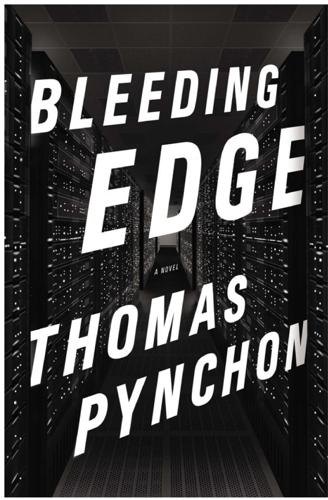
Bleeding Edge: A Novel
by
Thomas Pynchon
Published 16 Sep 2013
“Nah, this is one of the dotcoms that didn’t go under last year in the tech crash. No old software,” half a decibel too quiet, “and maybe no statute of limitations either.” Uh-oh. “’Cause see, if all you want’s an asset search, you don’t need a forensic person really, just go on the Internet, LexisNexis, HotBot, AltaVista, if you can keep a trade secret, don’t rule out the Yellow Pages—” “What I’m really looking for,” solemn more than impatient, “probably won’t be anyplace any search engine can get to.” “Because . . . what you’re looking for . . .” “Just normal company records—daybooks, ledgers, logs, tax sheets.

Grand Transitions: How the Modern World Was Made
by
Vaclav Smil
Published 2 Mar 2021
Similarly, when Tim Berners-Lee released his first World Wide Web browser in March 1991 it was not at all obvious that a near-monopoly in searching would arise. Mosaic, the first popular Internet browser, became available in 1993 and during the next five years, before Google’s launch, there was a mini-universe of search engines, from AltaVista and Ask Jeeves to WebCrawler and Yahoo! Search. But then Google either eliminated the competition or relegated other options to marginal shares, and now anybody with a computer or a mobile phone is able to access most of the reproduced, copied, scanned, or encoded historical, technical, medical, and scientific information—as well as to download any recipe, famous painting, photograph, how-to advice, or out-of-copyright book (leaving aside countless pirated editions of copyrighted texts).
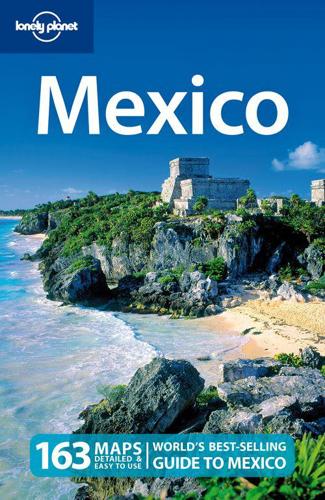
Lonely Planet Mexico
by
John Noble
,
Kate Armstrong
,
Greg Benchwick
,
Nate Cavalieri
,
Gregor Clark
,
John Hecht
,
Beth Kohn
,
Emily Matchar
,
Freda Moon
and
Ellee Thalheimer
Published 2 Jan 1992
About 50m west of the plaza is the 16th-century Iglesia de San Jacinto (Map) and its peaceful gardens. MUSEO CASA ESTUDIO DIEGO RIVERA Y FRIDA KAHLO If you saw the movie Frida, you’ll recognize this museum (Diego Rivera & Frida Kahlo Studio Museum; Map; 5550-1518; www.museoestudiodiegorivera.es.tl, in Spanish; Diego Rivera 2, cnr Av Altavista; admission M$10, free Sun; 10am-6pm Tue-Sun), 1km northwest of Plaza San Jacinto. Designed by their friend, the architect and painter Juan O’Gorman, the innovative abode was the home of the artistic couple from 1934 to 1940, with a separate house for each of them. Rivera’s house preserves his upstairs studio, while Frida’s (the blue one) has changing exhibits from the memorabilia archives.
…
Thought to be the bodies of 17th-century benefactors of the order, they were uncovered during the revolution by Zapatistas looking for buried treasure. MUSEO DE ARTE CARRILLO GIL One of the city’s first contemporary art spaces, this museum (Map; 5550-6260; Av Revolución 1608; admission M$15, free Sun; 10am-6pm Tue-Sun; Altavista) was founded by Yucatecan businessman Álvaro Carrillo Gil to store a large collection of works that he had amassed over many years. Unfortunately, he died several months after the 1974 inauguration. Long ramps in the center of the remodeled building lead up to cutting-edge temporary exhibits and some of the lesser-known works by Diego Rivera, José Clemente Orozco and David Alfaro Siqueiros.
…
The Spanish-language website MejorTeatro (www.mejorteatro.com.mx, in Spanish) covers the major venues. Performances are generally Thursday to Sunday evenings with weekend matinees. Other cultural options: Centro Cultural Helénico (Map; 4155-0919; www.helenico.gob.mx, in Spanish; Guadalupe Inn, Av Revolución 1500; tickets M$250-400; Altavista) Complex includes 450-seat Teatro Helénico for major productions and cabaret-style La Gruta theater. Foro Shakespeare (Map; 5553-4642; www.foroshakespeare.com, in Spanish; Zamora 7, Condesa; tickets M$150-280; Chapultepec) Small independent theater with eclectic program. Teatro Blanquita (Map; 5512-8264; Eje Central Lázaro Cárdenas 16, Centro; tickets from M$175; Bellas Artes) Classic variety theater and concert venue near Plaza Garibaldi.

Peer-to-Peer
by
Andy Oram
Published 26 Feb 2001
The classic case of an organized manual database is the original Yahoo! directory. This database was filled by organizing an army of people to put in data manually. Another example is the old legal databases where armies of typists were paid to retype printed material into computers. The original AltaVista is an example of an organized mechanical database. A program running on powerful computers followed links and domain names and spidered the Web, saving the information as it went. Many databases on the Web today are mechanically created by getting access to somebody else’s data, sometimes for a fee.
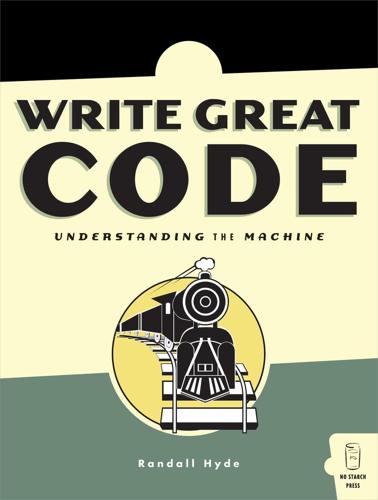
Write Great Code, Volume 1
by
Randall Hyde
Published 6 Aug 2012
It is sufficiently large and complex that space limitations prevent its inclusion here. Readers interested in a deeper look at SCSI programming should refer to The Book of SCSI (by Gary Field, Peter M. Ridge, et al., published by No Starch Press). The complete SCSI specifications appear at various sites on the Web. A quick search for “SCSI specifications” on AltaVista, Google, or any other decent Web search engine should turn up several copies of the specifications. 12.20 The IDE/ATA Interface Although the SCSI interface is very high performance, it is also expensive. A SCSI device requires a sophisticated and fast processor in order to handle all the operations that are possible on the SCSI bus.

Elon Musk
by
Walter Isaacson
Published 11 Sep 2023
“Let’s find an acquirer and make some money, so you can do your second, third, and fourth company.” The millionaire In January 1999, less than four years after Elon and Kimbal launched Zip2, Proudian called them into his office and told them that Compaq Computer, which was seeking to juice up its AltaVista search engine, had offered $307 million in cash. The brothers had split their 12 percent ownership stake 60–40, so Elon at age twenty-seven walked away with $22 million and Kimbal with $15 million. Elon was astonished when the check arrived at his apartment. “My bank account went from, like, $5,000 to $22,005,000,” he says.
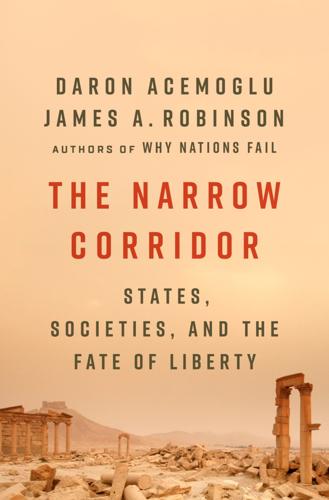
The Narrow Corridor: States, Societies, and the Fate of Liberty
by
Daron Acemoglu
and
James A. Robinson
Published 23 Sep 2019
The most important is the nature of the technology of these new companies, which creates what economists call “winner take all” dynamics. Take Google, for instance. Founded in 1998, when there were already several successful search engines for the Internet, Google quickly distinguished itself because of its superior search algorithm. While its competitors, such as Yahoo! and AltaVista, ranked websites by the number of times they included the term being searched for, the founders of Google, Sergei Brin and Larry Page, came up with a much better approach when they were graduate students at Stanford University. This approach, which came to be called the PageRank algorithm, ranked a web page according to its relevance estimated from how many other pages also mentioning the search term linked to this website.

Ajax: The Definitive Guide
by
Anthony T. Holdener
Published 25 Jan 2008
Chapter 16, Search: The New Frontier Chapter 17, Introducing Web Services Chapter 18, Web Services: The APIs Chapter 19, Mashups Chapter 20, For Your Business Communication Needs Chapter 21, Internet Games Without Plug-ins Chapter 16 CHAPTER 16 Search: The New Frontier 16 Search has long been a critical component of the Web. Without a search capability, a vast amount of the Web would never be viewed. Even before Google, the likes of Yahoo!, Excite, AltaVista, and WebCrawler were serving up search results to the public so that the Web could live up to its potential as a useful communication medium. As time went on, site searching became more sophisticated and companies began to offer more specialized searching. Think of the types of search Google offers, for instance—web, images, blogs, books, groups, and so on.

Artificial Intelligence: A Modern Approach
by
Stuart Russell
and
Peter Norvig
Published 14 Jul 2019
Density Estimation for Statistics and Data Analysis. Chapman and Hall. Shapley, L. S. (1953a). A value for n–person games. In Kuhn, H. W. and Tucker, A. W. (Eds.), Contributions to the Theory of Games. Princeton University Press. Silverstein, C., Henzinger, M., Marais, H., and Moricz, M. (1998). Analysis of a very large AltaVista query log. Tech. rep., Digital Systems Research Center. Simmons, R. and Koenig, S. (1995). Probabilistic robot navigation in partially observable environments. In IJCAI-95. Simon, D. (2006). Optimal State Estimation: Kalman, H Infinity, and Nonlinear Approaches. Wiley. Simon, H. A. (1947). Administrative Behavior.